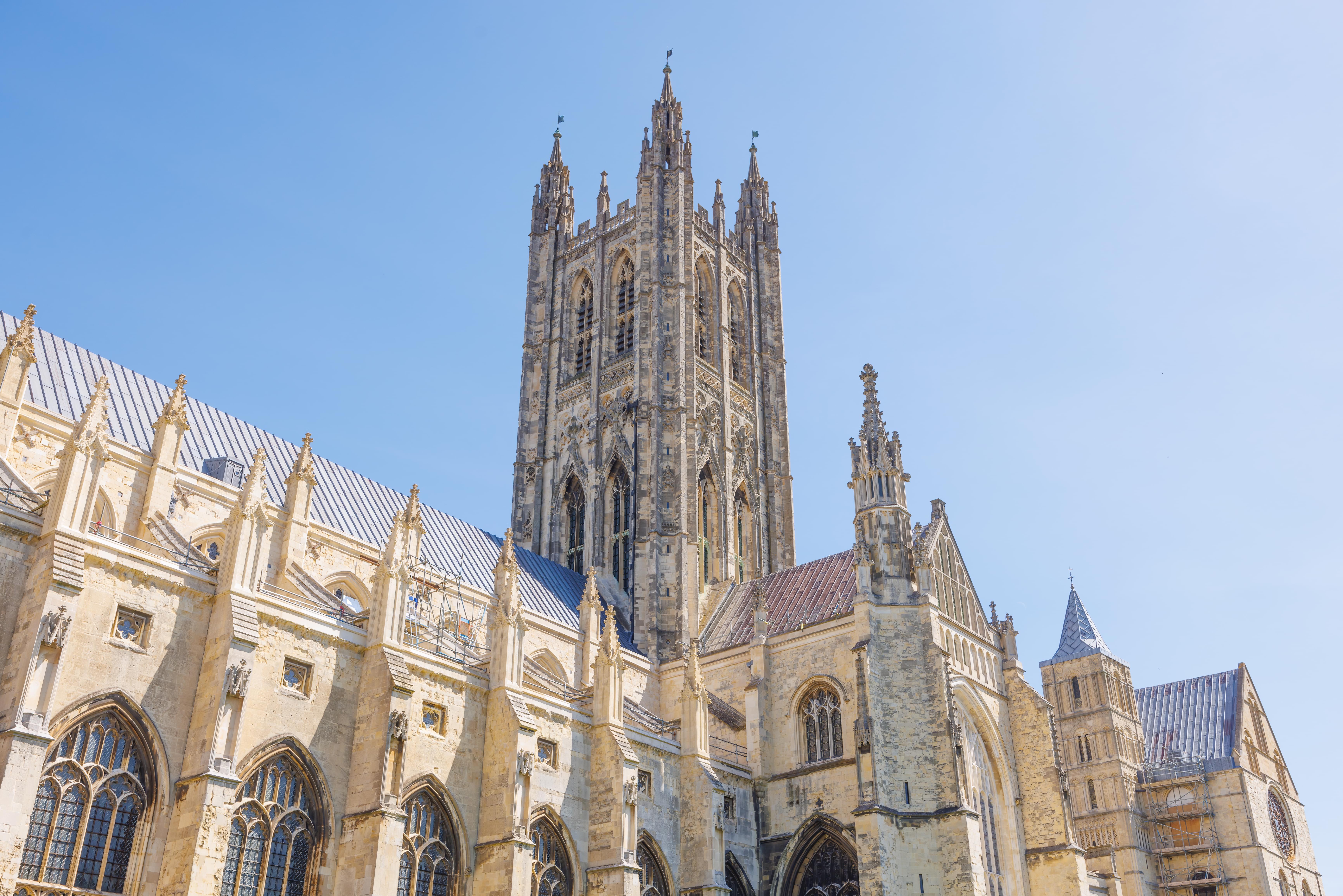Yesterday, we tried to visit Canterbury Cathedral but found it closed due to filming. Last night, we found out our flight home today would be delayed due to crew rest requirements. We ended up having some extra time and were able to visit the cathedral!
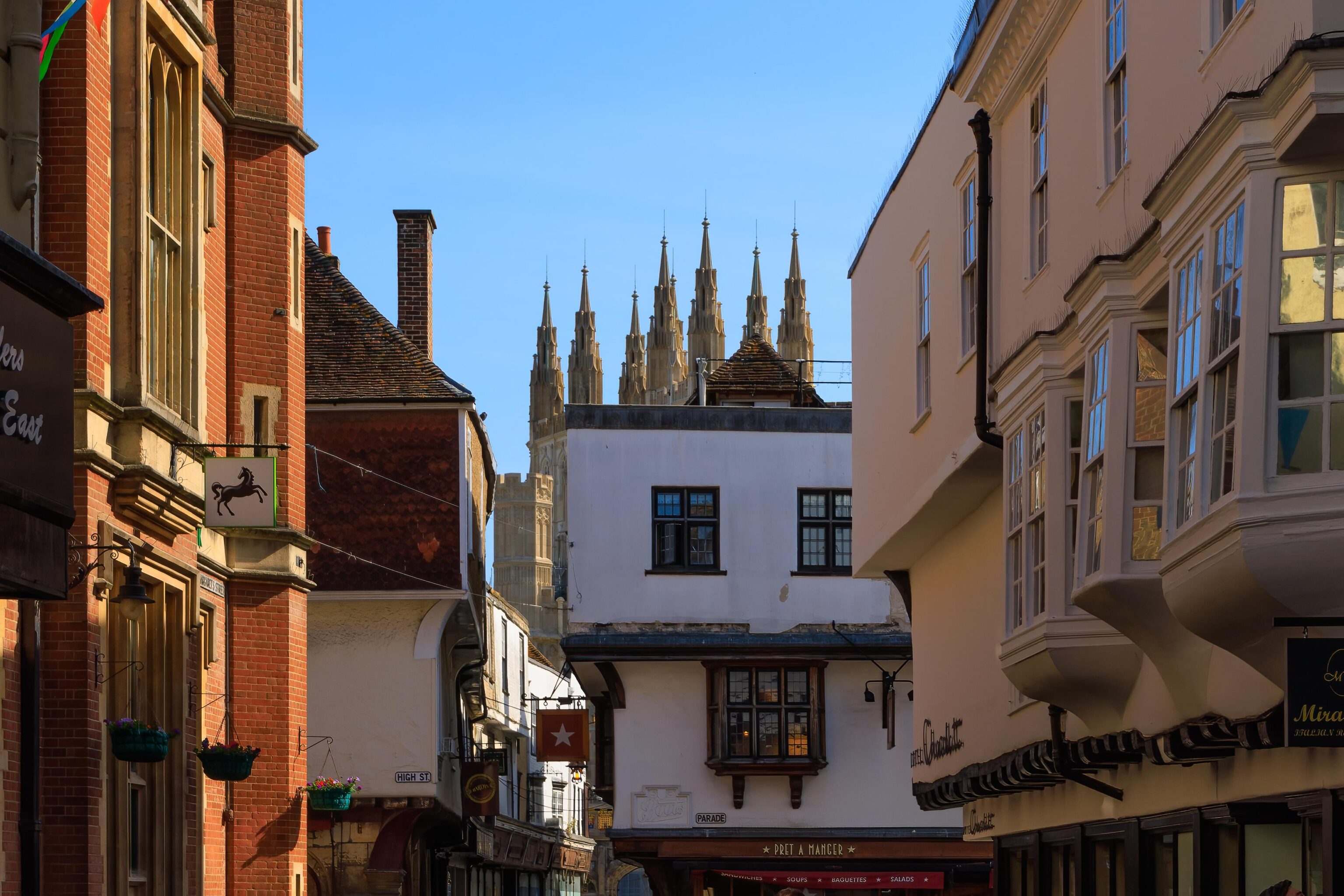
Like yesterday morning, we started out on the street that leads to the cathedral’s main gate. We could see some spires towering above but not much else.
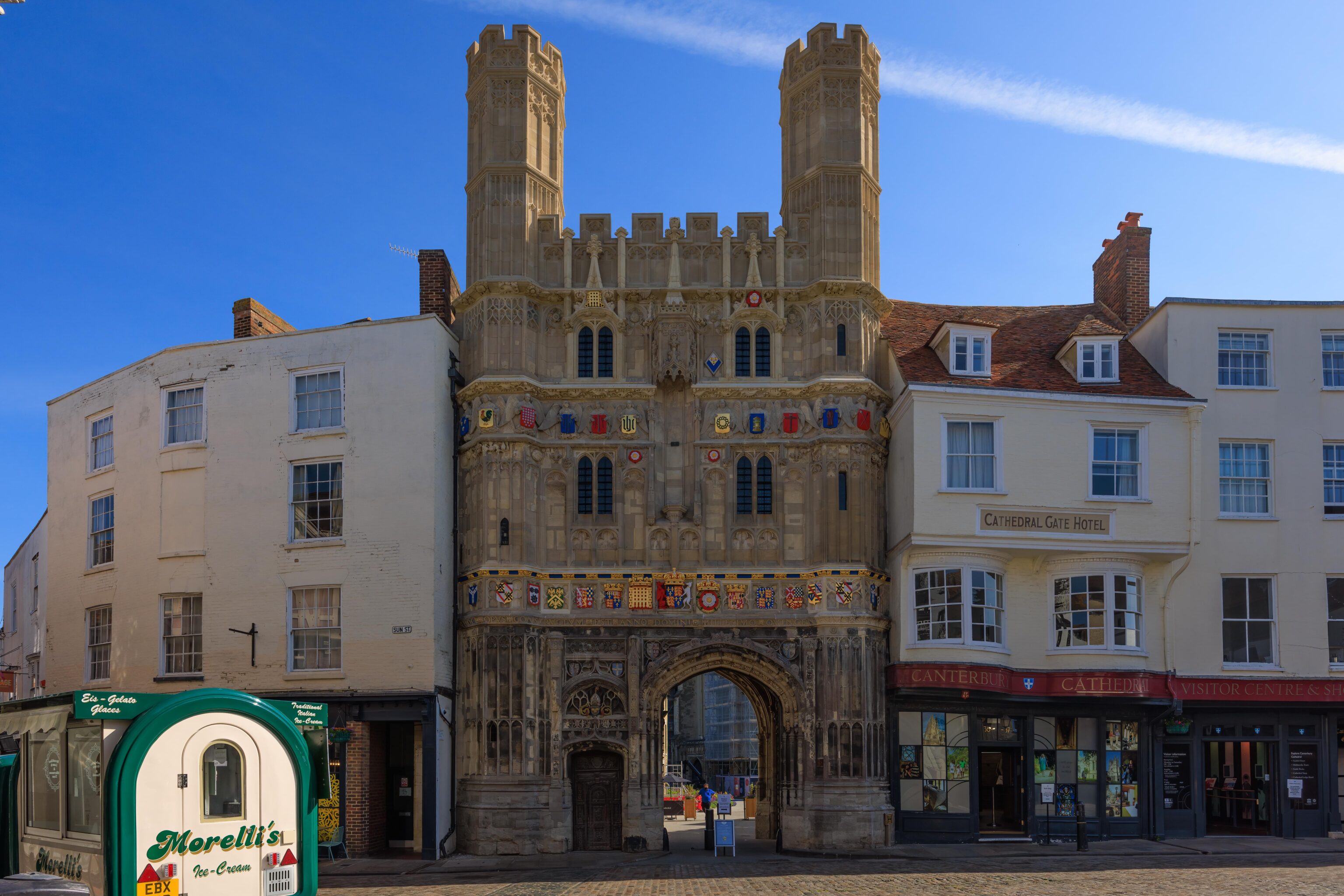
It was pretty quiet around the gate when we arrived. We bought tickets from the ticket counter on the right. There is a 20% discount for English Heritage members which we were able to take advantage of.
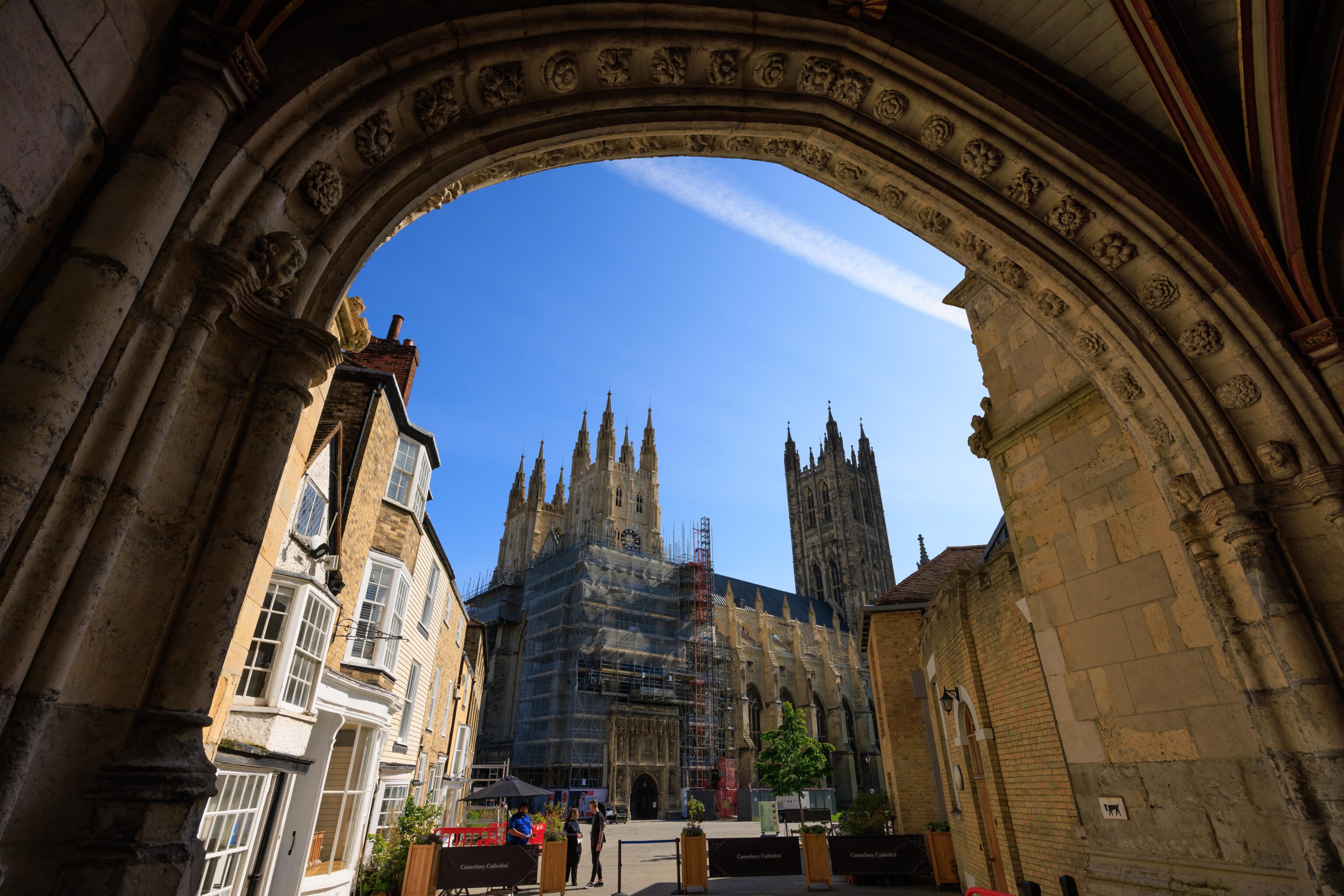
It is possible to go directly into the cathedral property from the rear of the ticket office. But on the advice of the staff, we went for the more scenic approach through the gate! This was our first look at the lower portions of the cathedral building. There is some renovation activity going on in the front of the building with quite a bit of scaffolding.
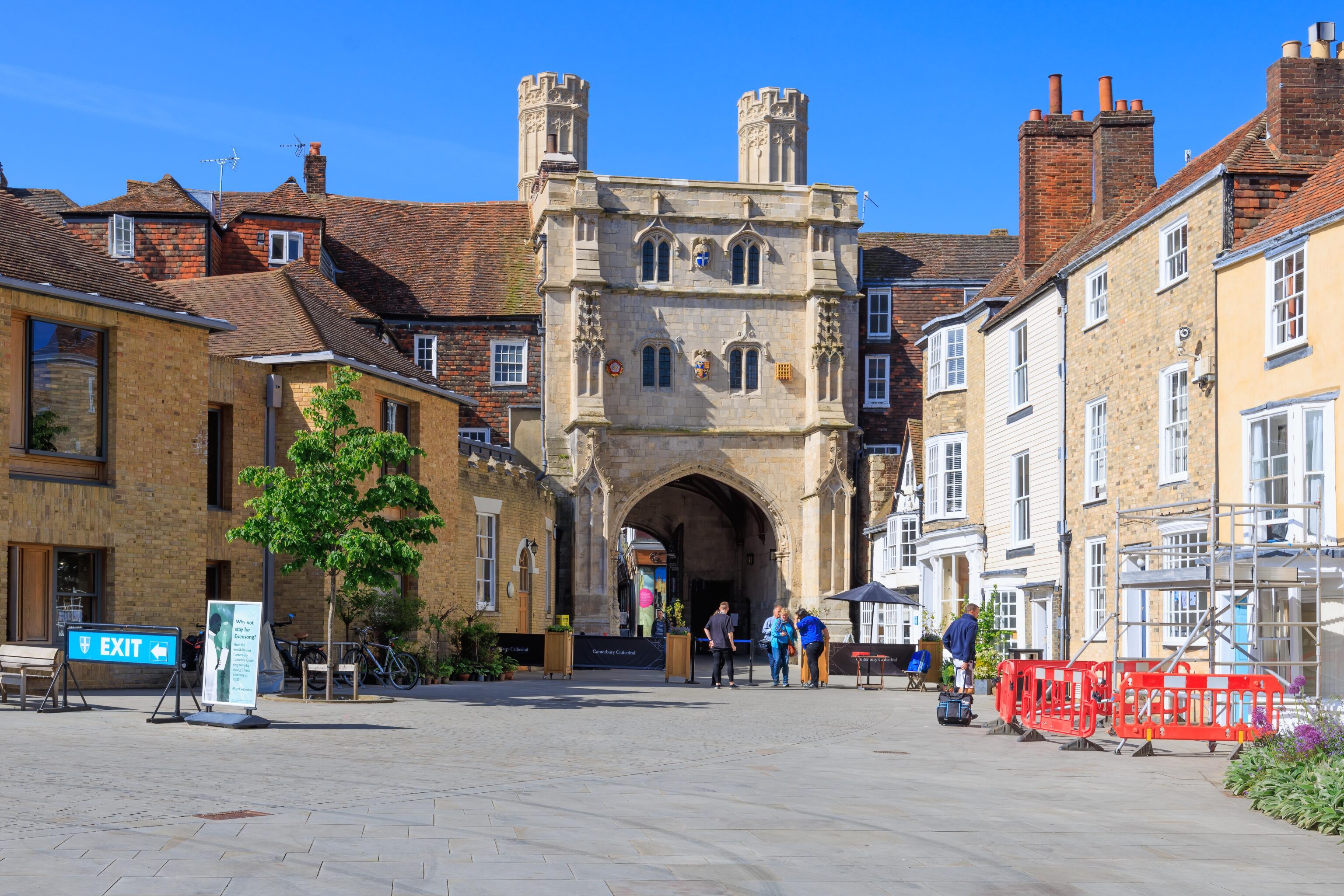
Looking back at the gate that we passed under to exit. The ticket office, as well as gift shop, are on the left by the blue exit sign.
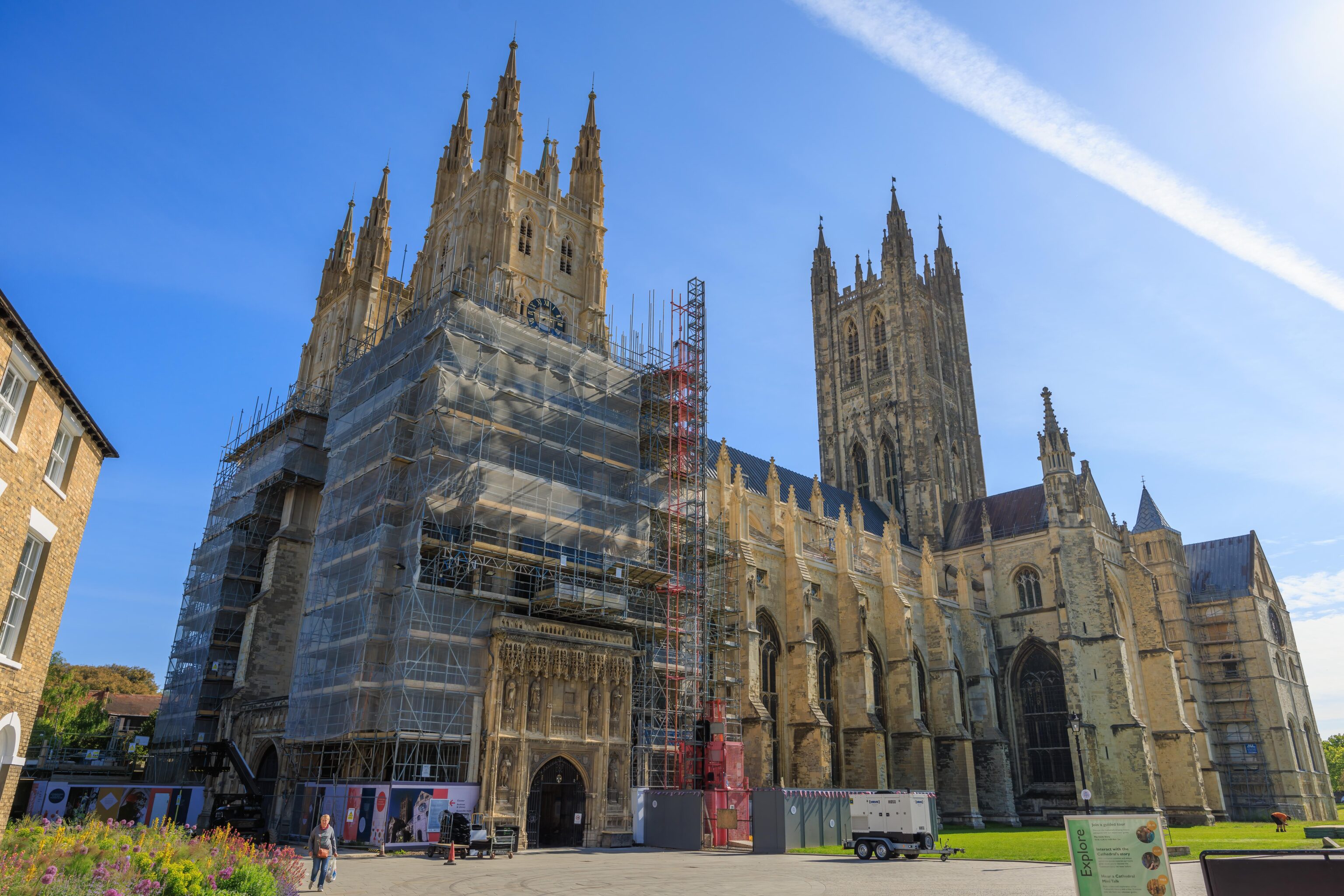
The cathedral building is huge and there isn’t really possible to move back too far for photography. We entered through the door that is framed by scaffolding, to the left of the red construction elevator.
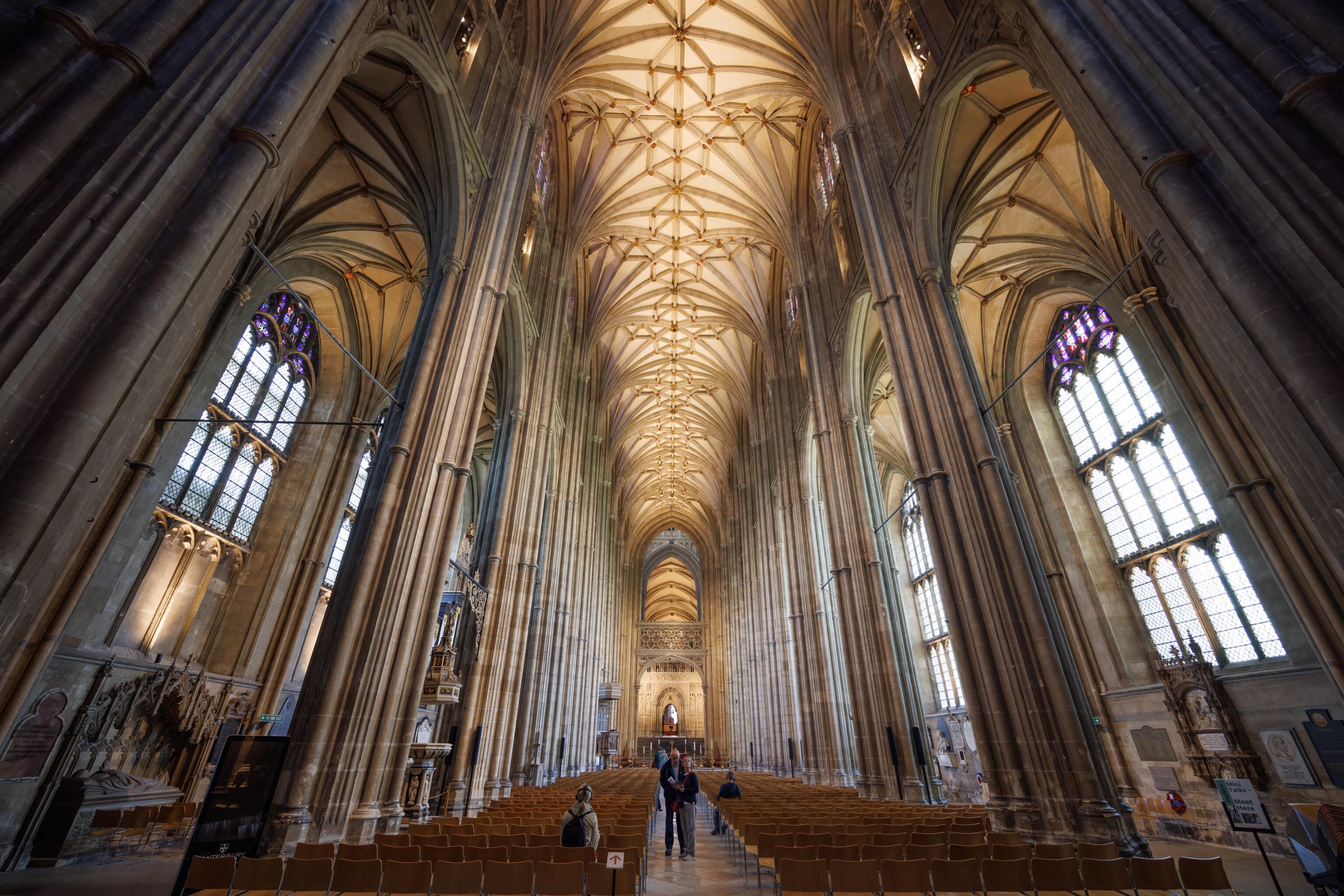
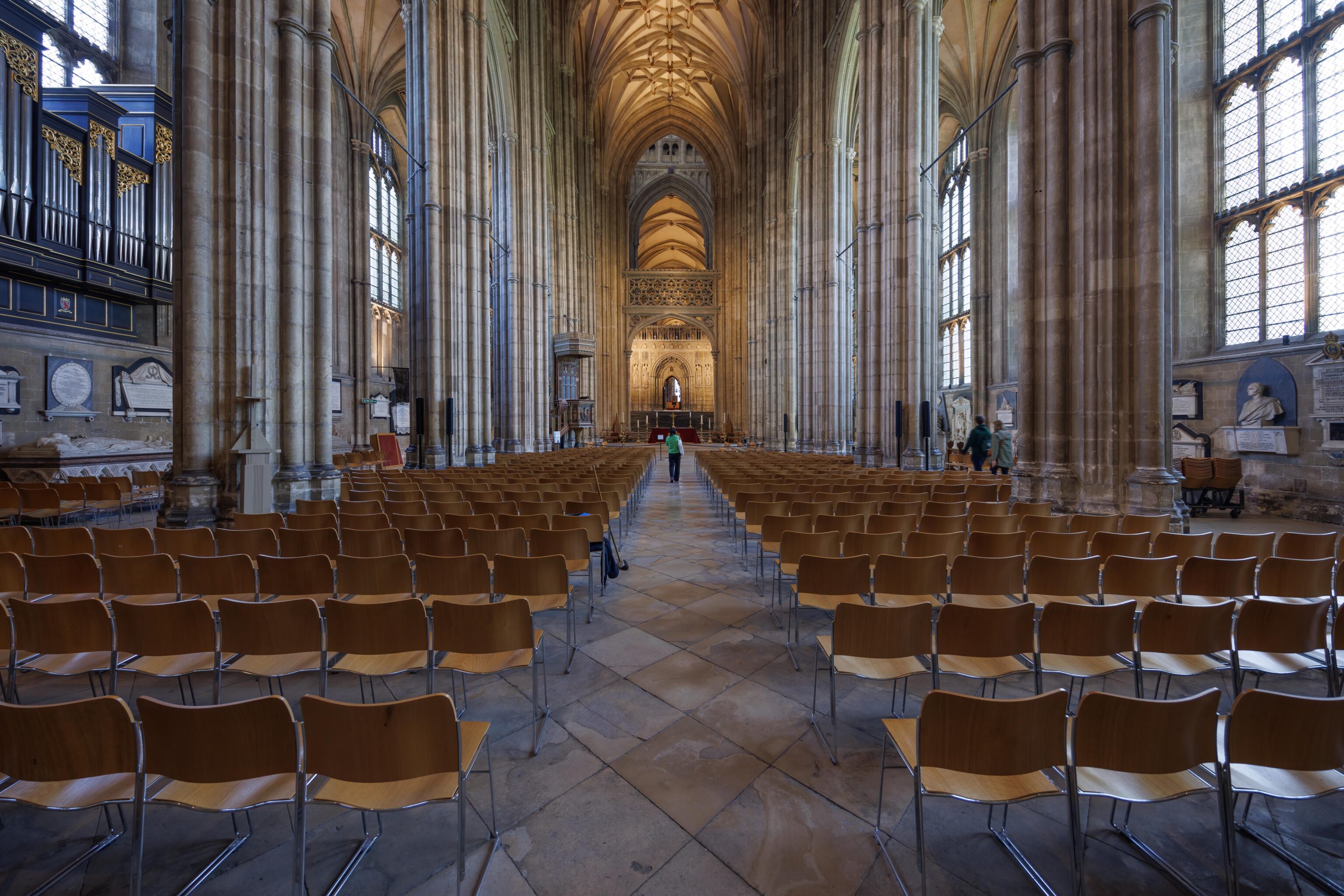
The interior is exactly what one would expect from a cathedral! It wasn’t very busy when we arrived, just a few people here and there. There were not fixed wooden pews in the nave like in many other churches.
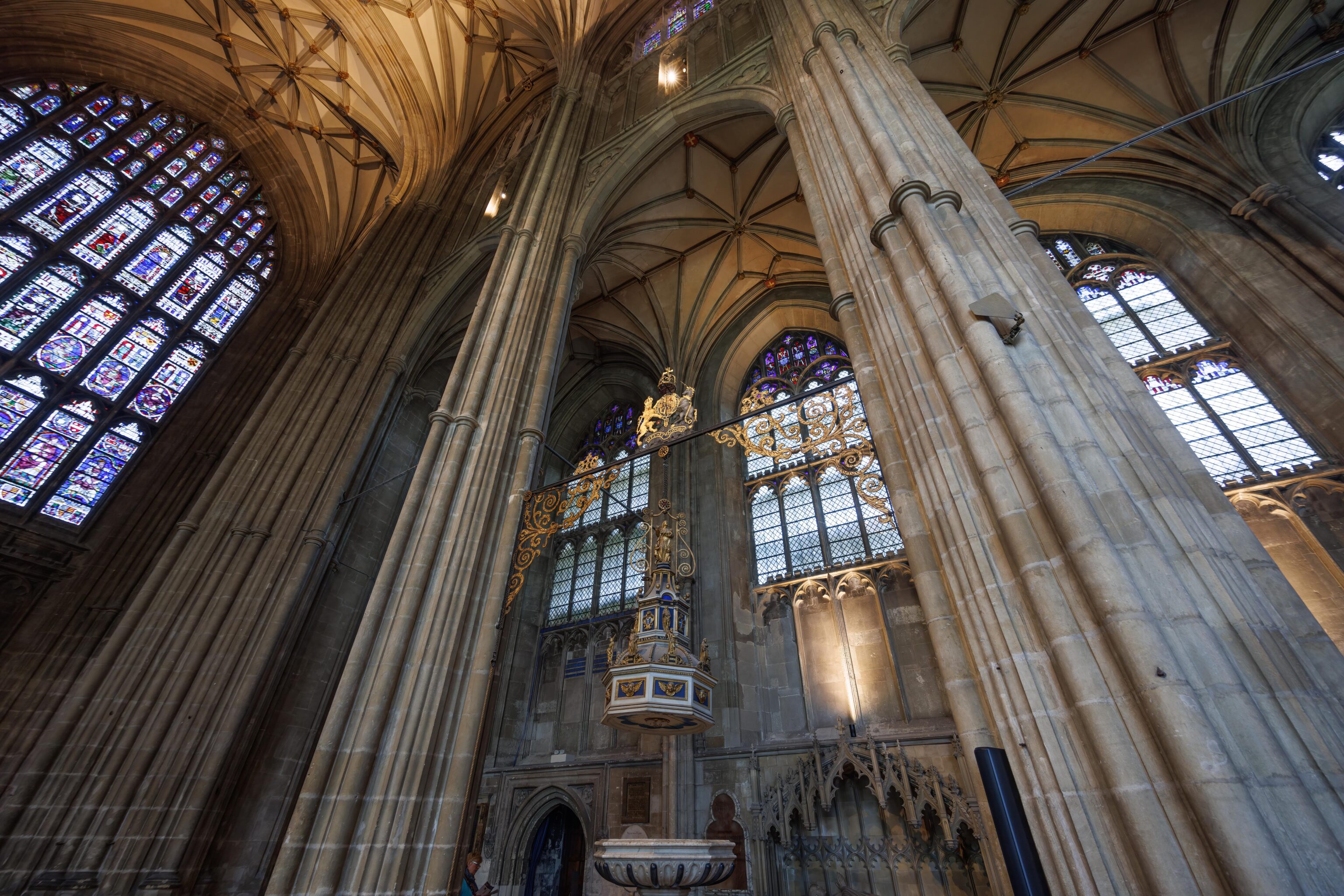
The baptismal font is on the left, or north, side near the entrance. It took a bit of Google Lens to figuring out what this is as we didn’t really think about it while we were there. Sometimes, the font is a more obvious structure, or the guide points it out when on a guided tour.
I’m usually pretty good about avoiding people in photography when possible but someone snuck into this one without me noticing!
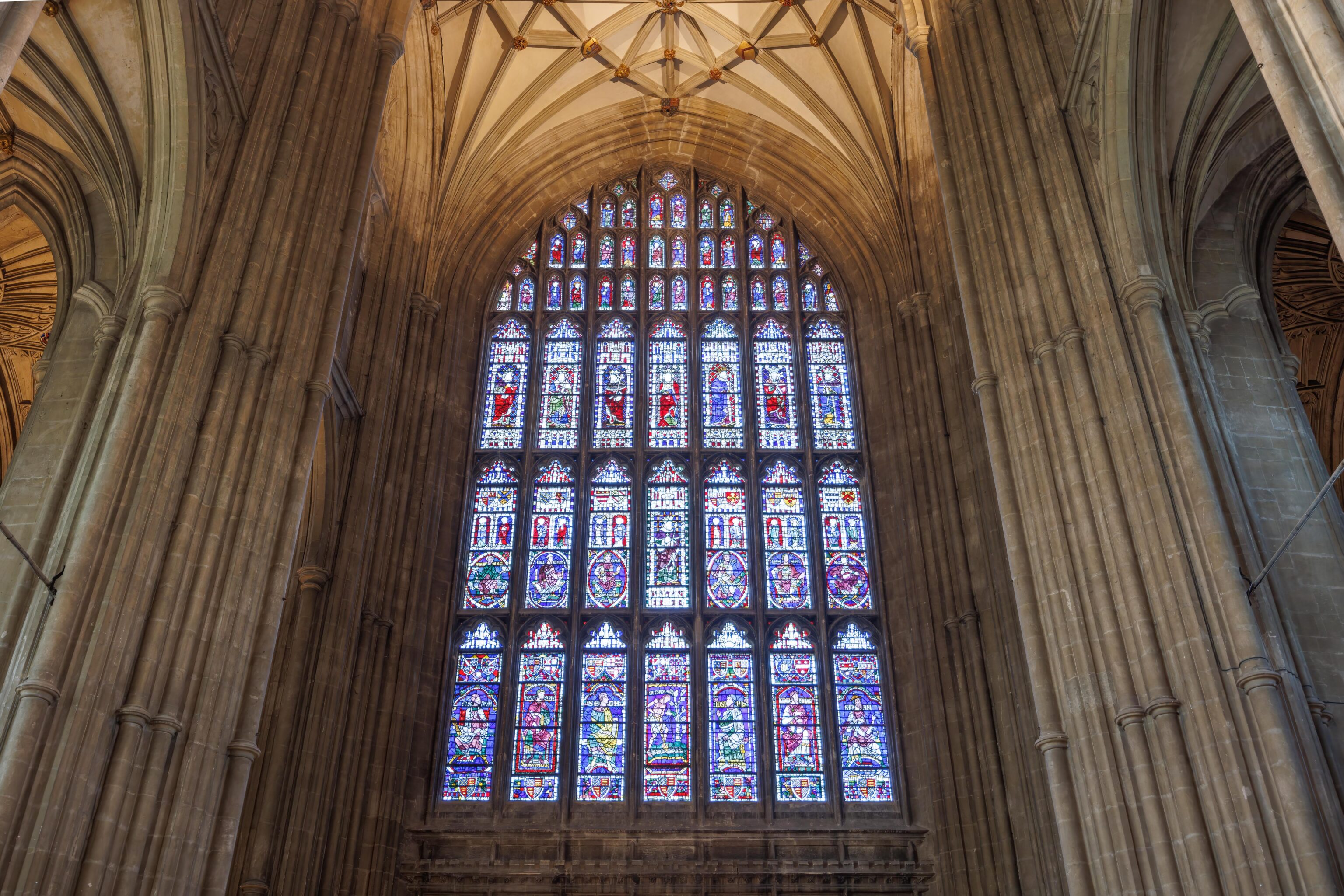
The stained glass window at the western end of the cathedral.
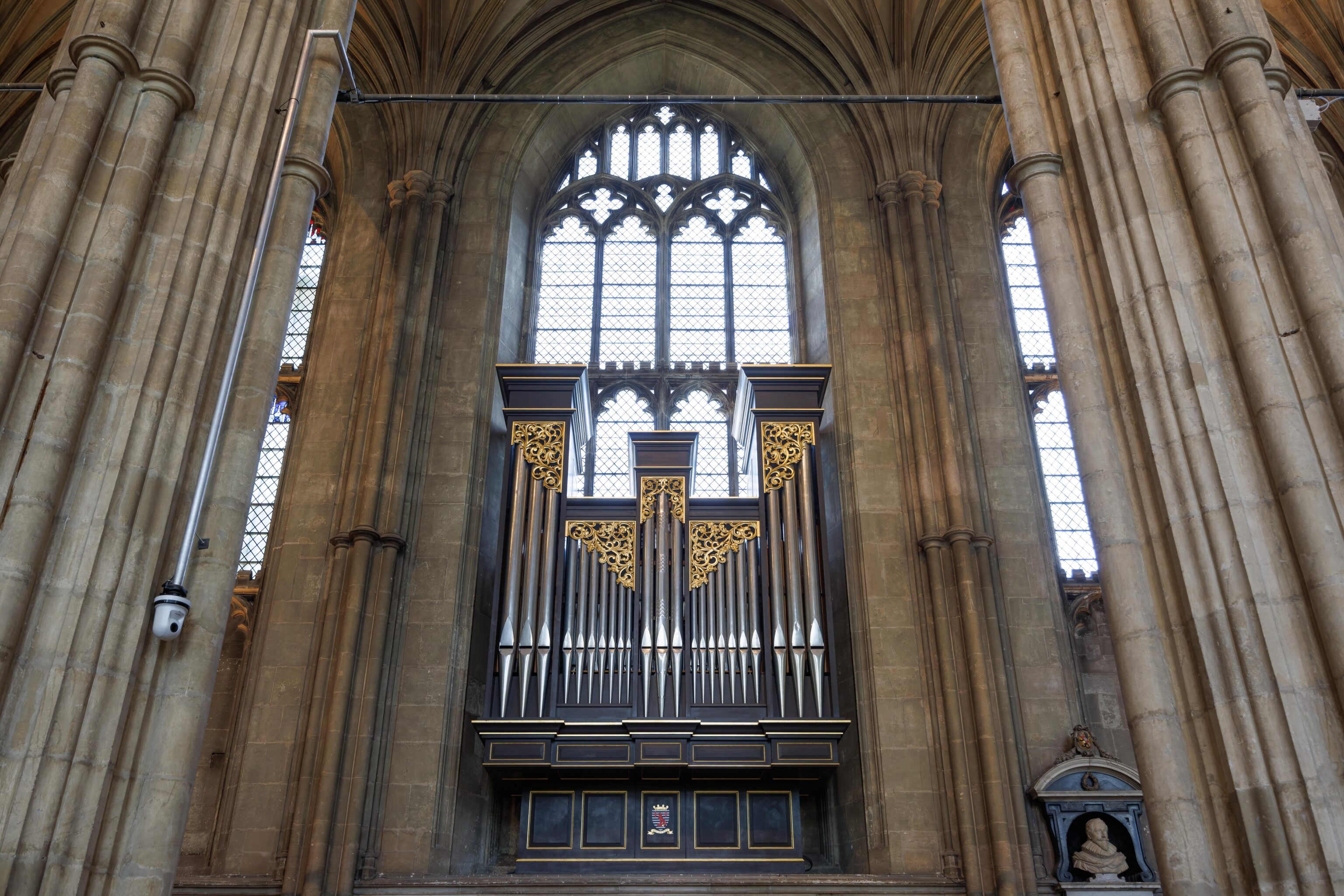
There was an organ on the left wall, just past the font.
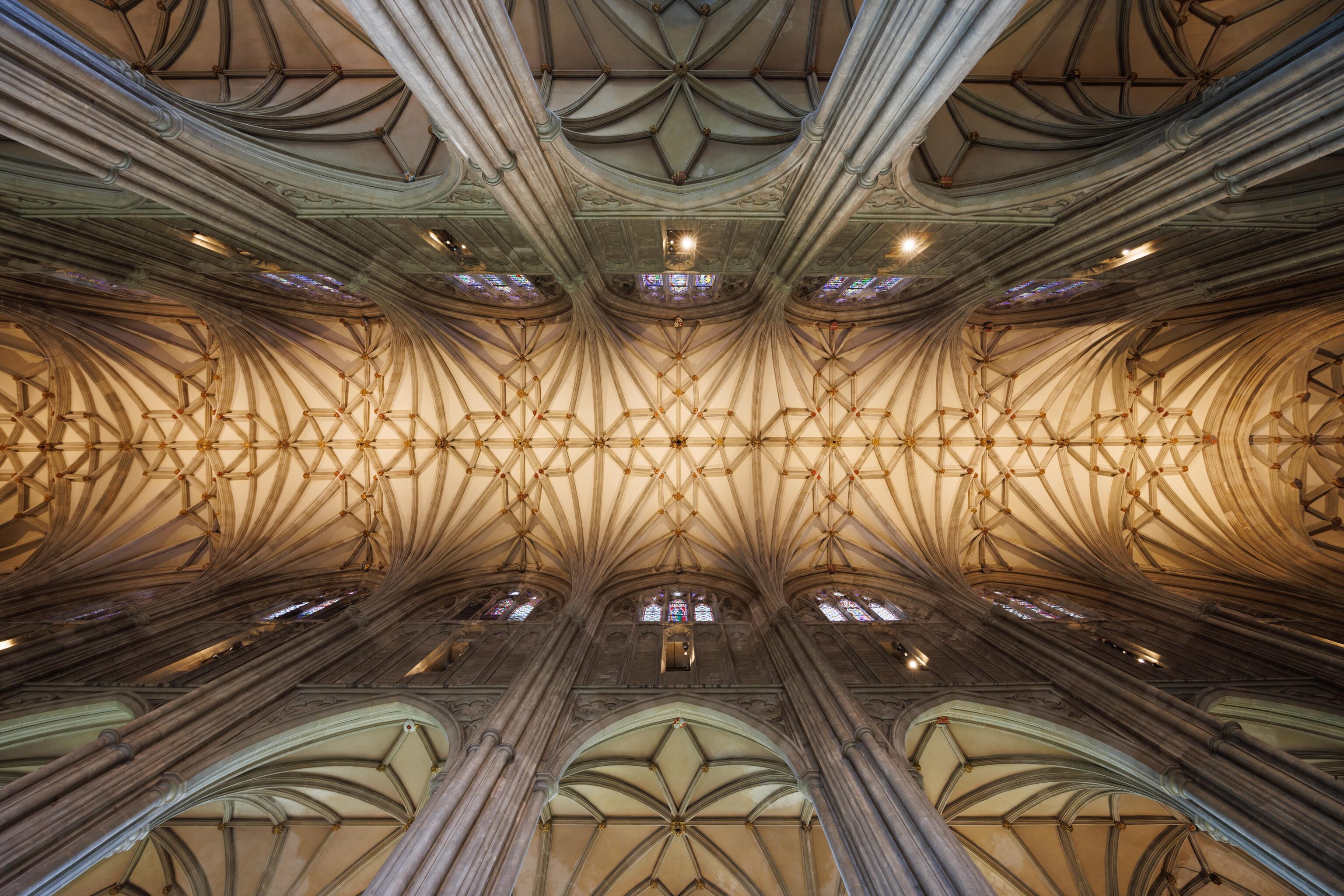
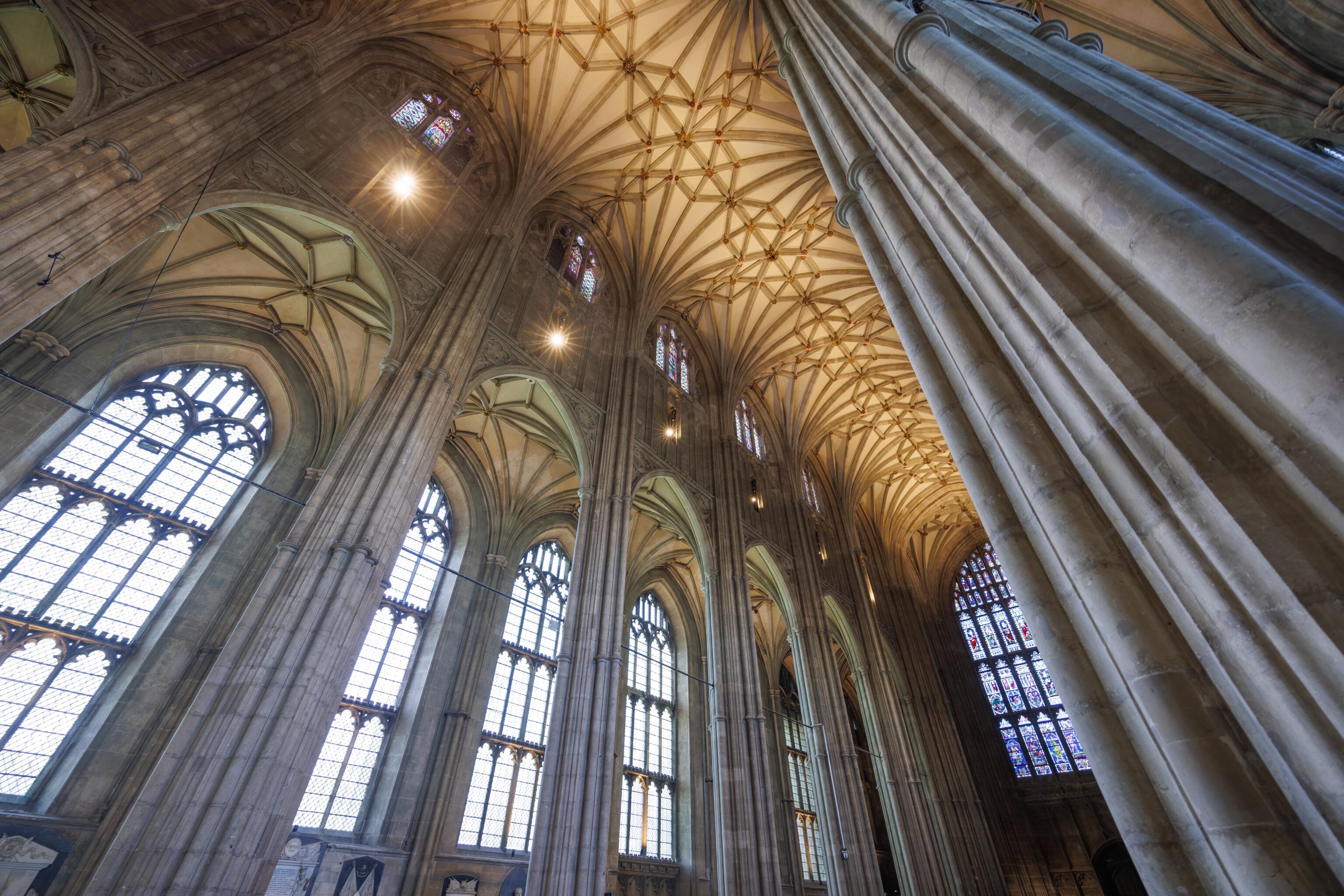
The cathedral’s ceiling had some interesting patterns.
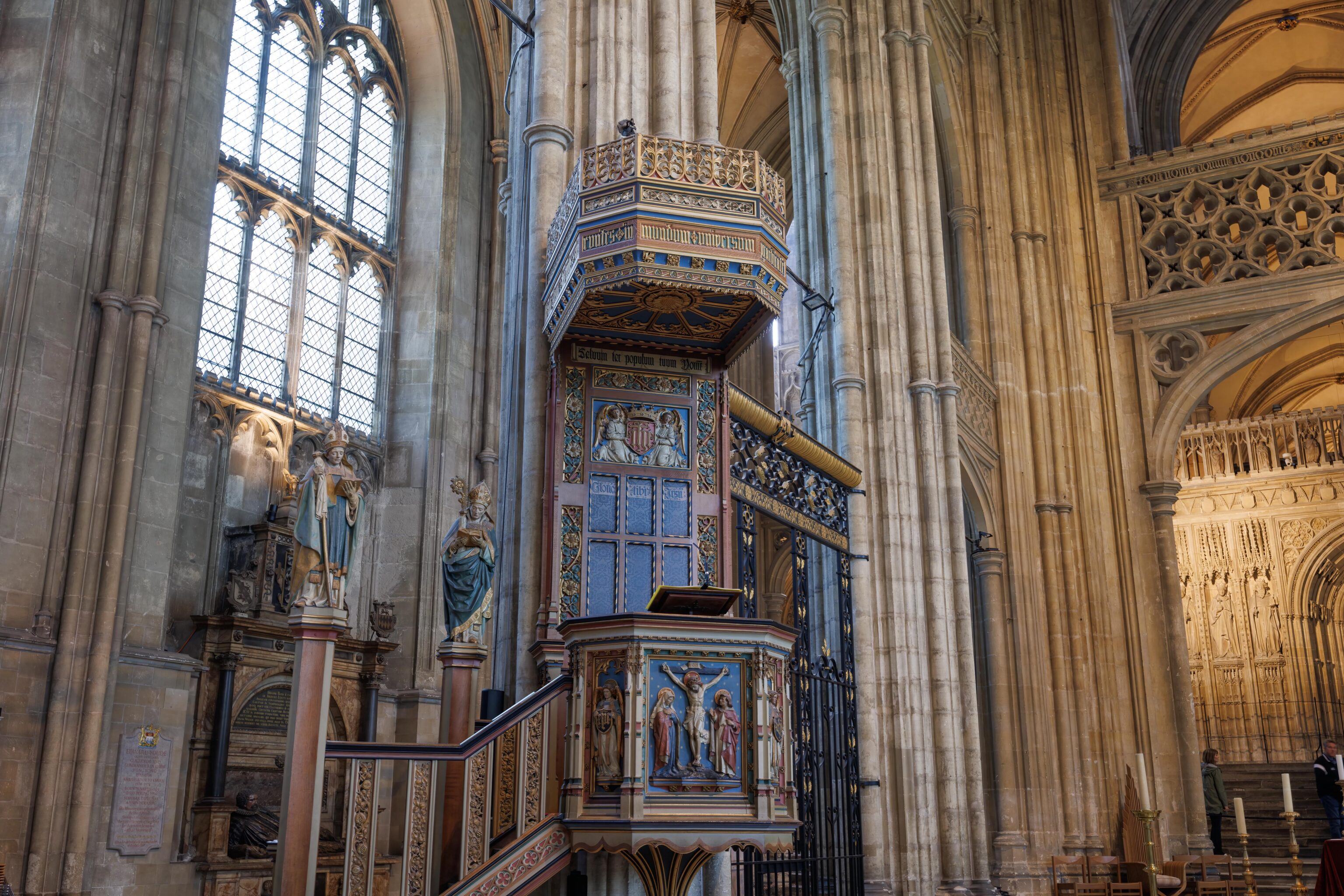
The cathedral’s pulpit.
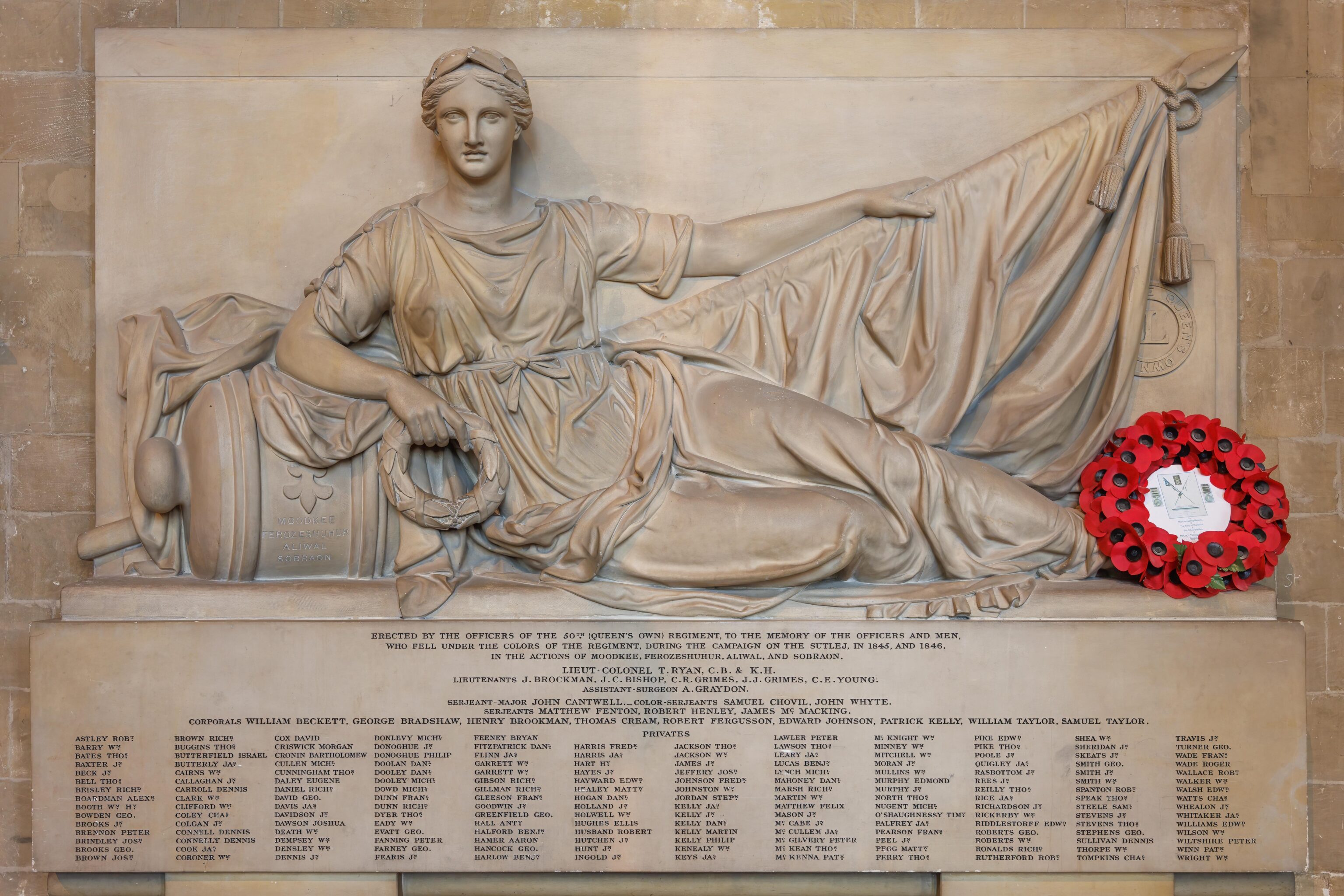
A memorial to the soldiers who died near the Sutlej River which runs through modern India and Pakistan.
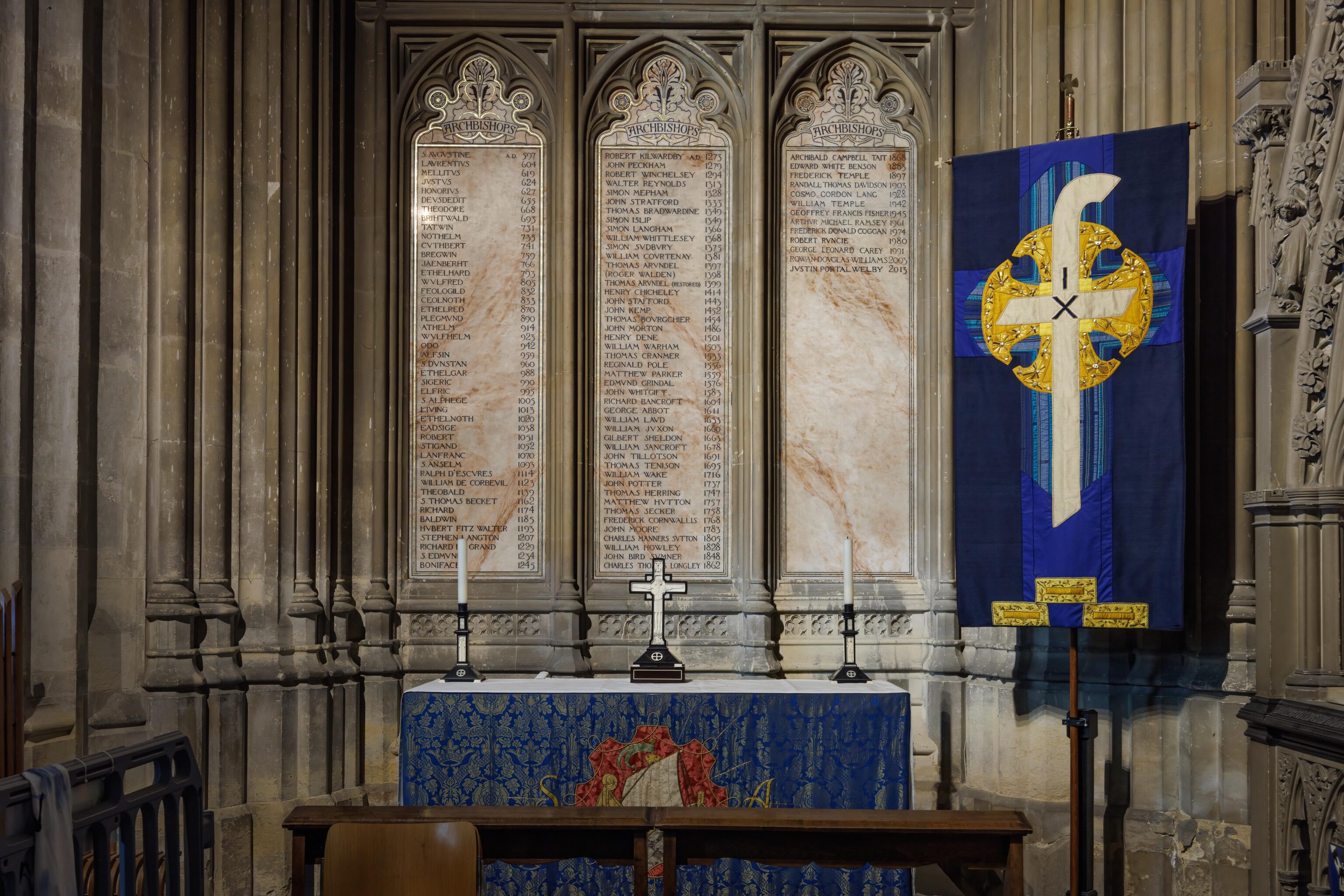
All the archbishops of Canterbury! Starting with St. Augustine and ending with the current archbishop, Justin Welby, who recently coronated King Charles III. Apparently he recently got a speeding ticket for going 25mph in a 20mph zone. Apparently this qualifies as news!
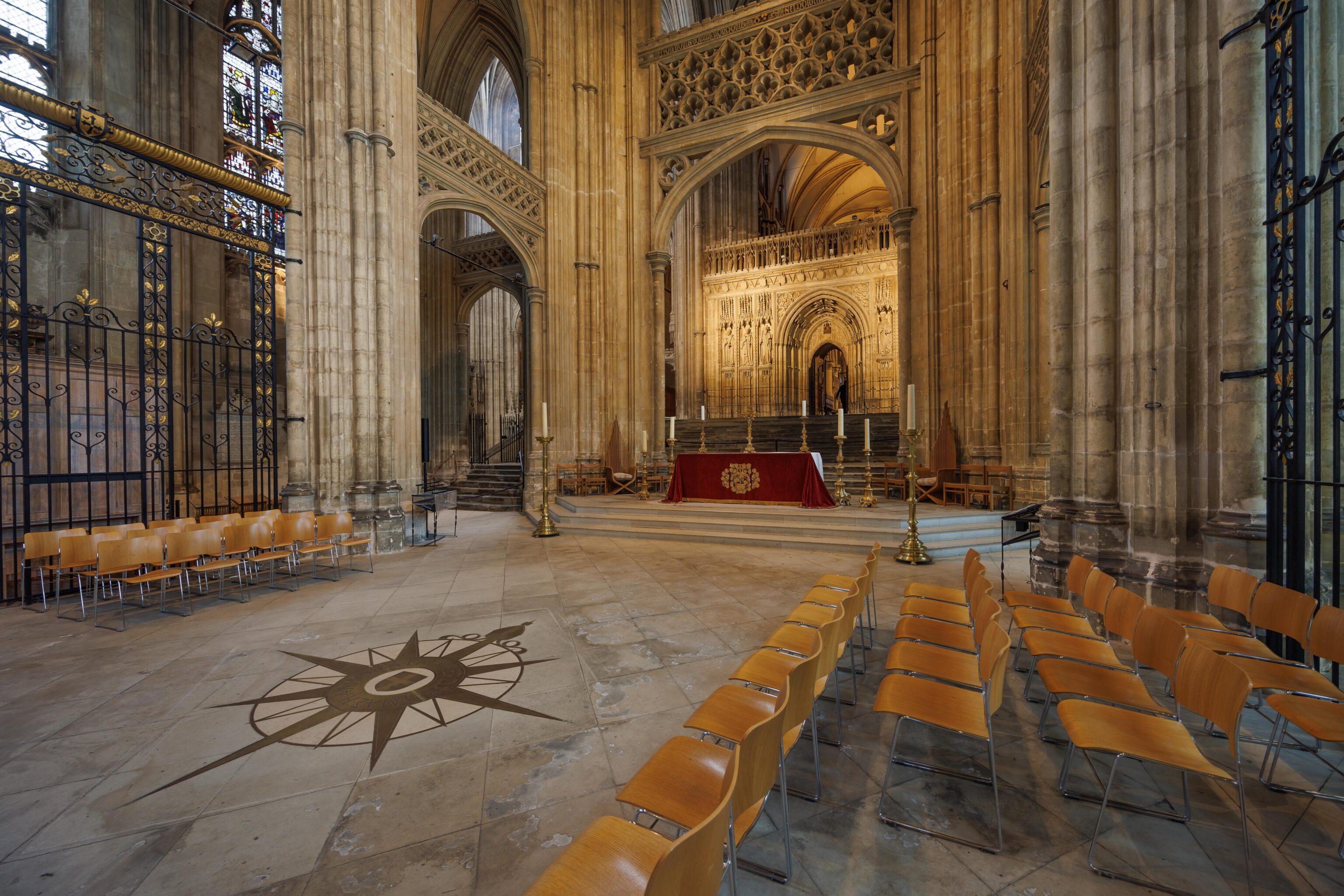
The compass rose is a symbol of the Anglican Church. We heard about it on this trip, though we don’t recall exactly where. Perhaps at Salisbury Cathedral? The symbol was first used in the US at the Cathedral of St. John the Divine in NYC!
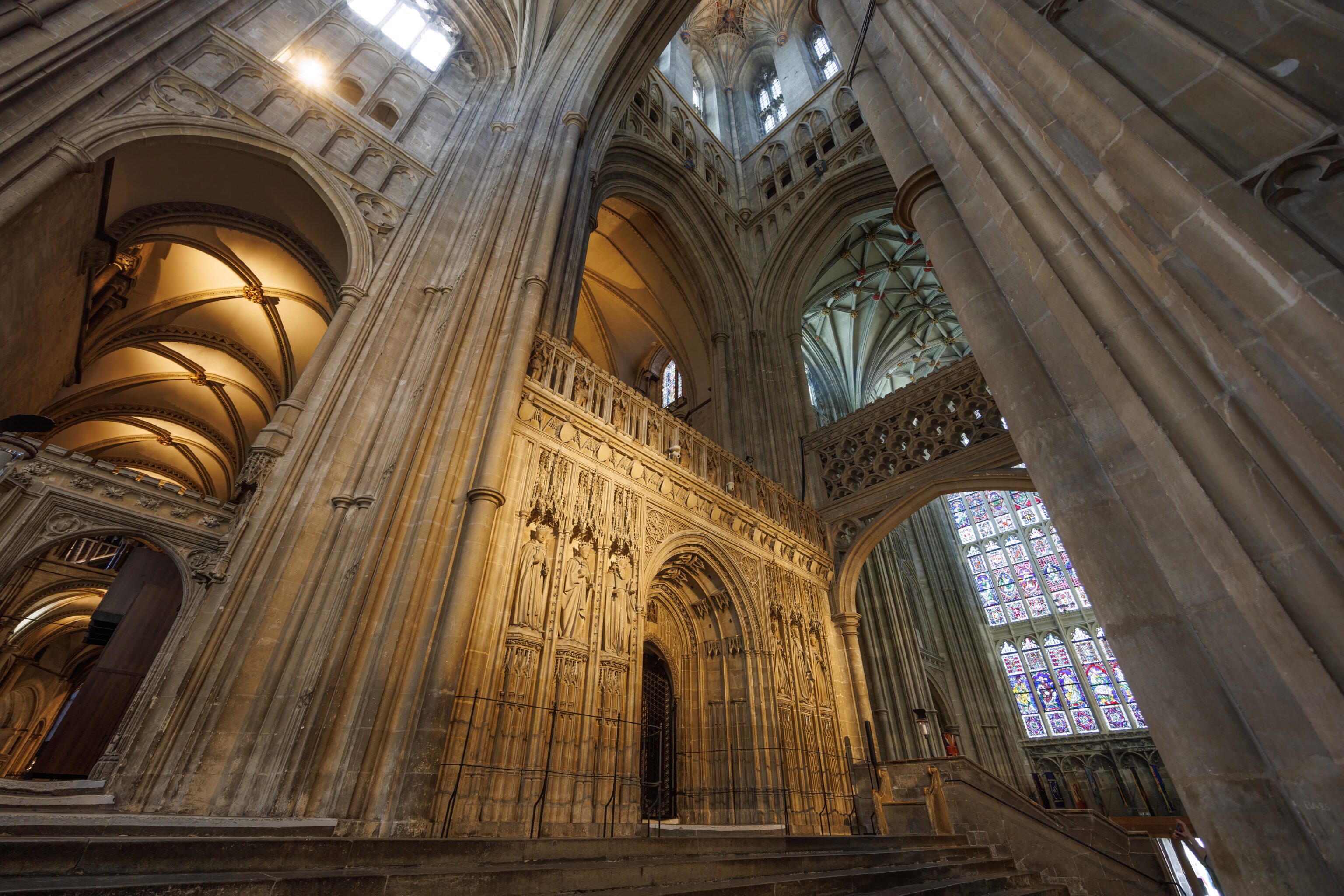
At this point, there were multiple possible paths. We followed the suggested tour route which would have been to our left.
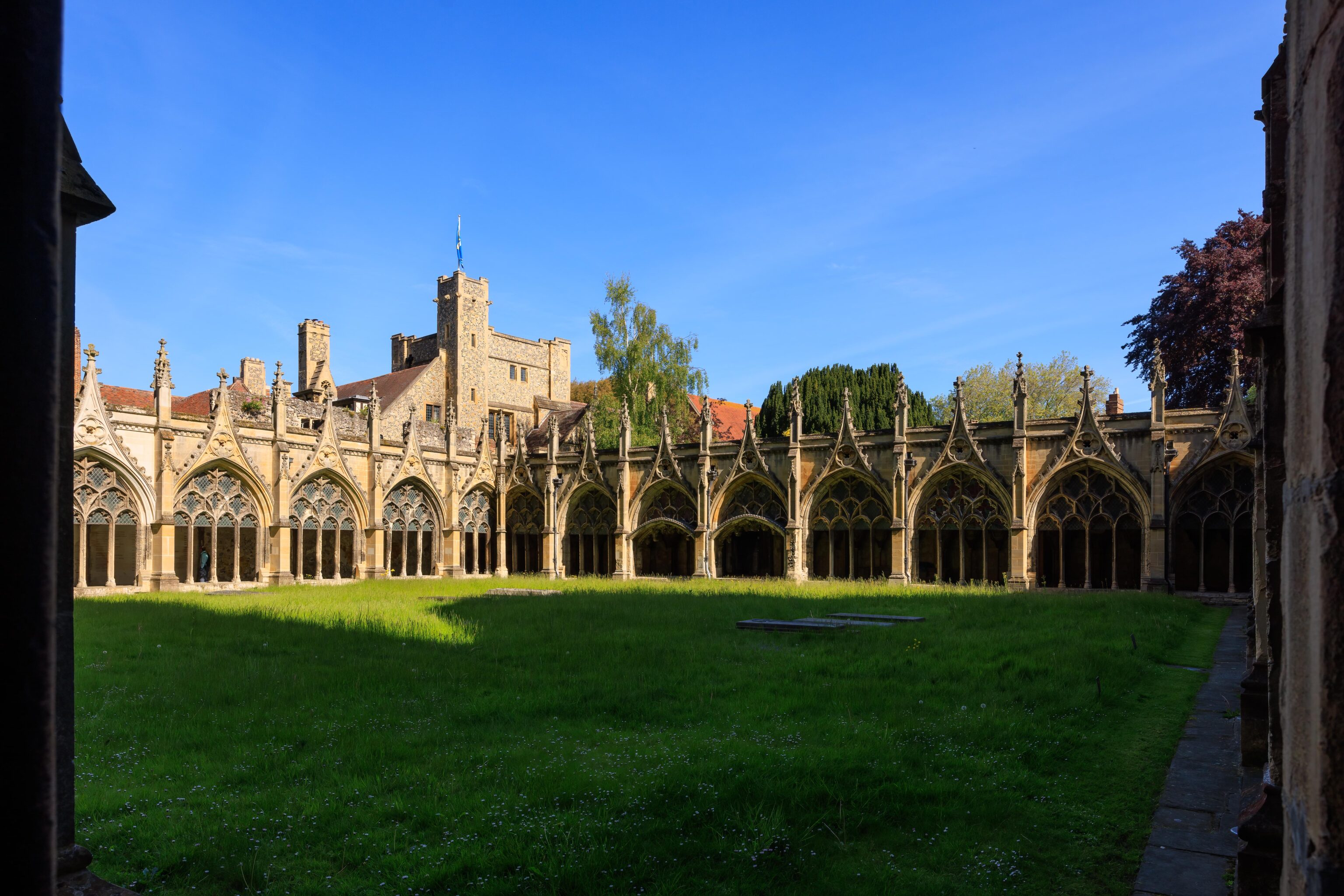
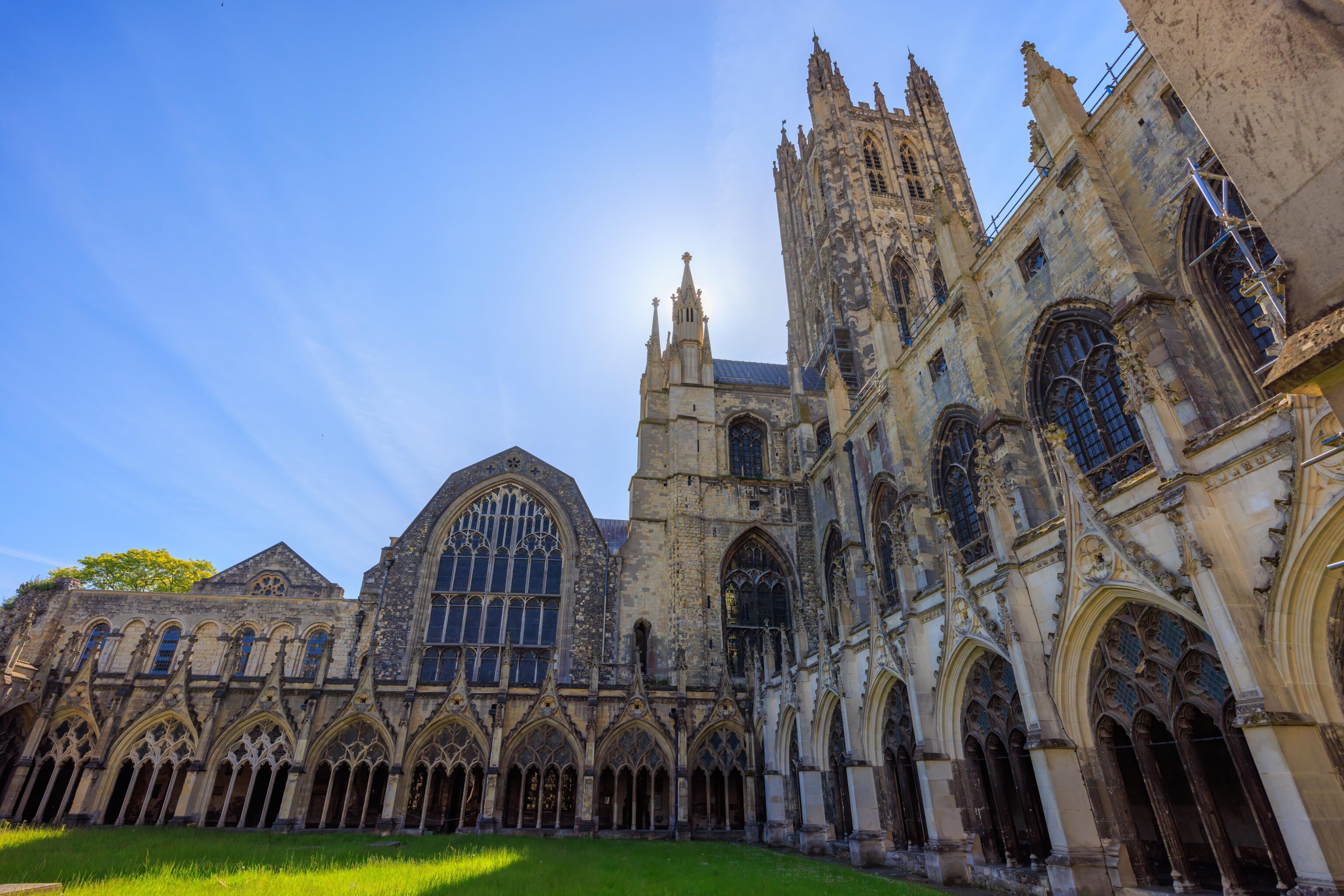
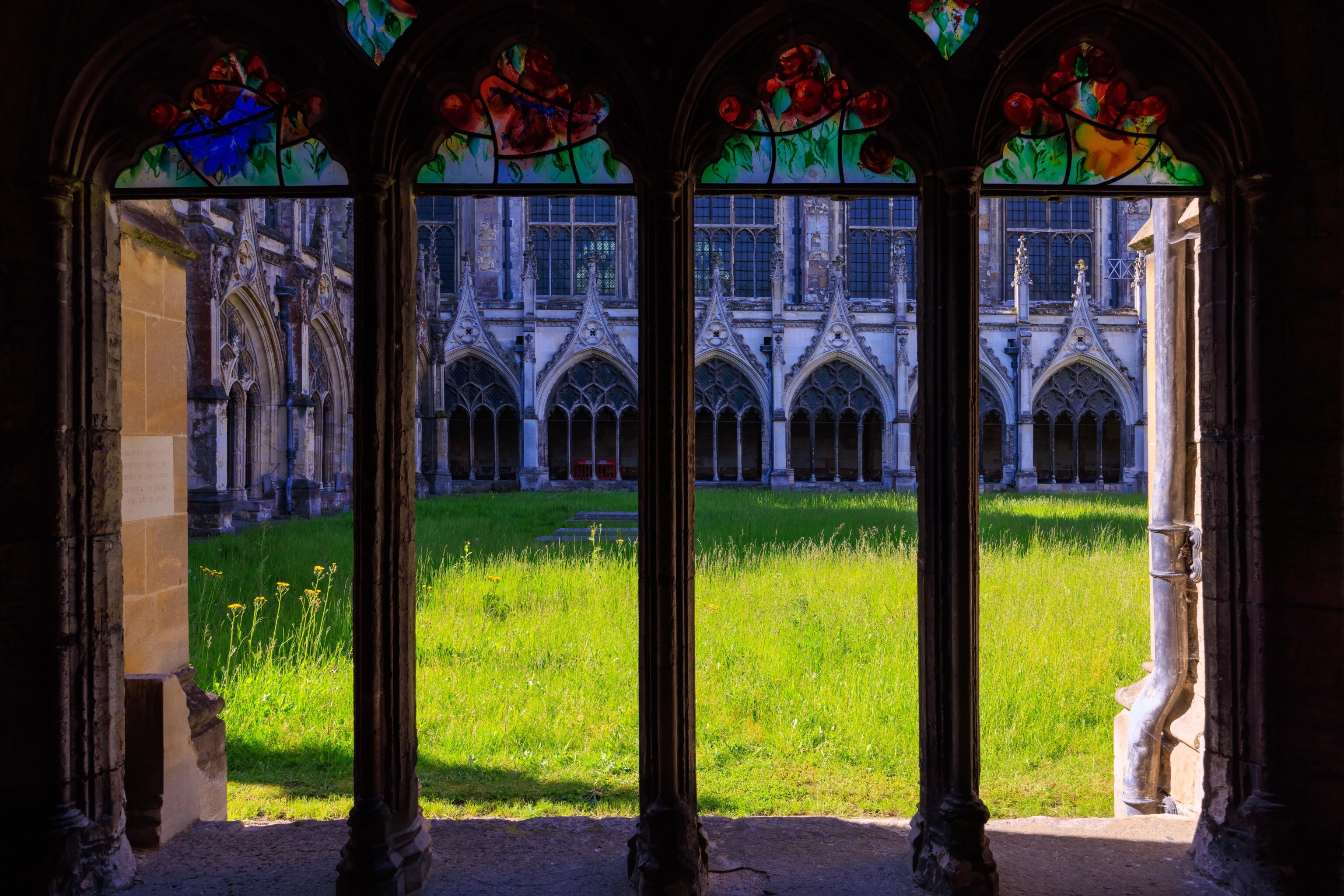
We found ourselves in the cloisters and walked the full square.
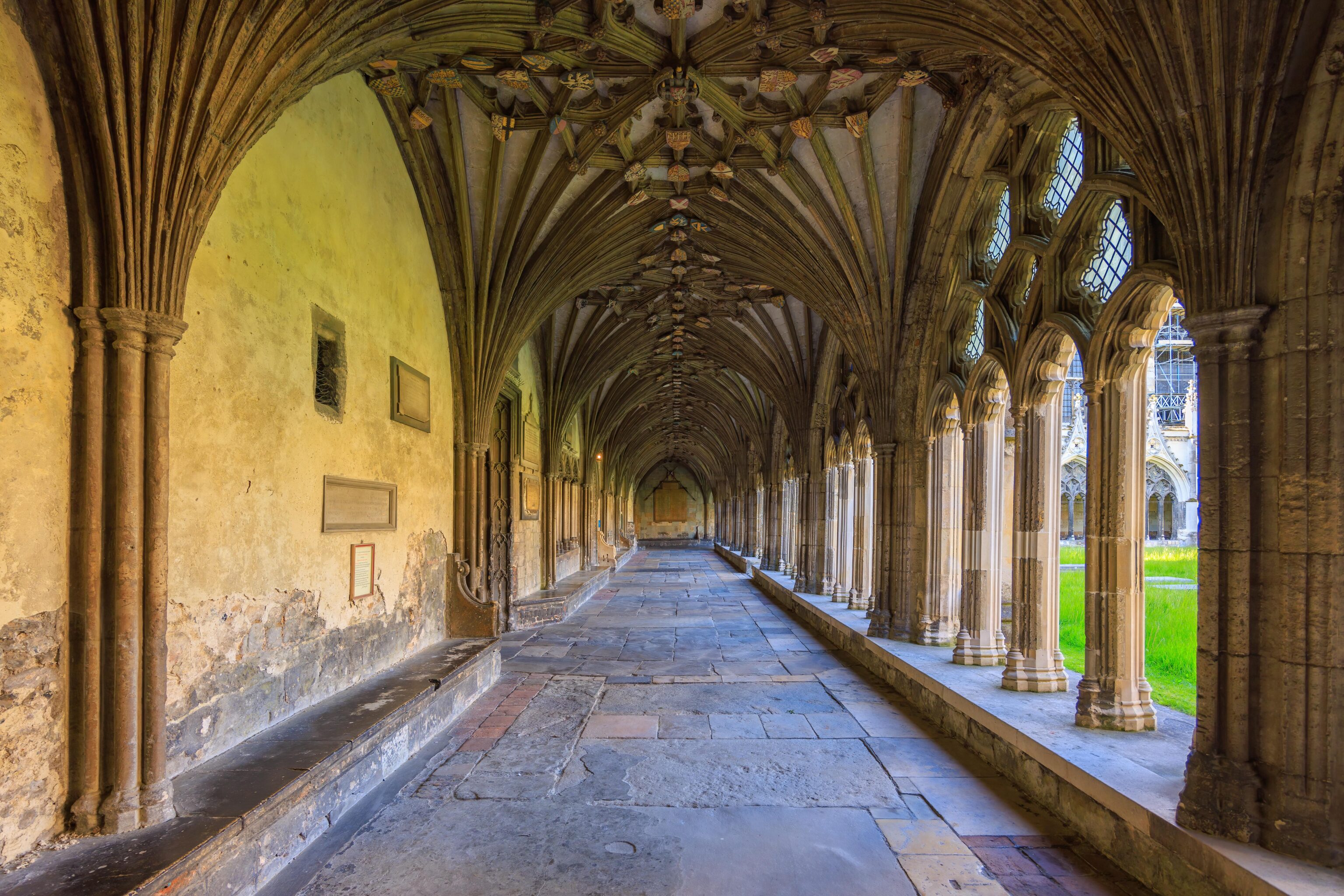
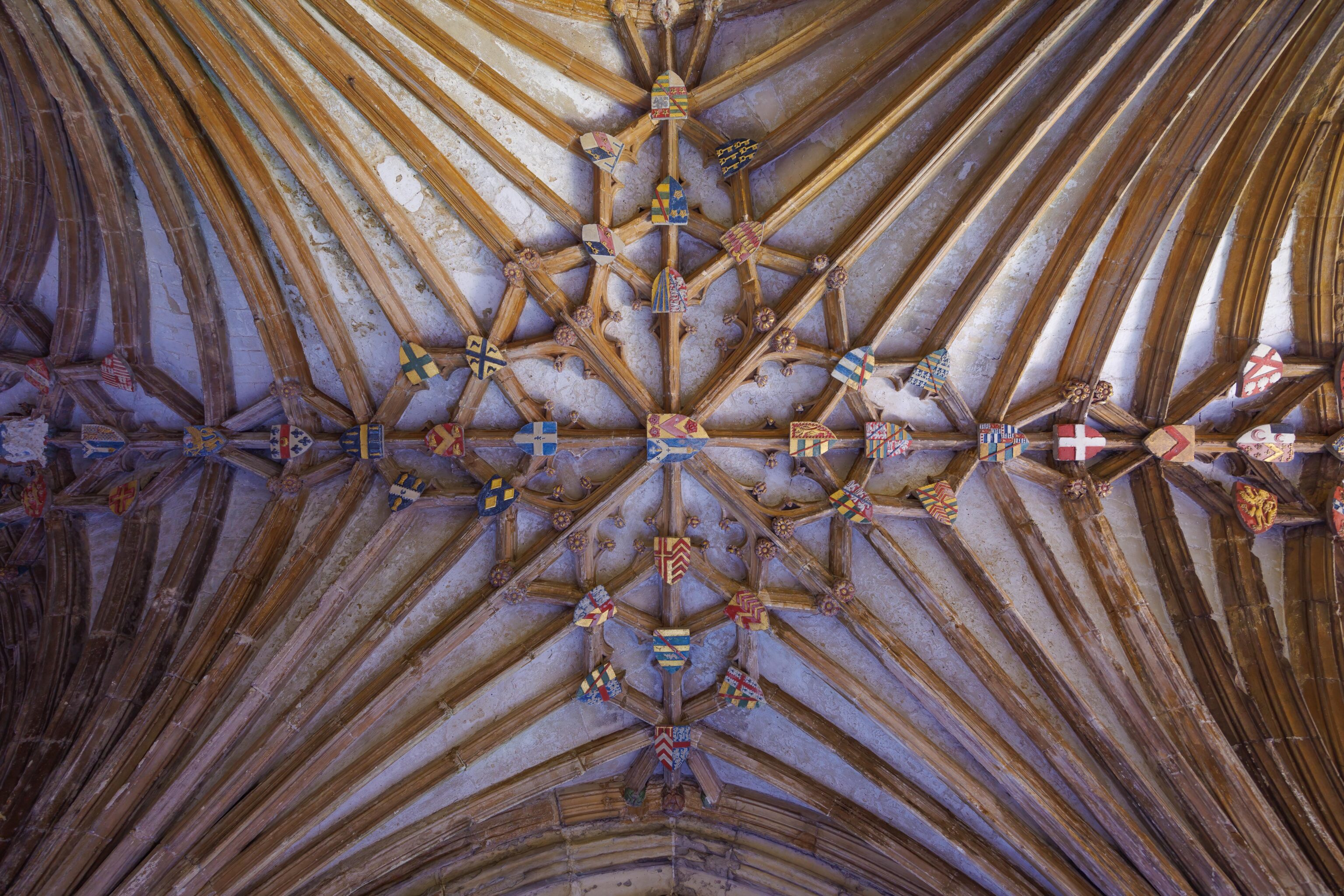
Always look up as there may be something interesting! The ceiling of the cloisters is lined with coats of arms, heraldic shields from the time of King Henry IV in the early 15th century!
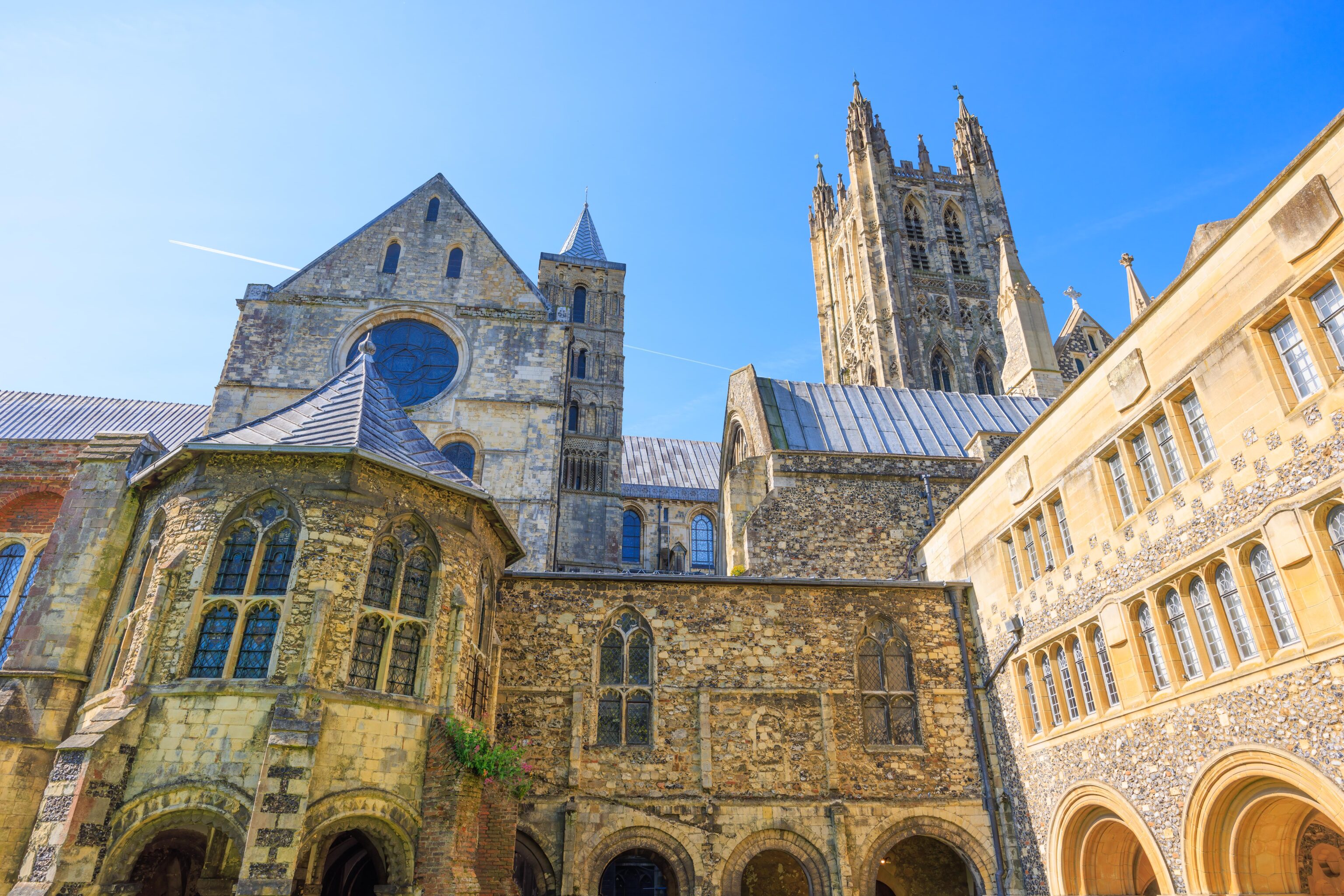
We ended up outside on the north side of the cathedral.
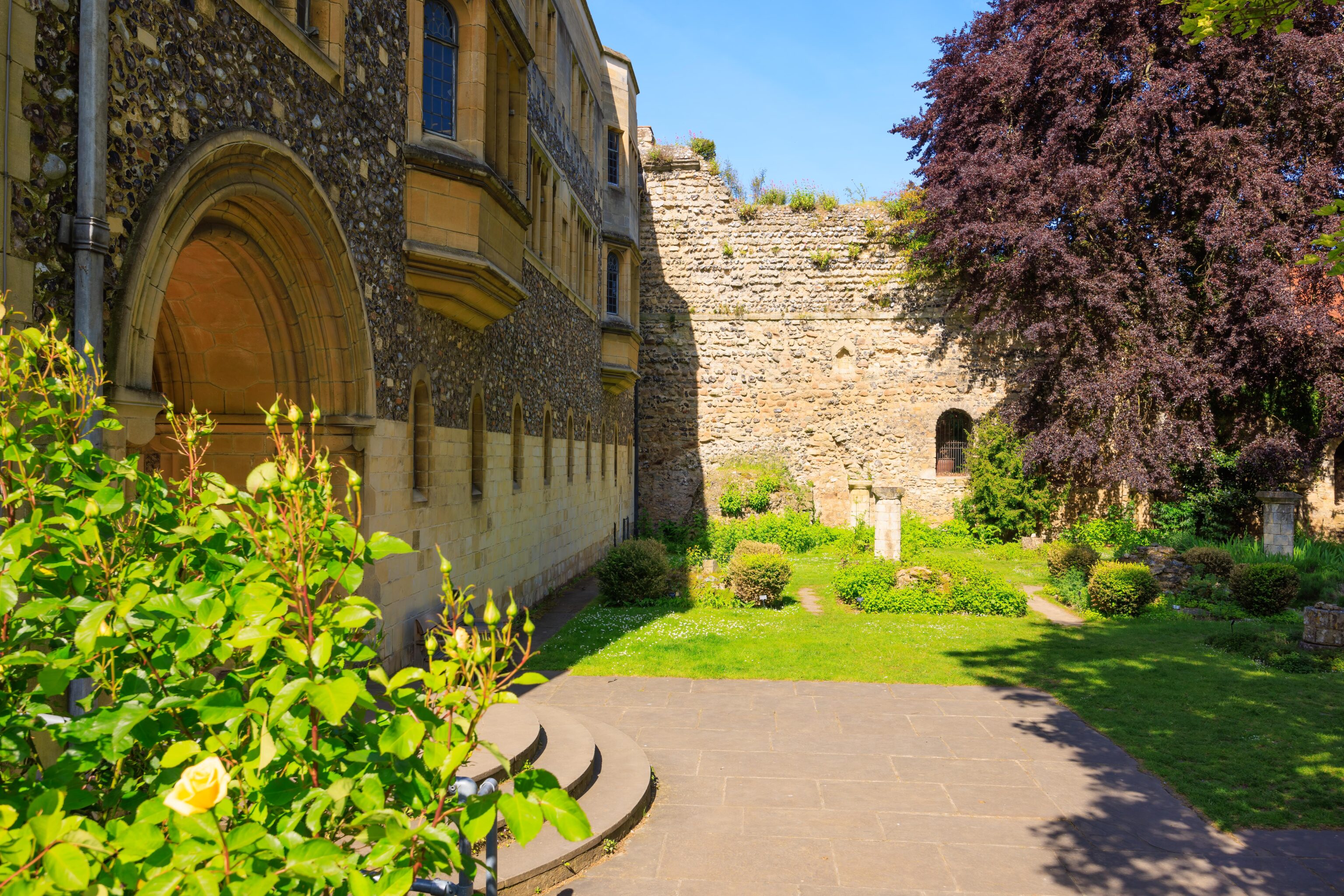
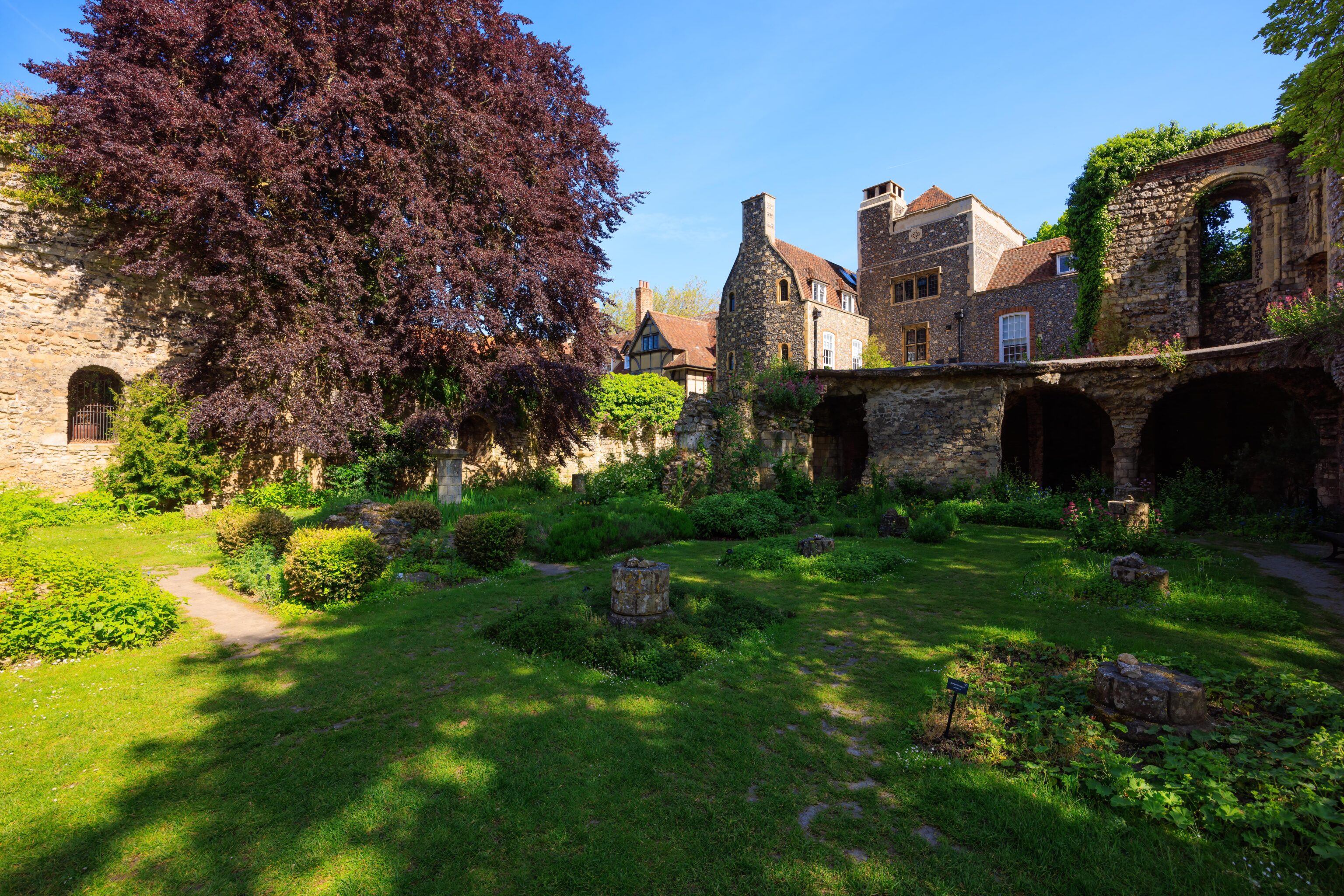
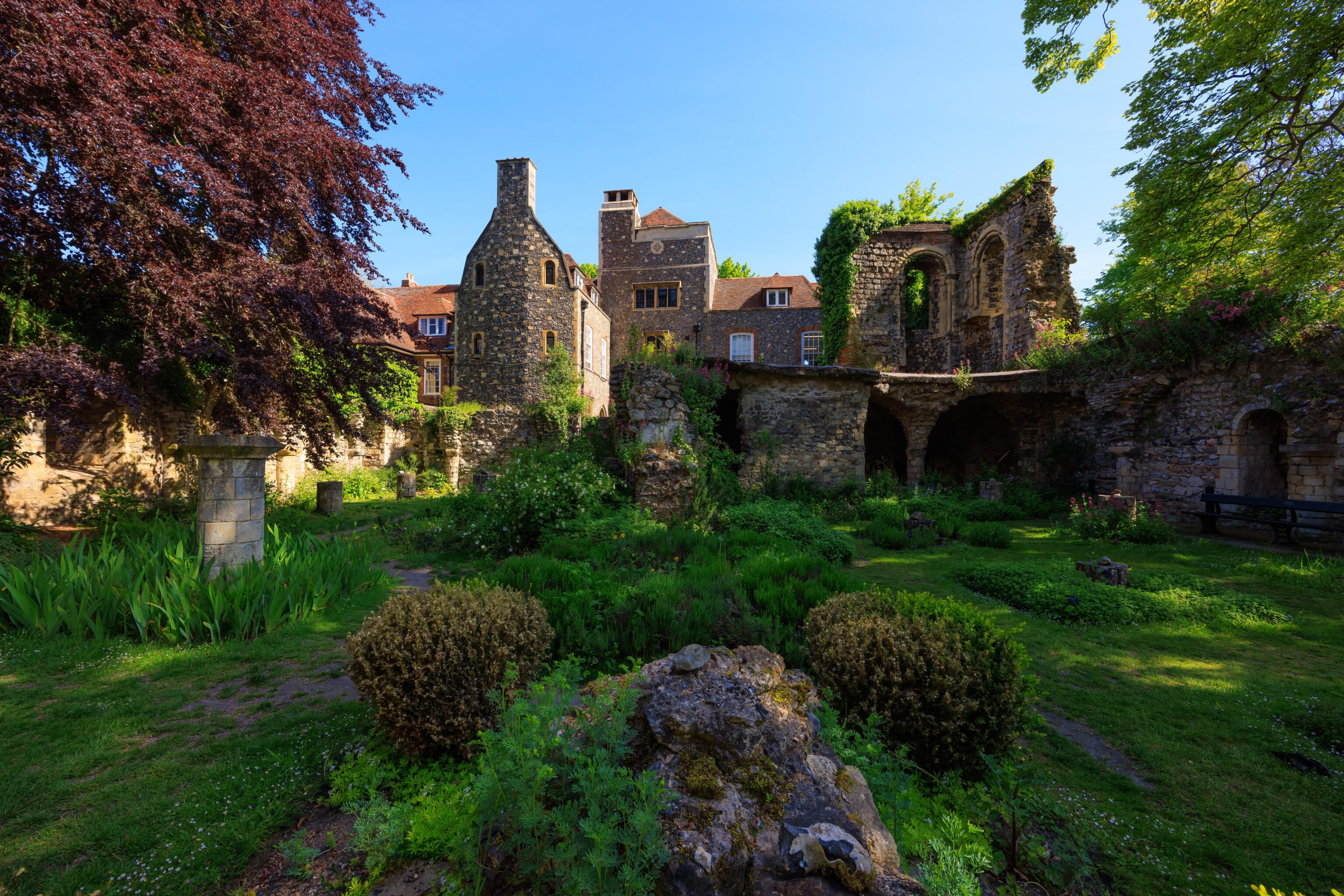
We ended up at a small herb garden surrounded by ruins.
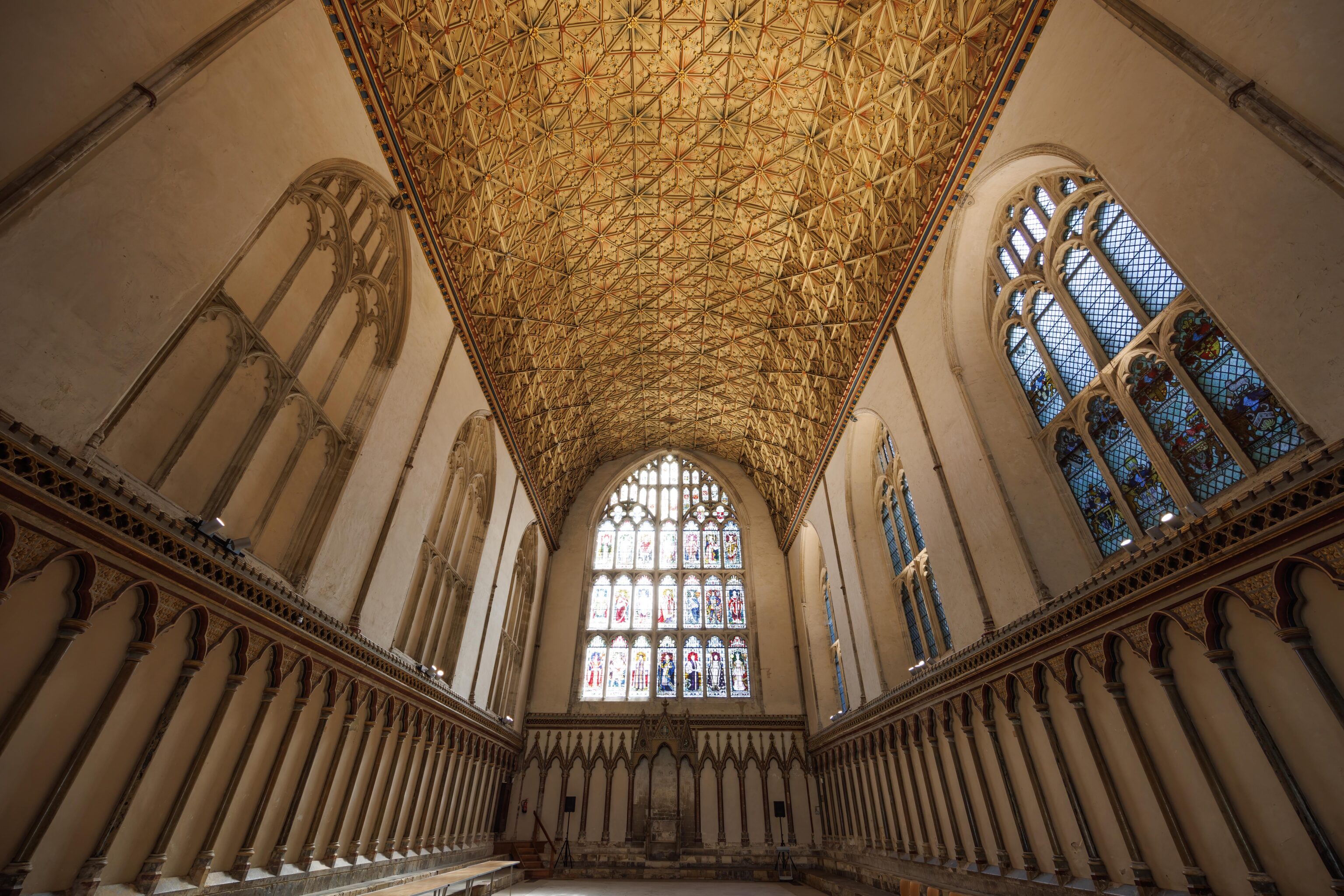
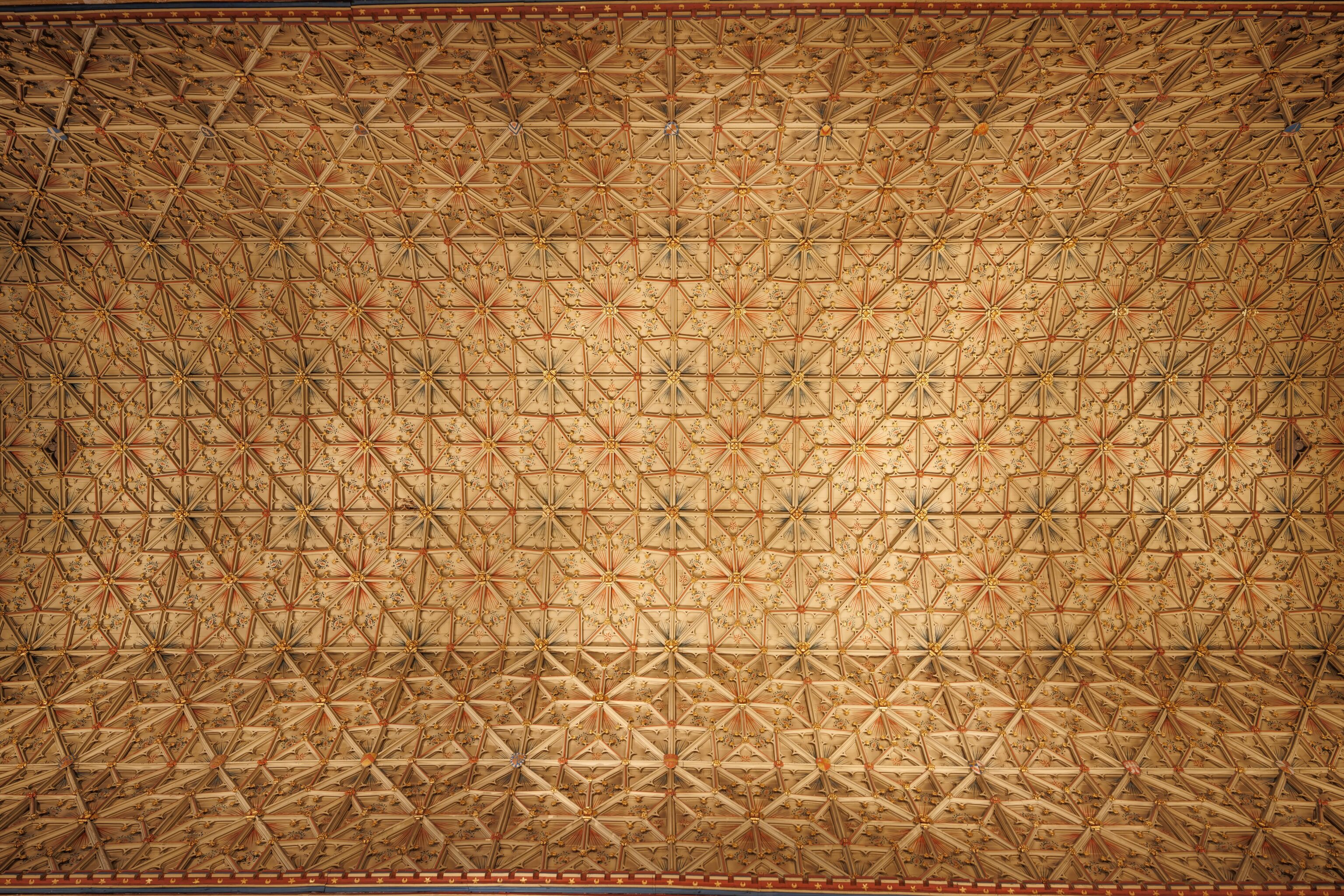
We backtracked and went into the Chapter House, on the east end of the cloisters. The room was mostly empty. The ceiling was interesting to look at though!
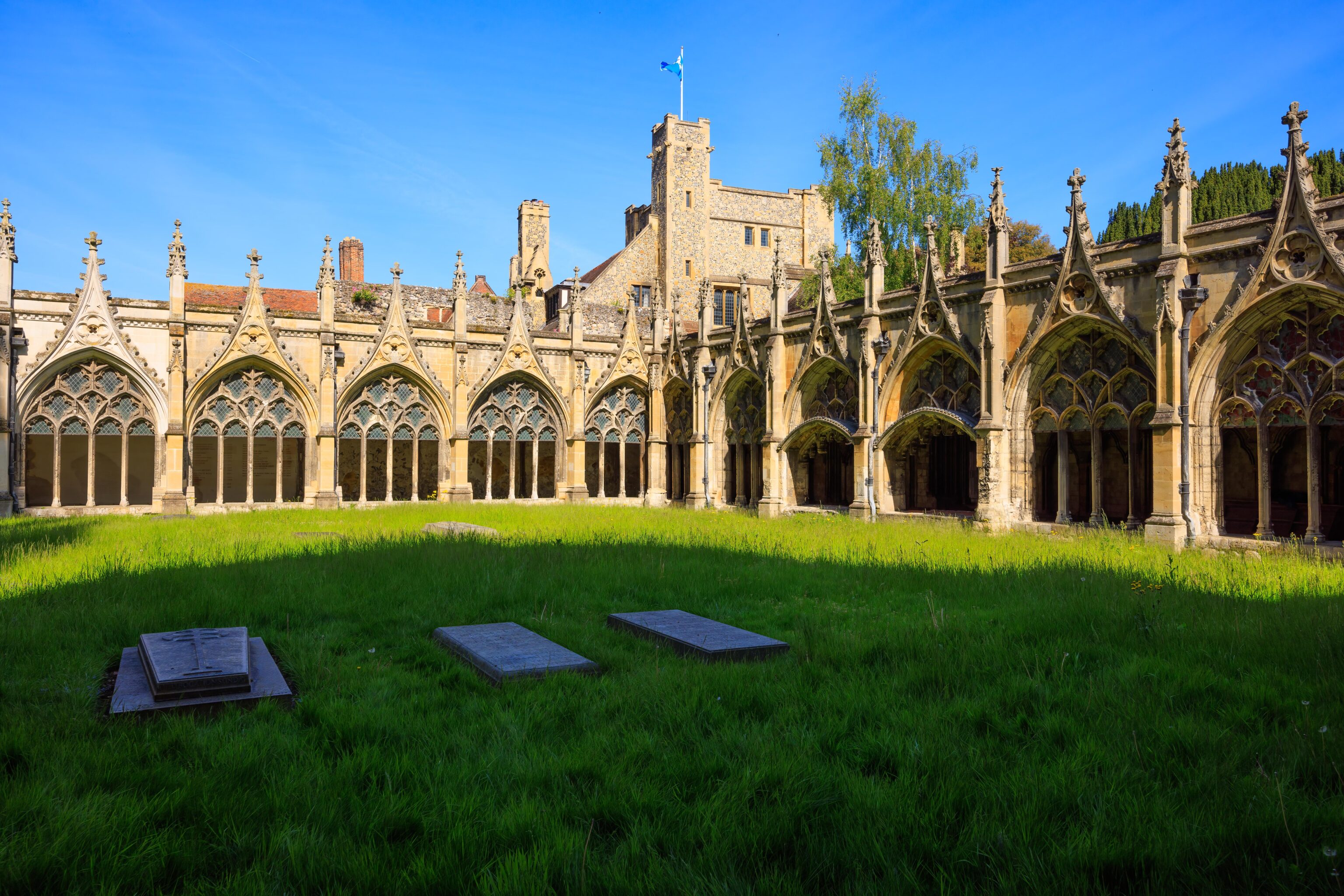
We once again exited back into the cloisters.
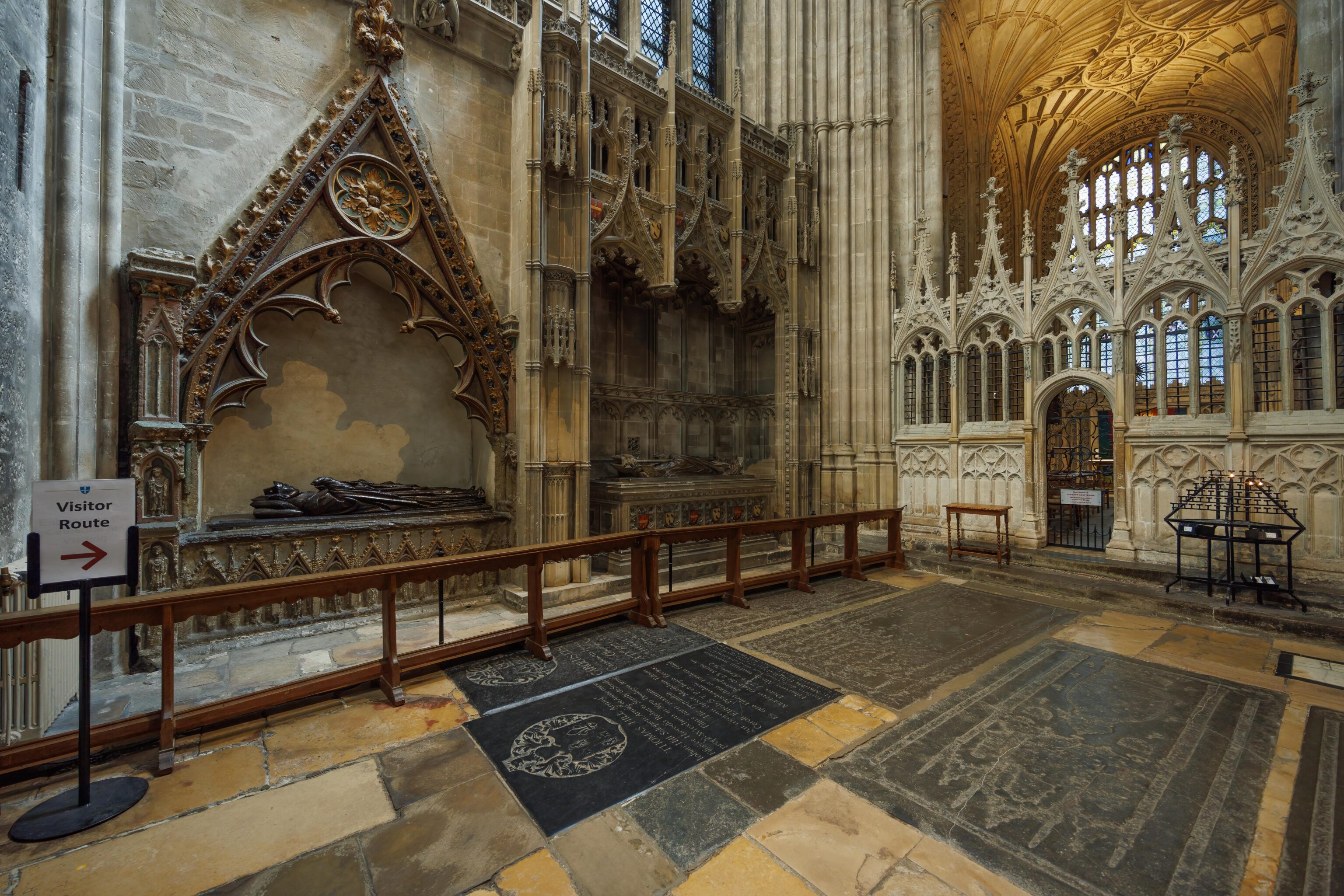
This next room, between the Chapter House and the cathedral’s quire, is called The Martyrdom. Why does it have this name?
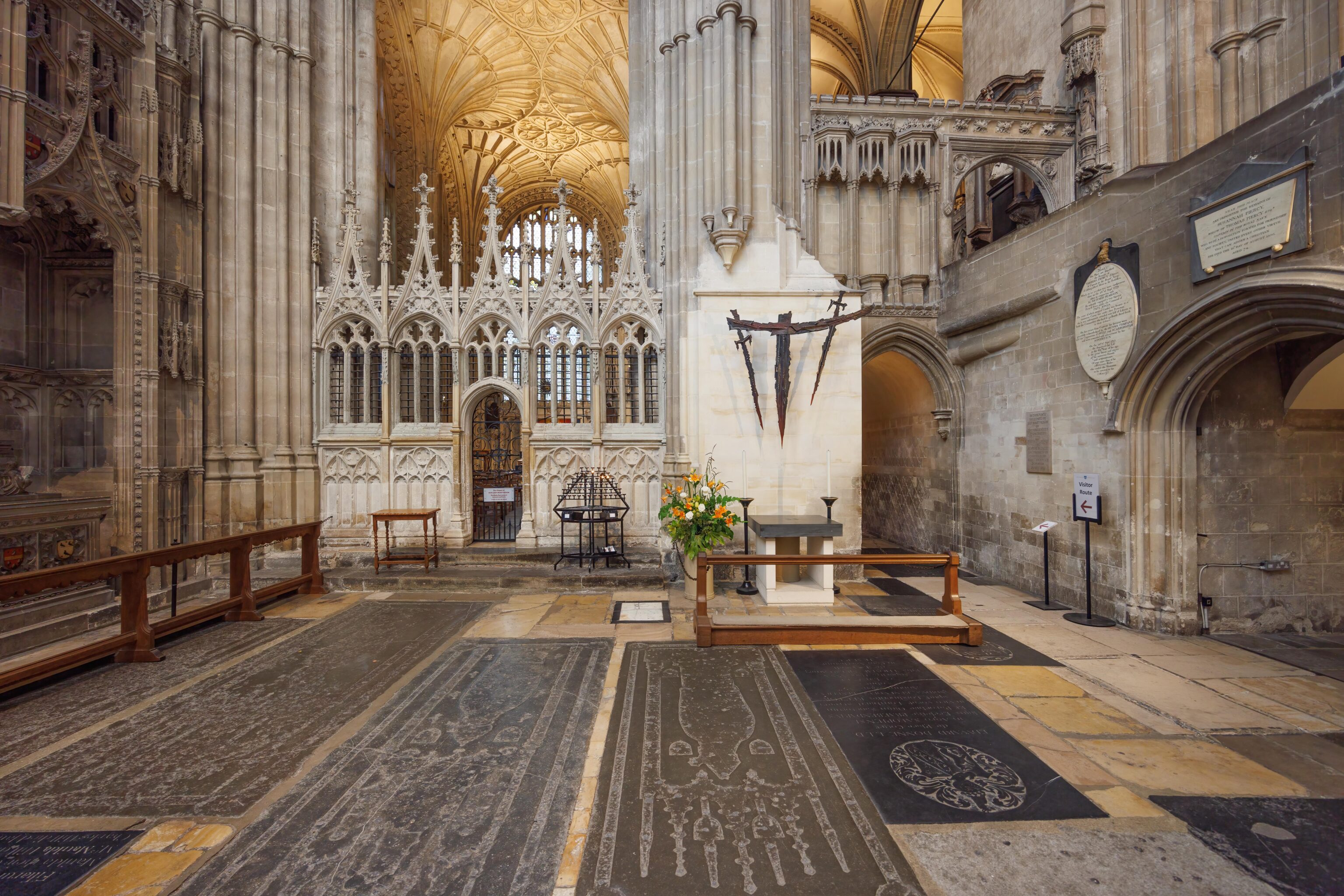
This is where Archbishop Thomas Becket was murdered by the knights of King Henry II. We first came across this event two days ago in Dover Castle. There is a chapel there dedicated to Becket. Presumably, the blades mark the spot where he was killed?
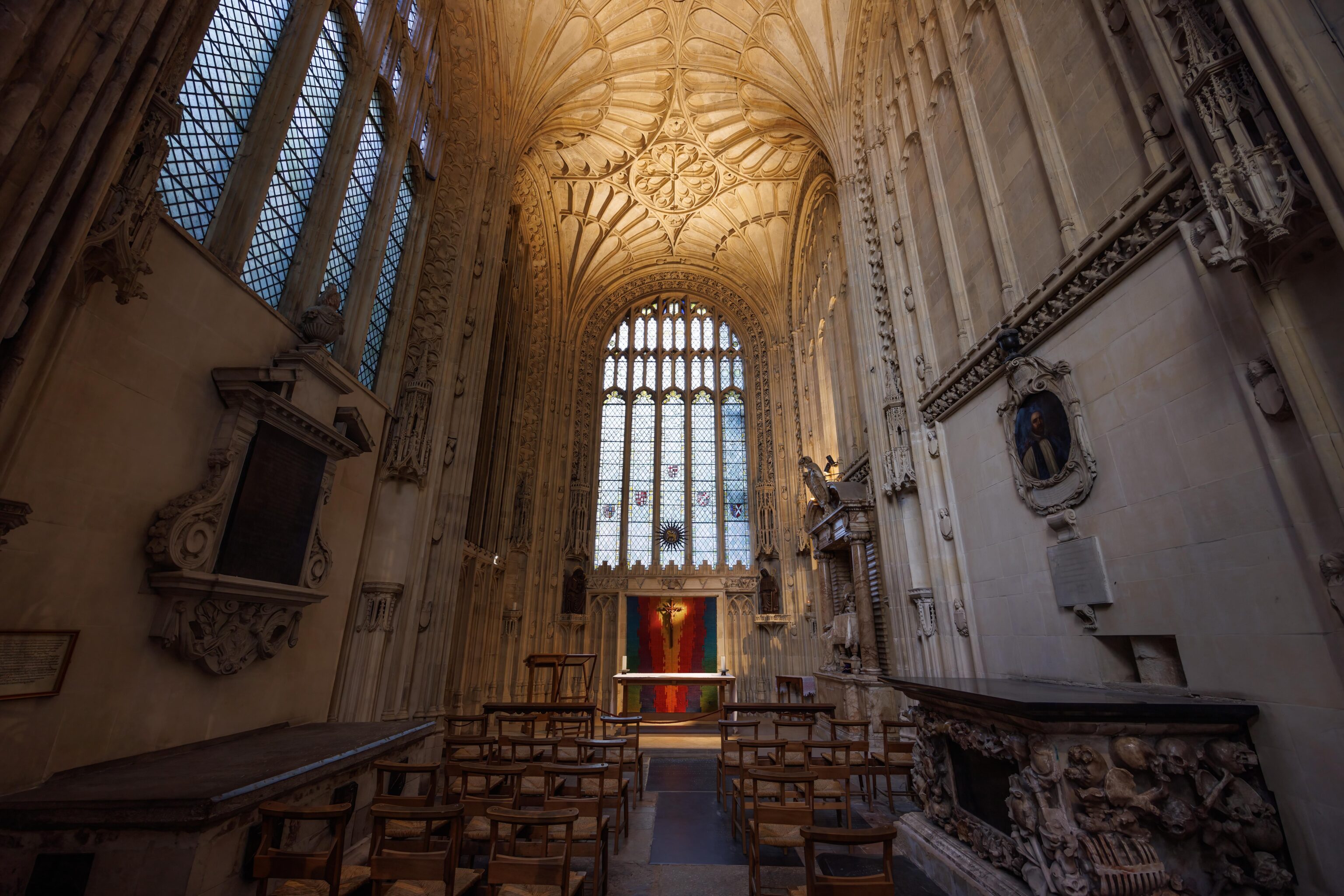
The Chapel of Our Lady The Martyrdom is on the left side of The Martyrdom. The gate was closed so entry was not possible.
The suggested route next took us down into the crypt. Photography is not permitted in the crypt so we have nothing to share here.
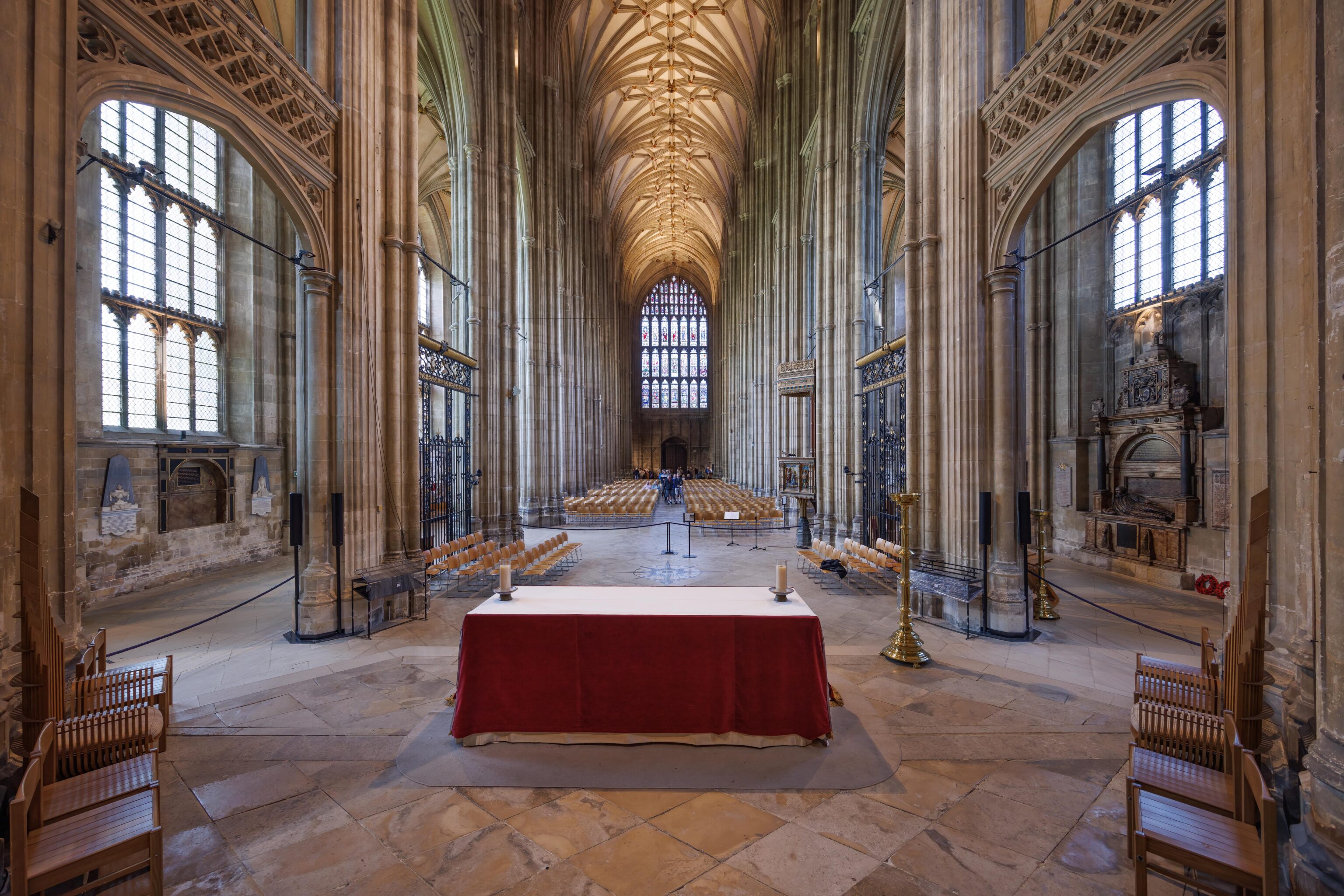
After coming back up from the crypt, we were on the south side of the cathedral, opposite of The Martyrdom. We walked to the center of the cathedral. This view is to the west, where we were upon entering and before exiting out into the cloisters.
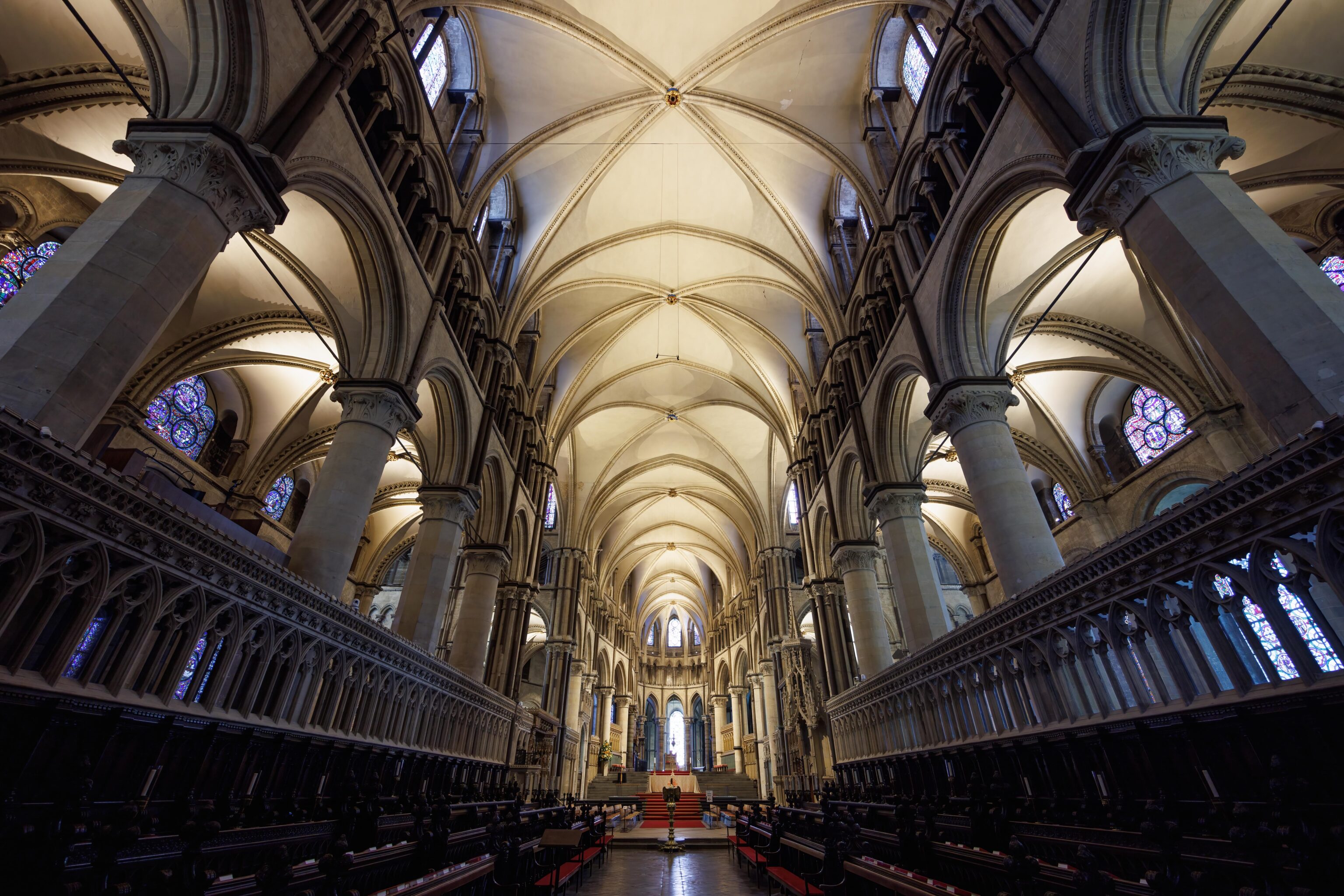
The quire, or choir in modern English, is in the opposite direction.
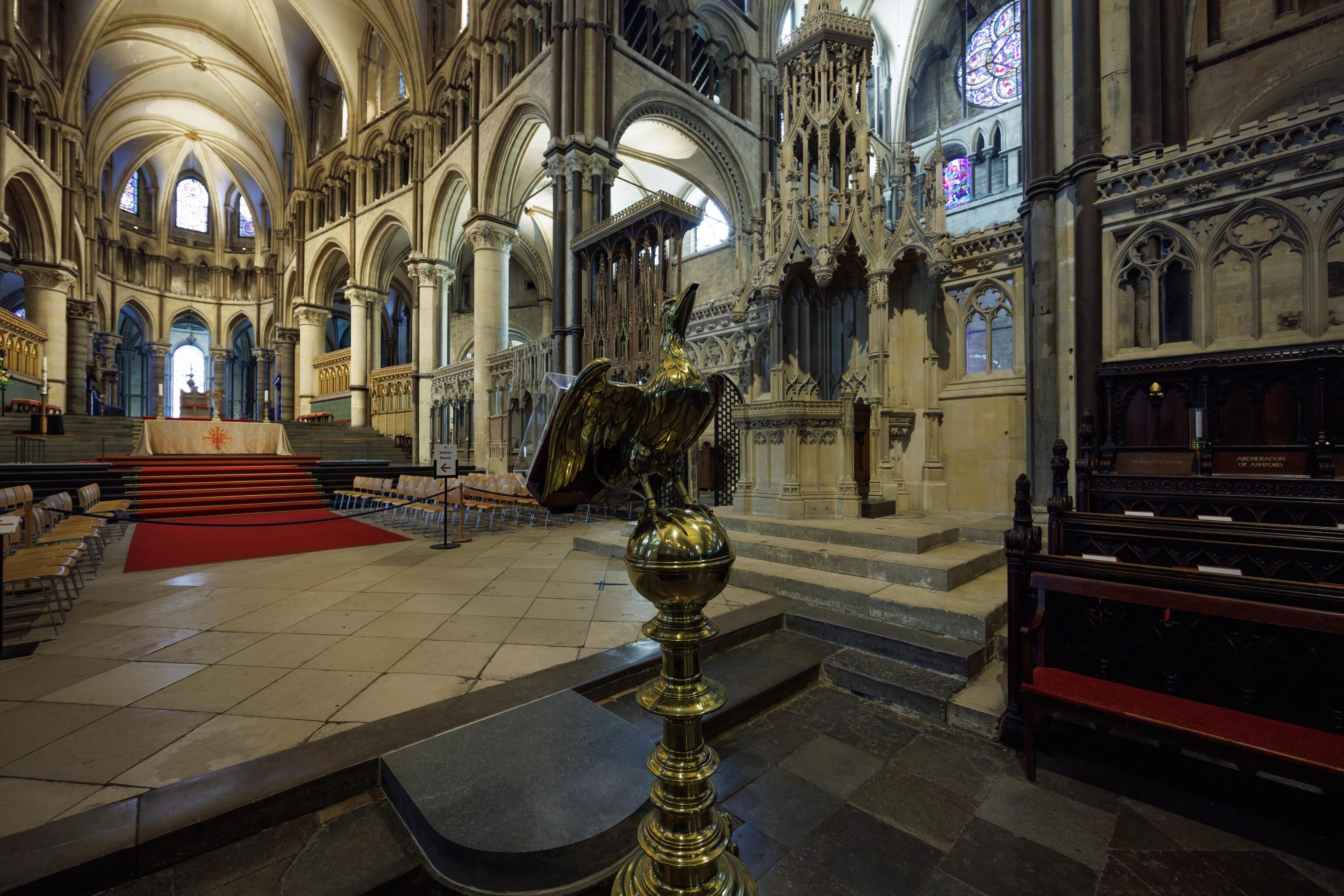
This eagle lectern was created in 1663! The linked article explains:
The eagle symbolism worked in several ways. It is associated with John the evangelist, whose gospel starts “In the beginning was the word…” – hence the link between the bird and the written word. In addition, the ball signifies the world, with the eagle spreading the word of God round the world. Also, as it soars upwards, it came to represent the resurrection and ascension of Christ. Finally, it served to emphasise the fact that the, in the Protestant church, belief would be based on the bible rather than the church.
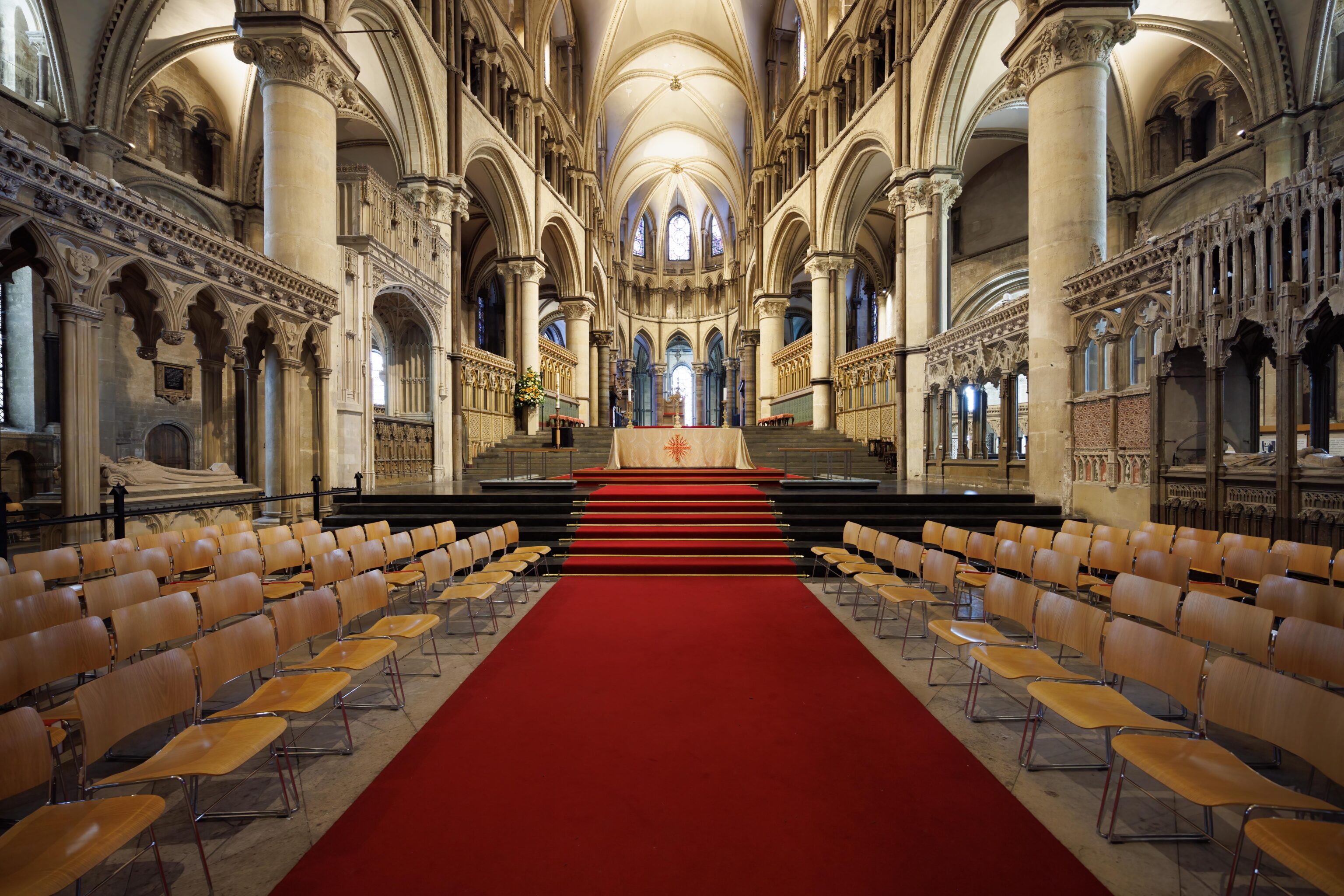
This is the view behind the eagle lectern in front of the roped off area. The quire is behind us.
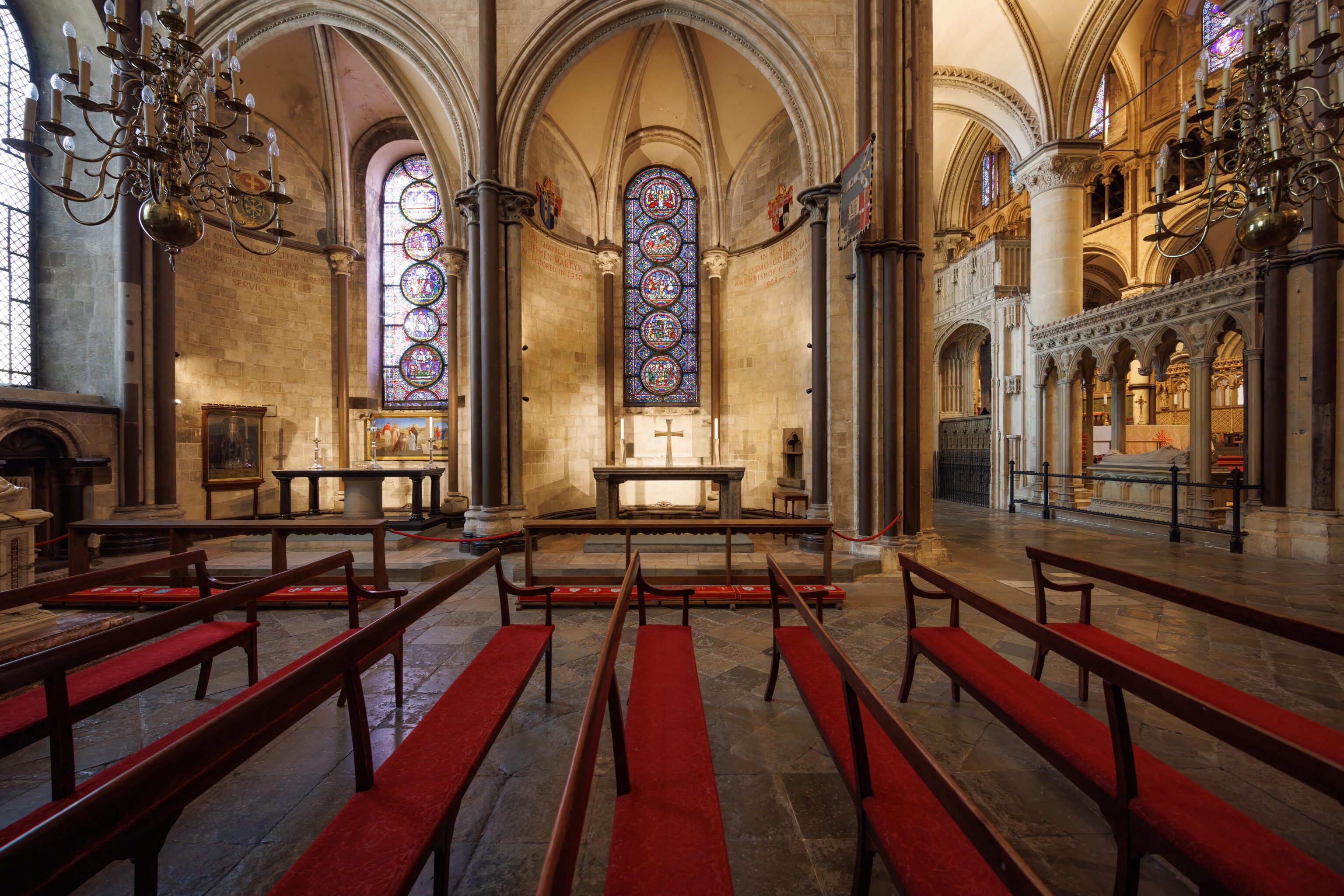
We walked to the left of the roped off area. This section is the north wing of the transept.
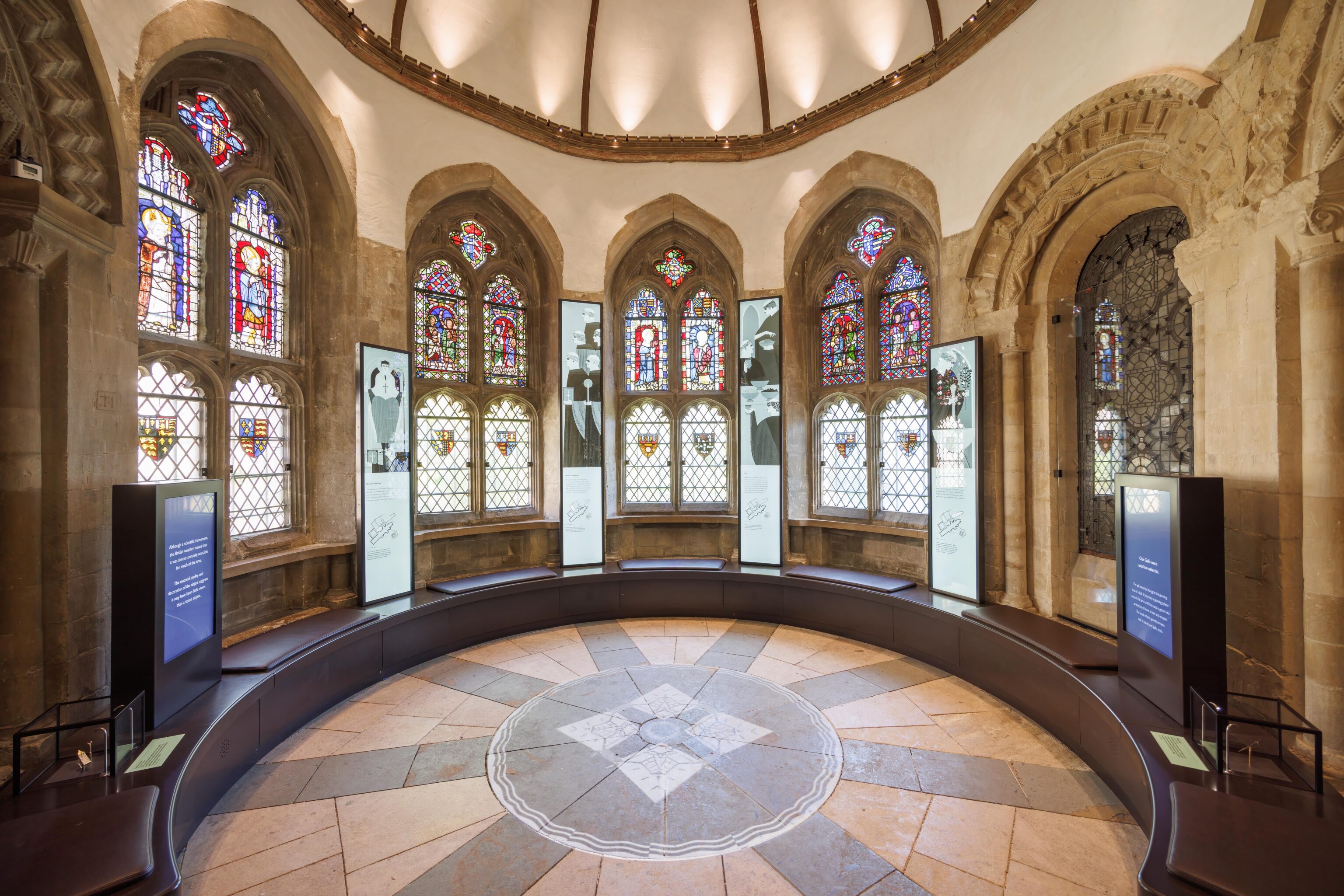
This circular room, to the north of the transept, is the Water Tower.
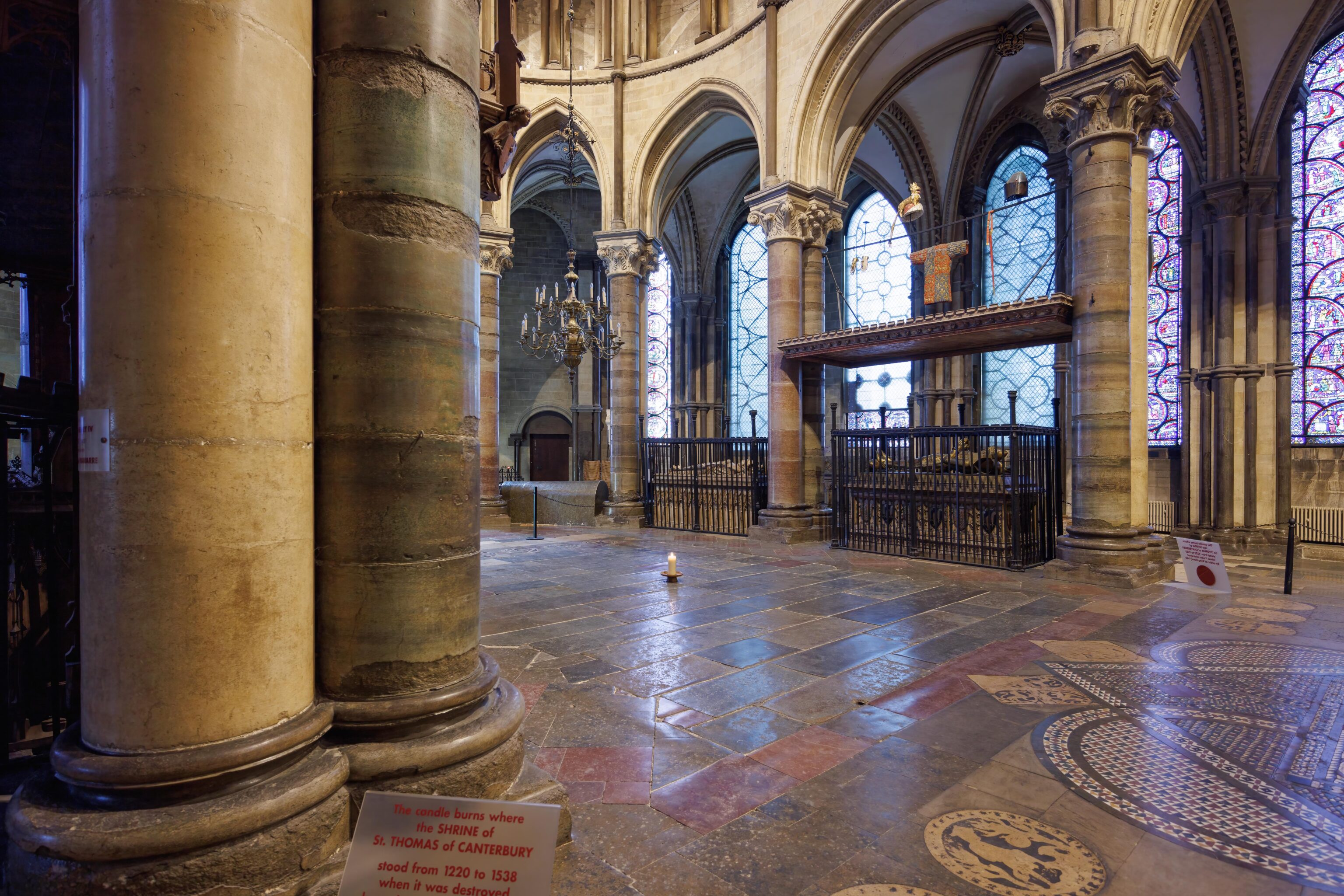
This candle marks the site where a shrine to Thomas Becket once stood. There is a digital recreation of how the shrine looked in 1408. The shrine was destroyed by King Henry VIII during the English Reformation.
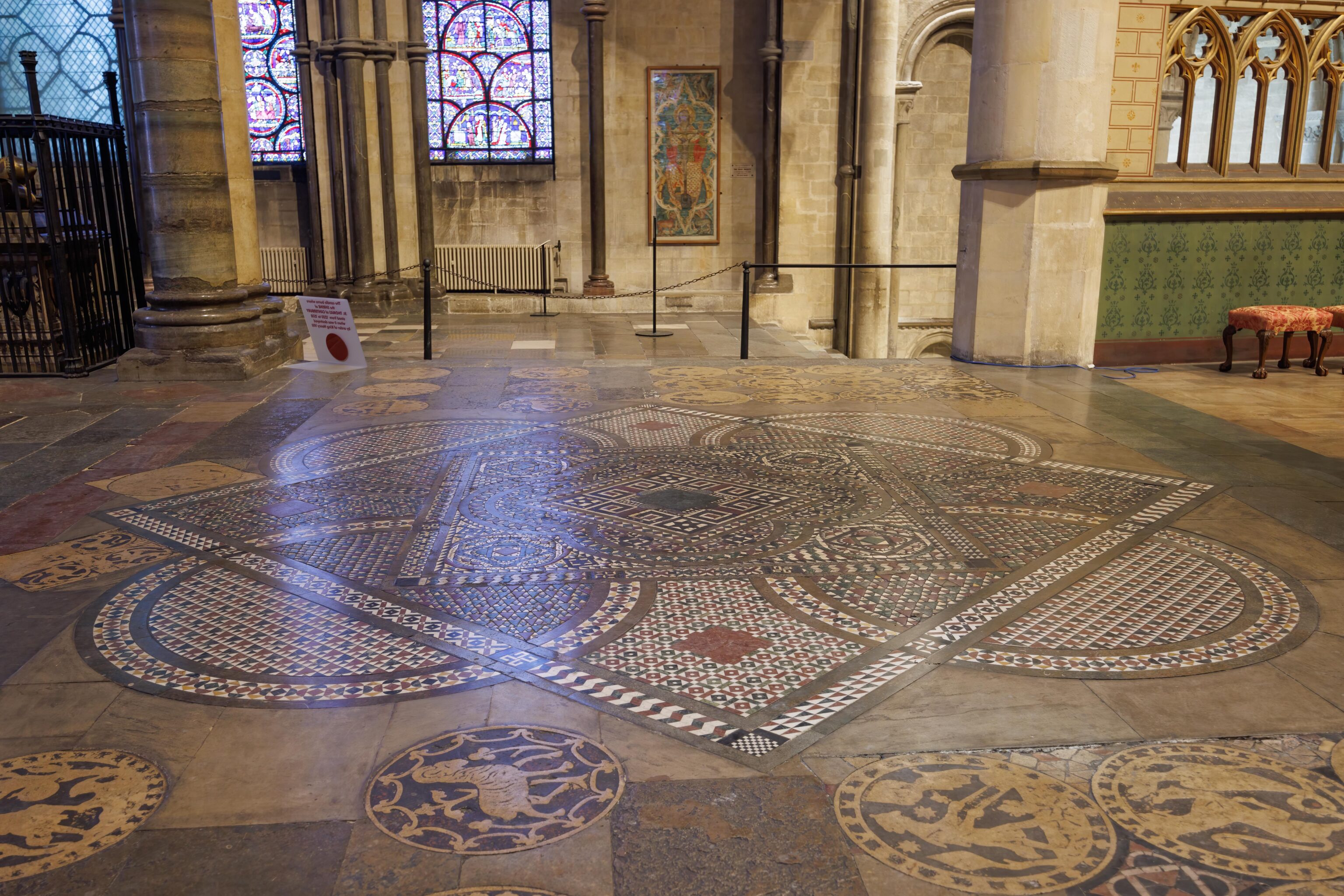
The intricate patterns on the floor to the west of the candle.
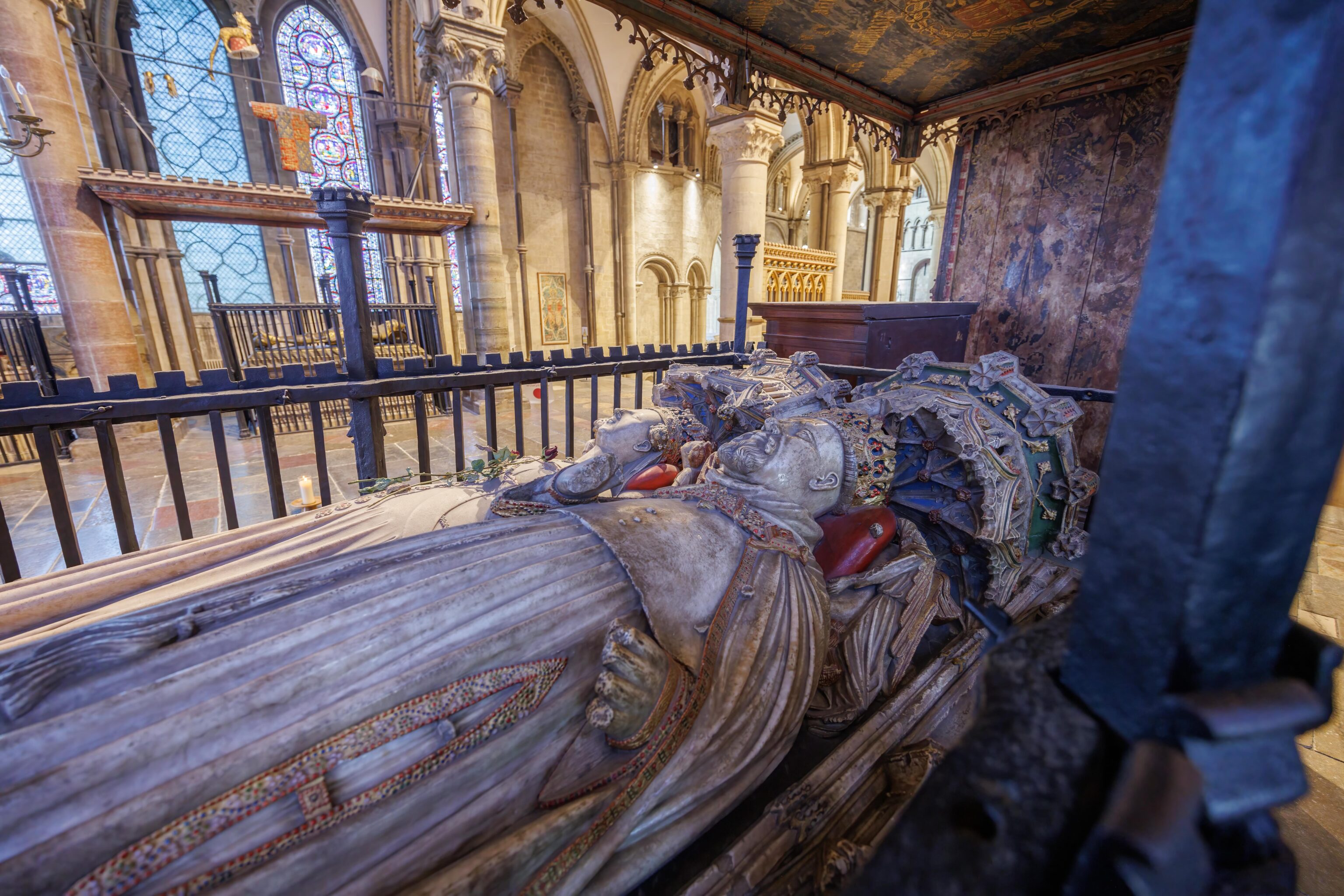
King Henry IV and Joan of Navarre are buried in the cathedral.
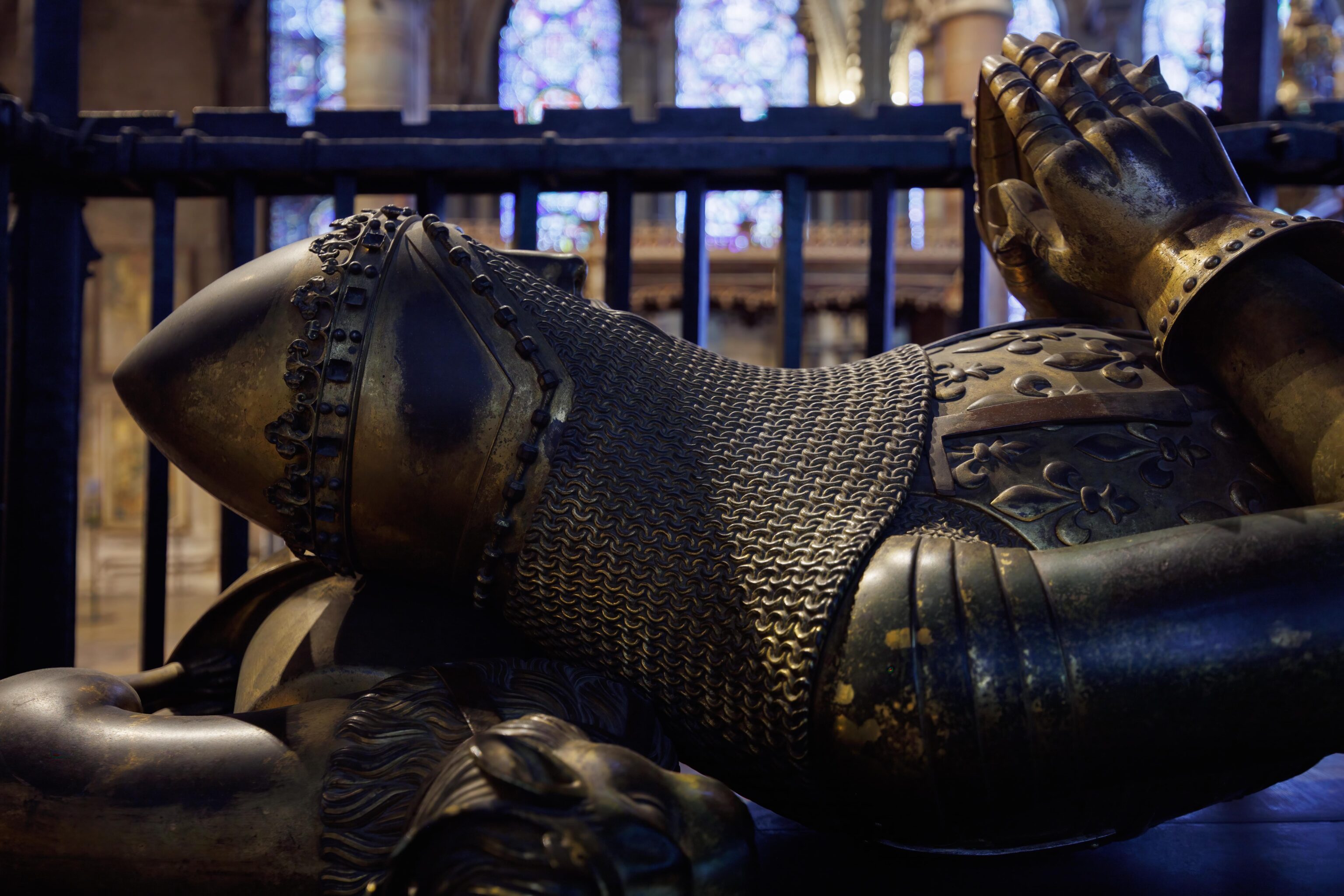
Also buried here is The Black Prince, the oldest son of King Edward III. He died before the king and thus never became king himself. Incidentally, he died of dysentery. Just like in Oregon Trail…
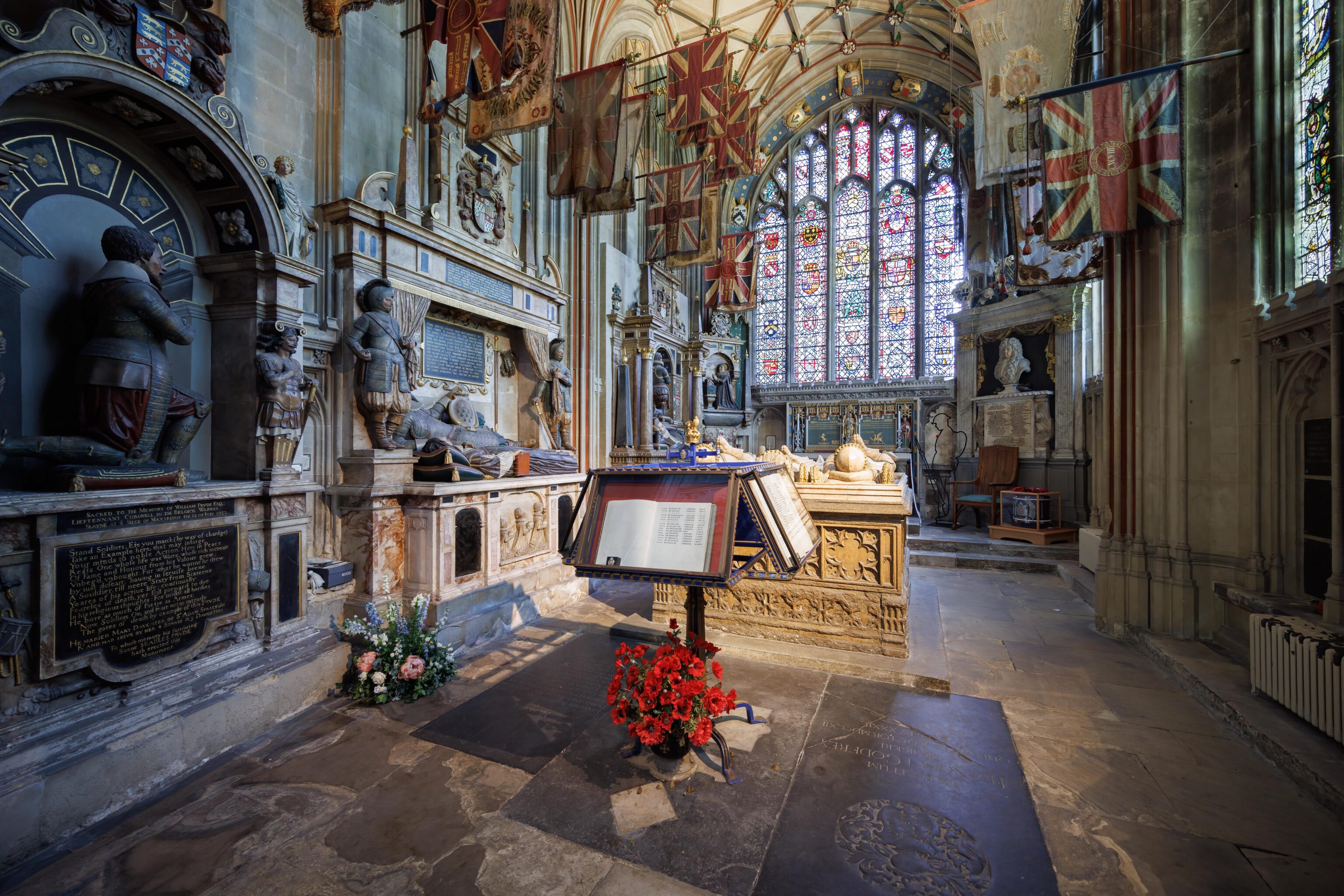
The Warriors’ Chapel, in honor of the Royal East Kent Regiment, also known as the Buffs. The Buffs nickname apparently comes from their uniforms.
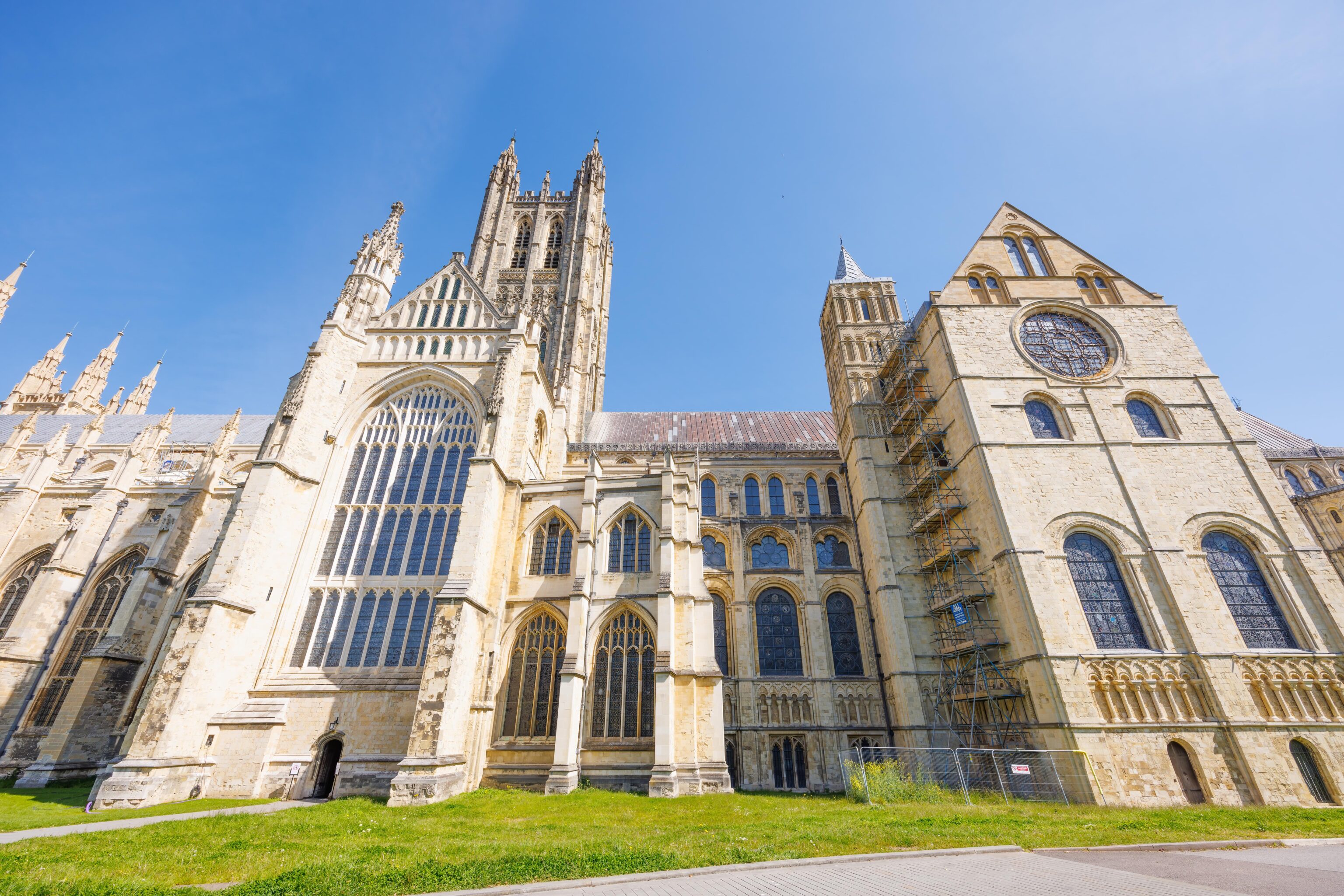
The chapel was next to the exit door. We decided to walk around outside a bit to see the cathedral from different perspectives.
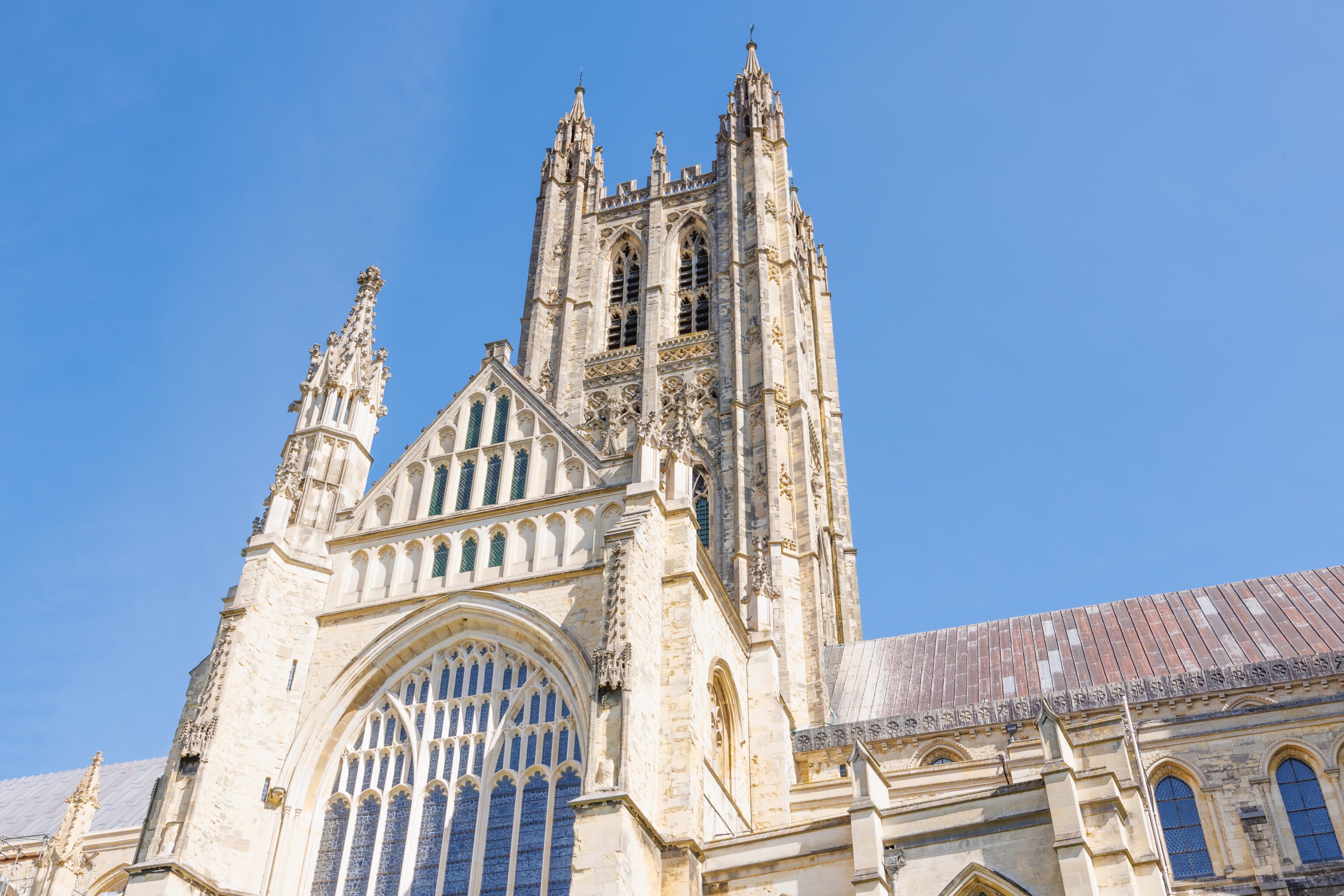
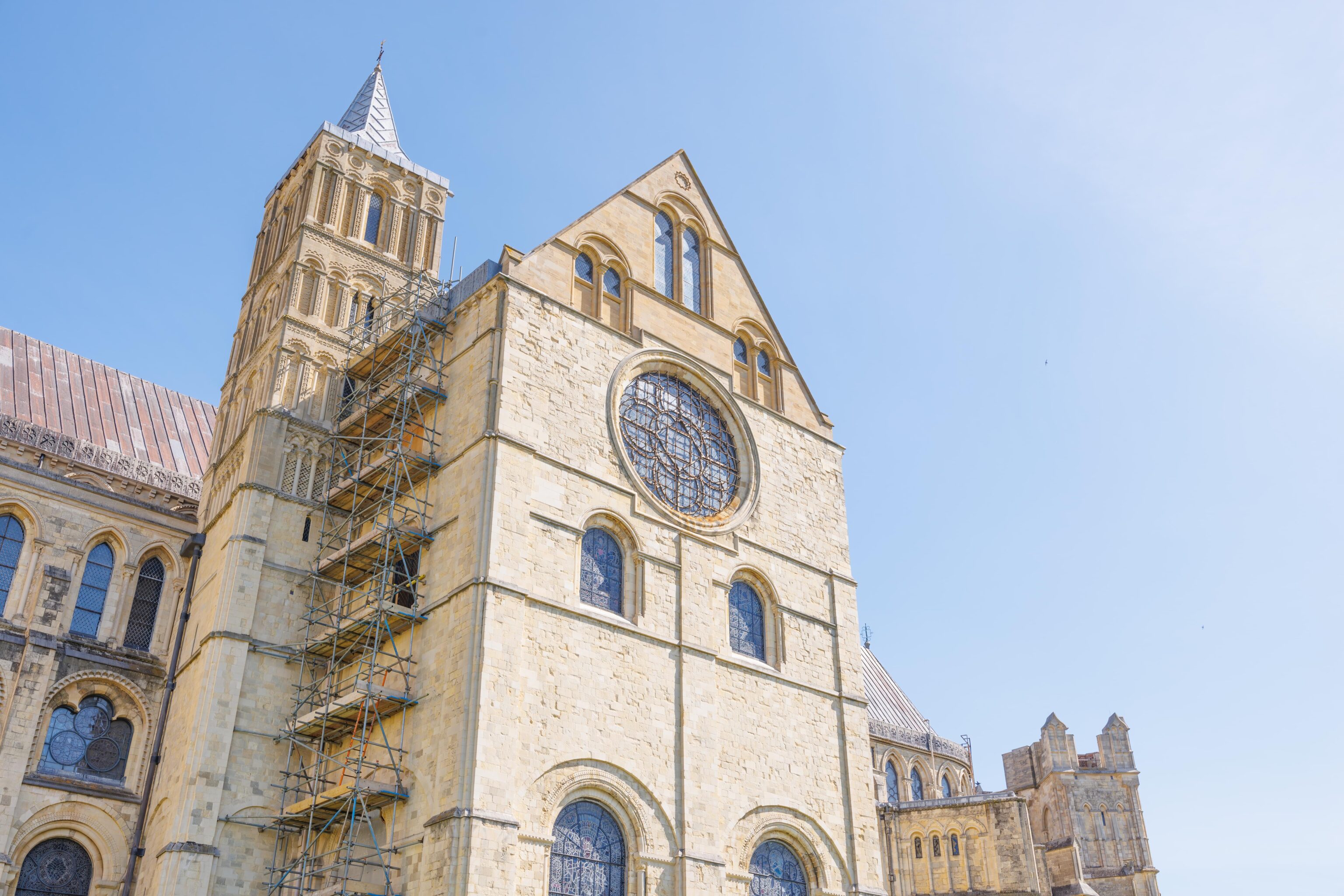
We were still relatively close to the enormous cathedral.
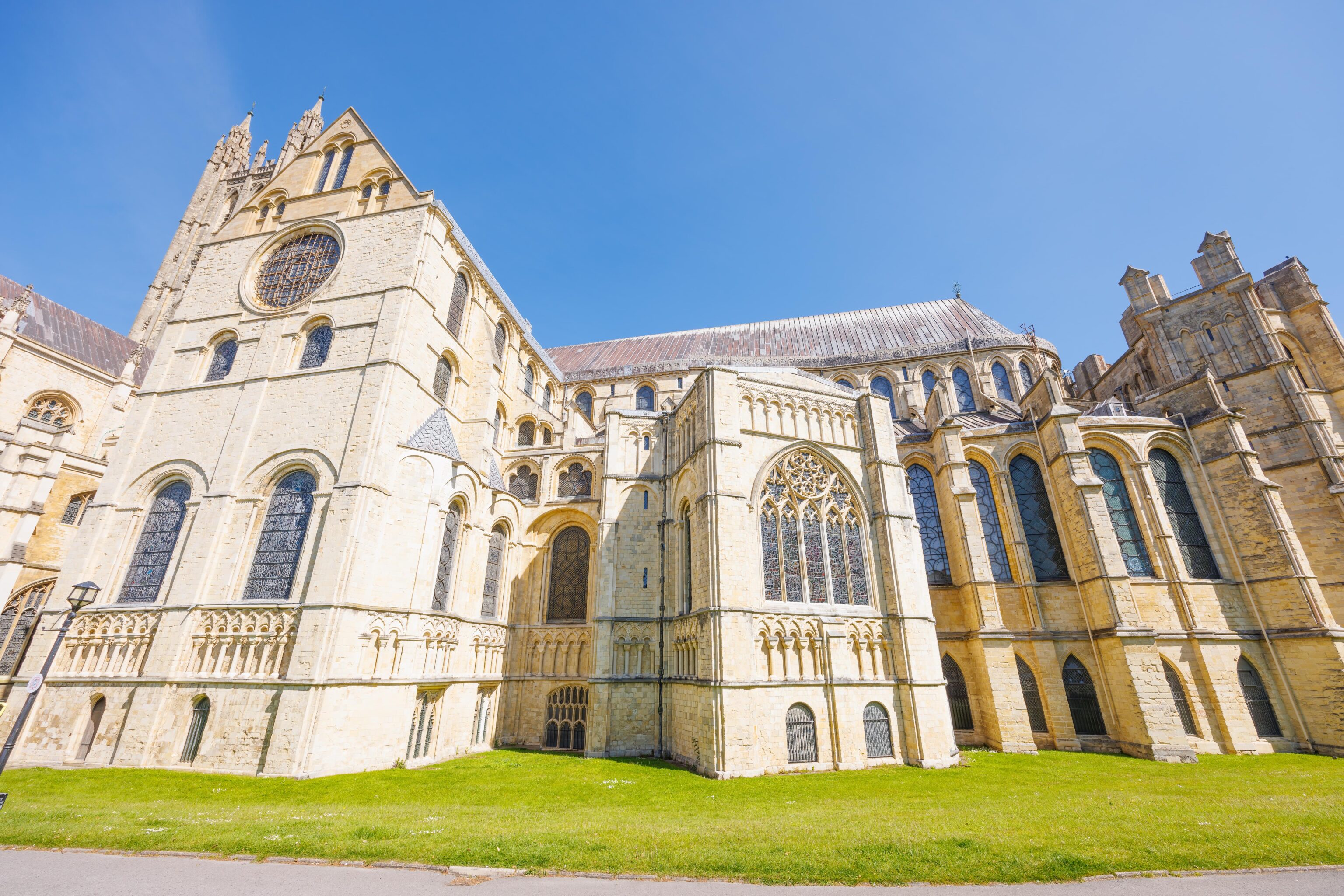
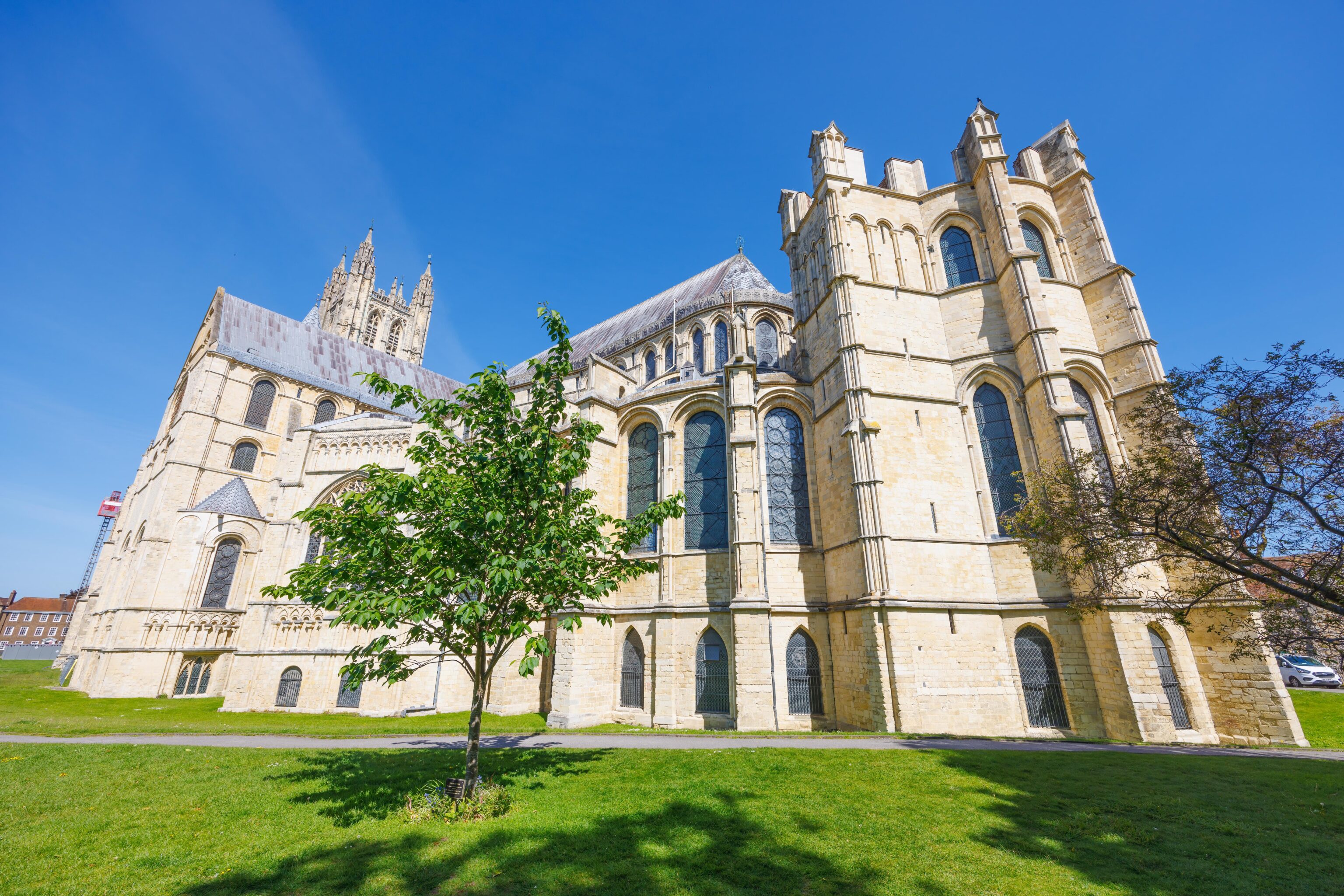
We headed counter clockwise around the cathedral, first heading east.
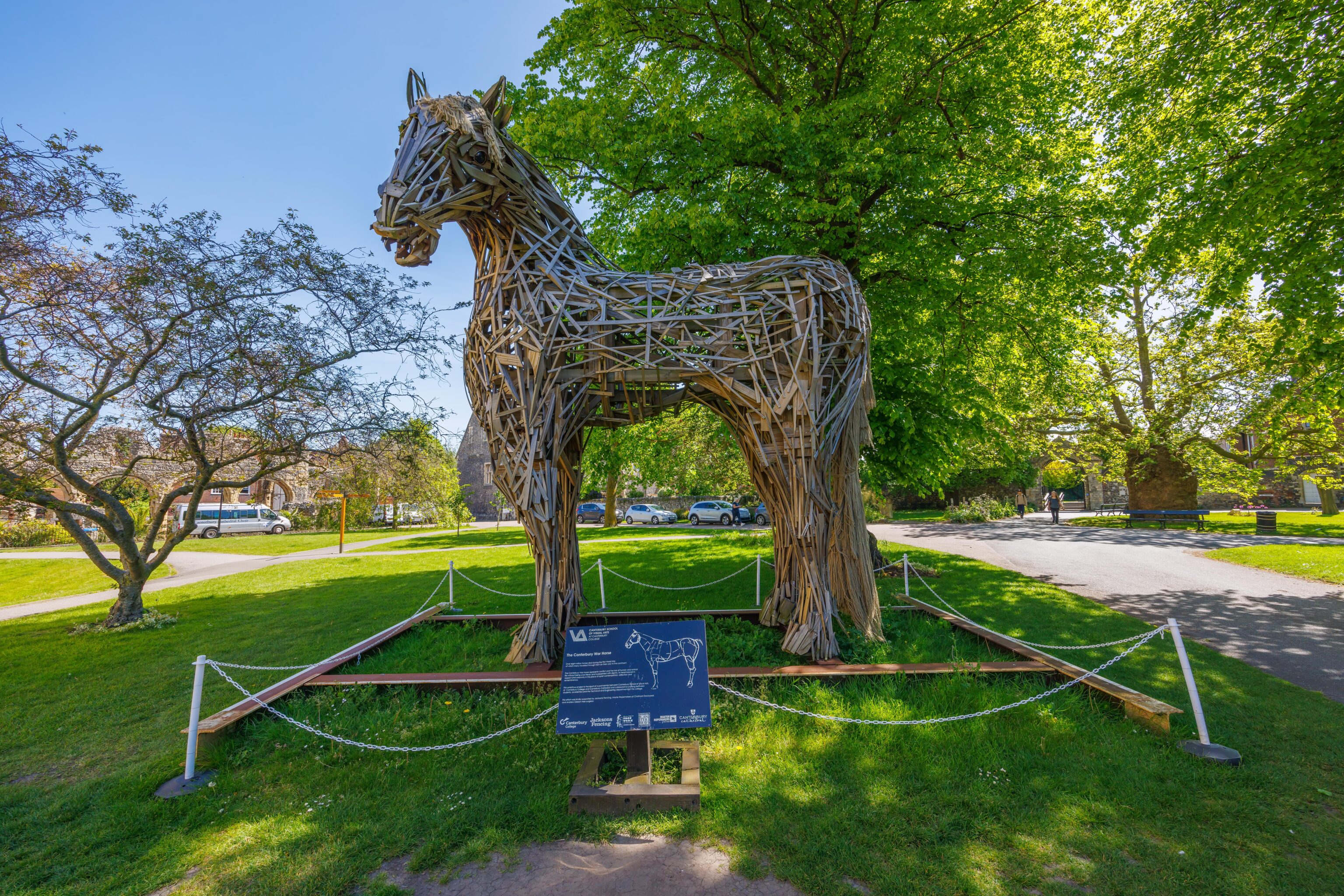
This horse was erected as a memorial to horses that died in war, over 8 million in World War I! Quite a significant number, though not even close to the number of people that died as a result of that war.
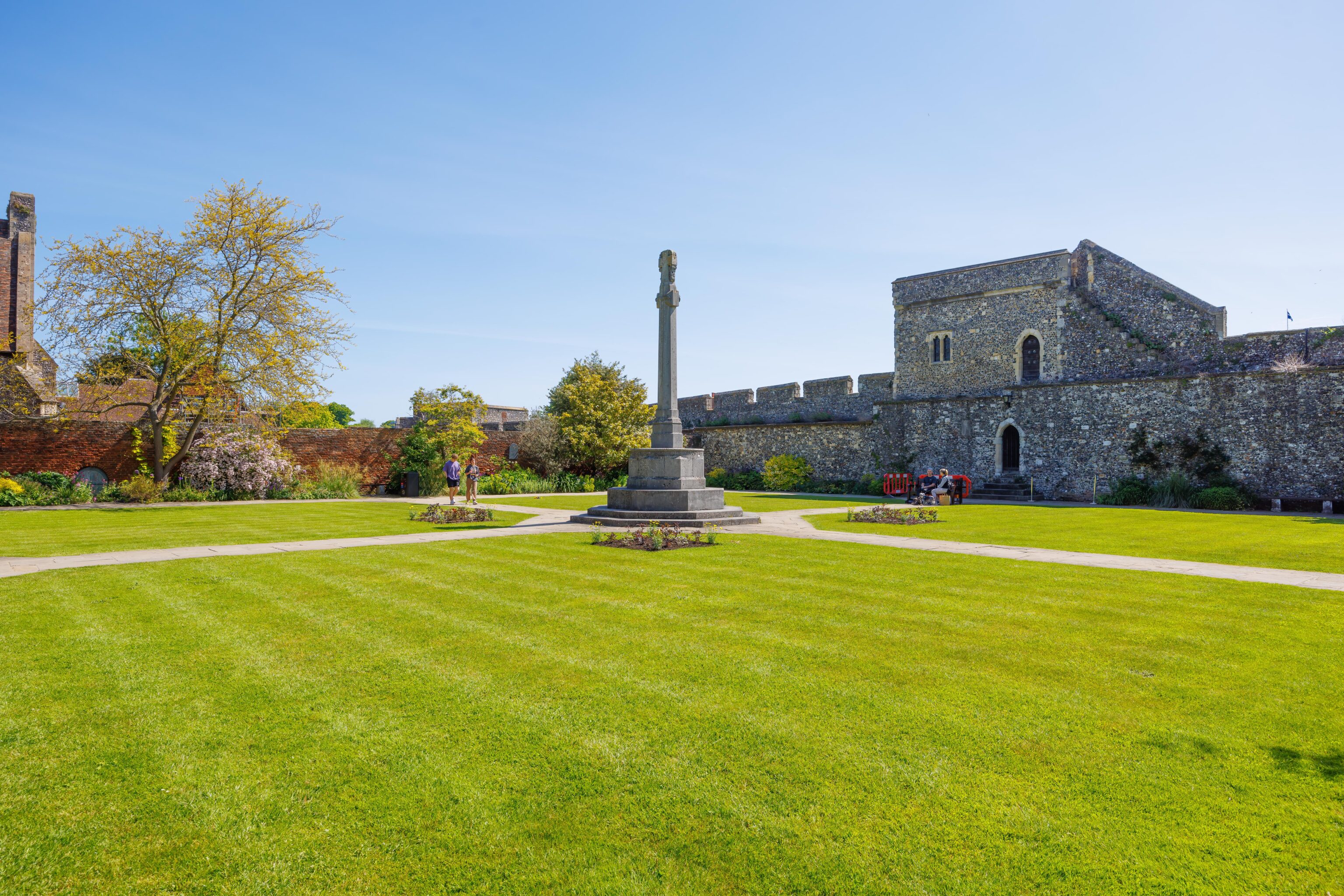
The Kent War Memorial is at the very eastern edge of the cathedral property. We were more or less on the other side of the wall in the background yesterday after returning from St. Augustine’s Abbey.
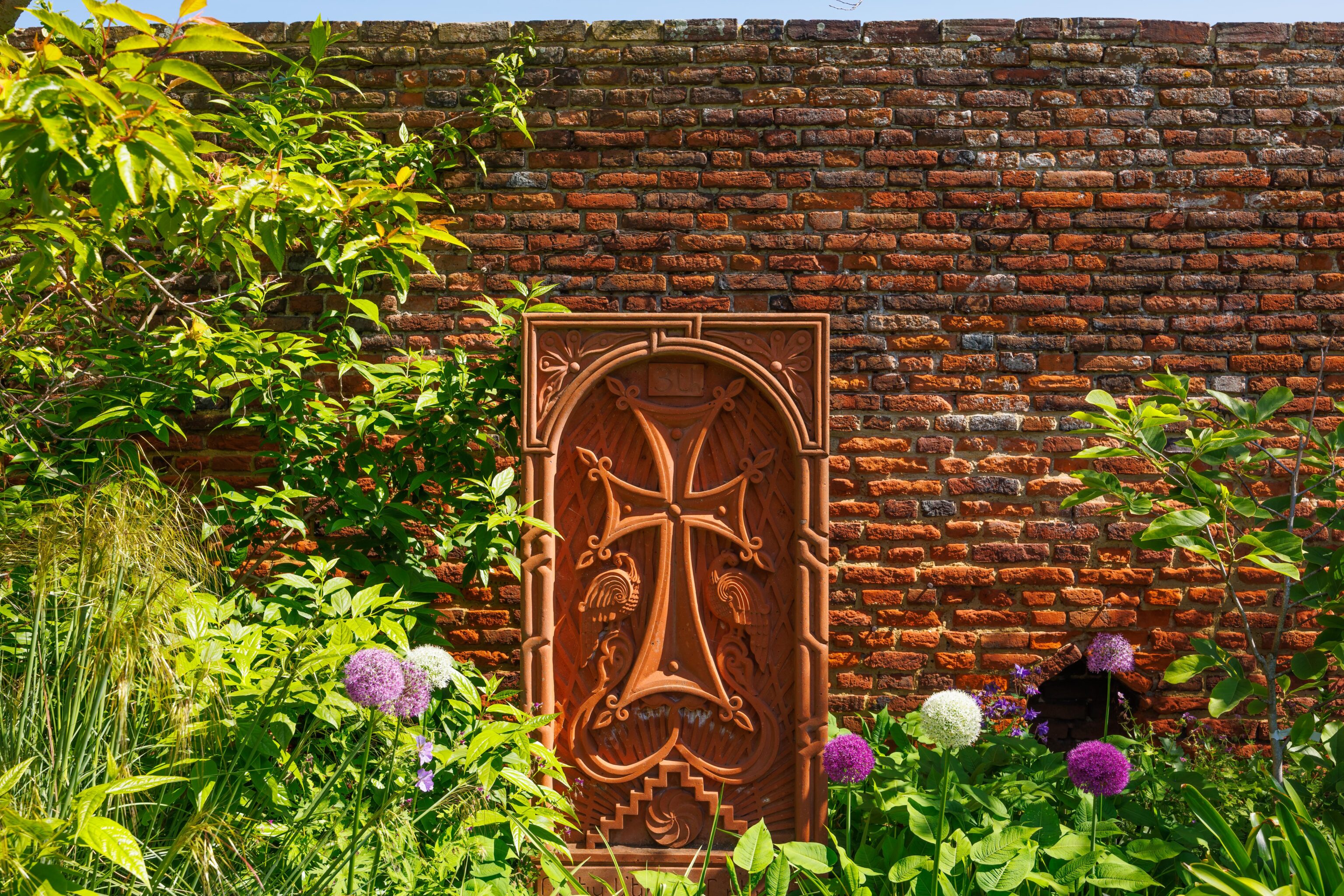
A brick wall separates the war memorial from the rest of the church property to the north.
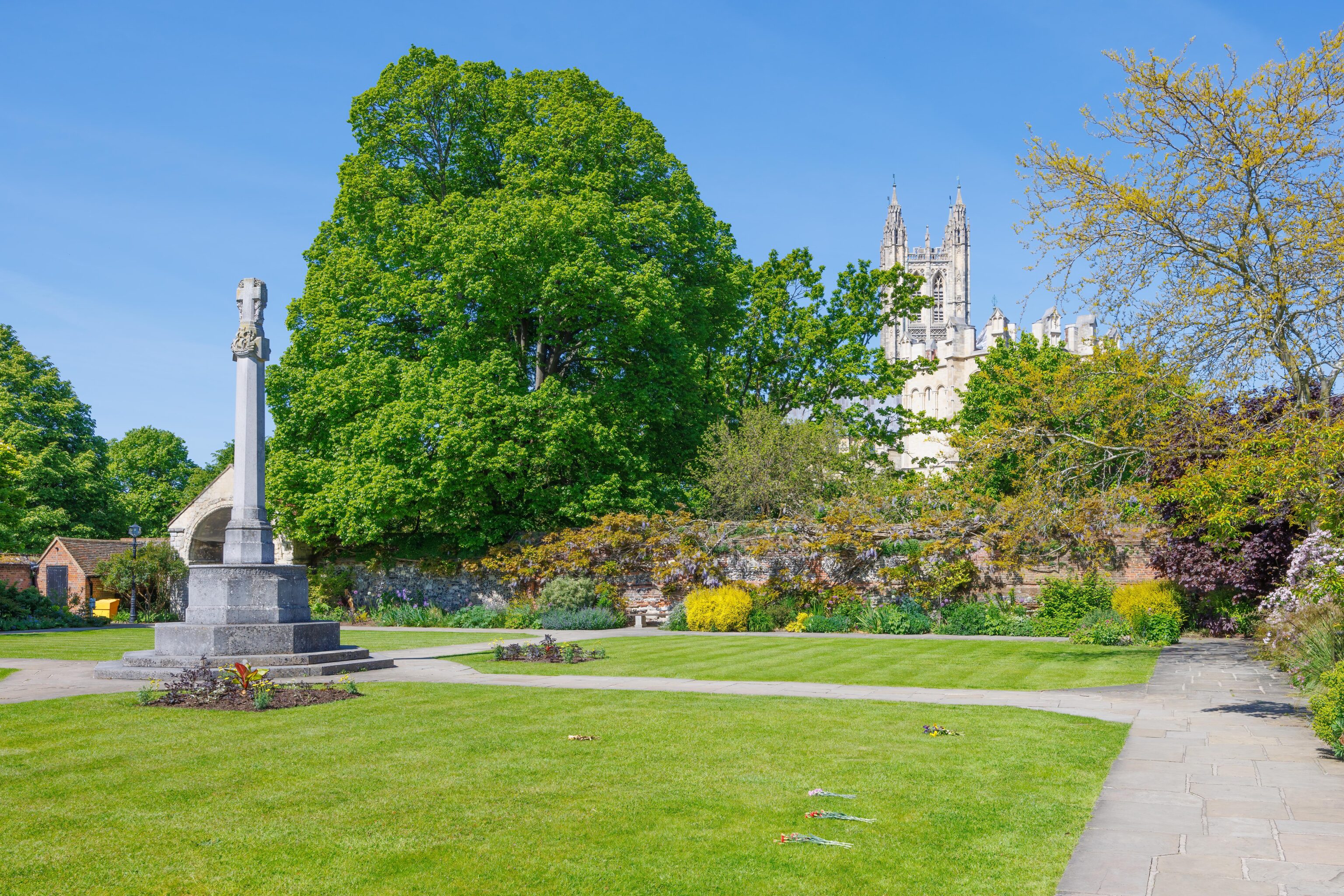
The cathedral can be seen to the west of the memorial.
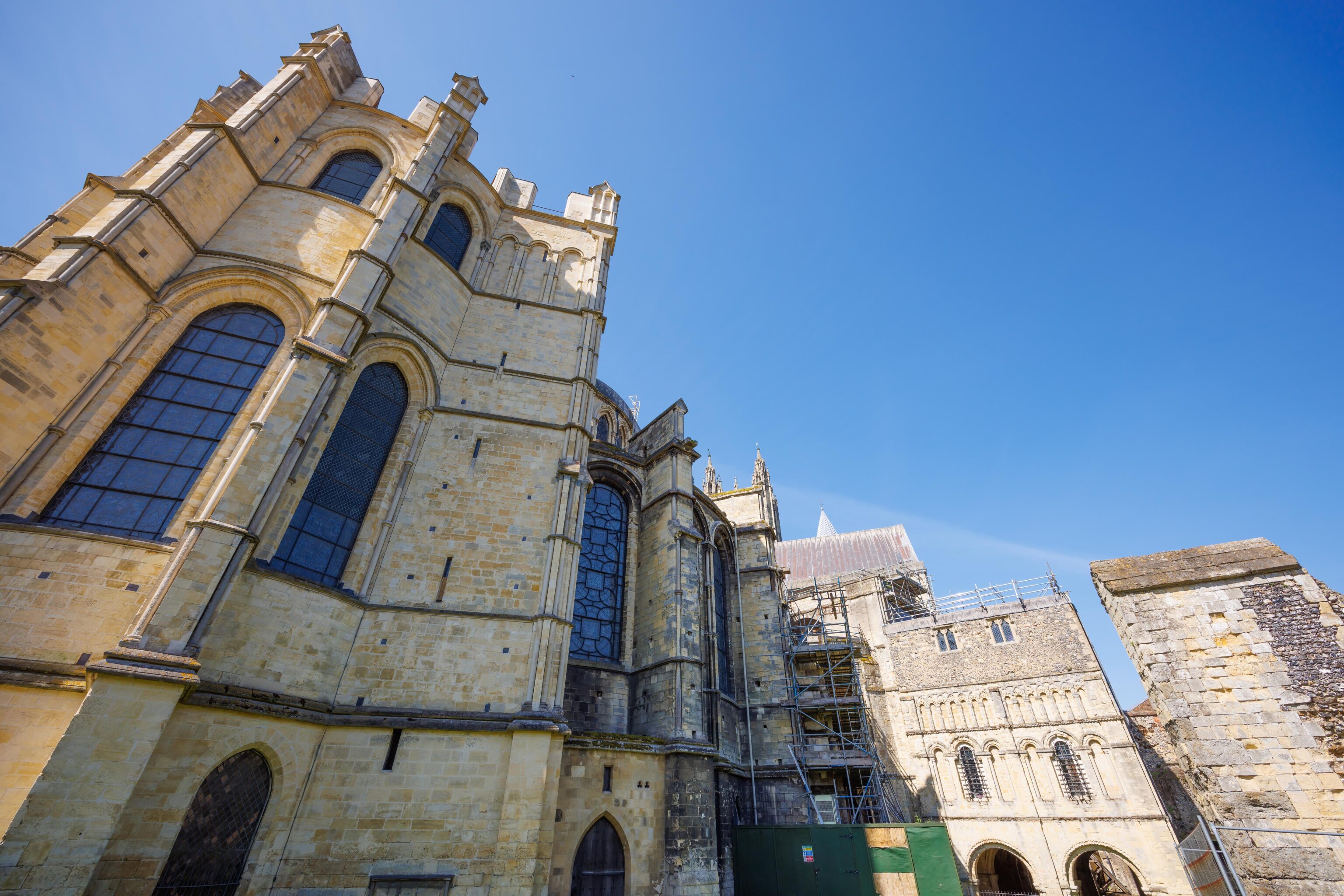
We continued on our walk around the cathedral, heading west on the north side of the building.
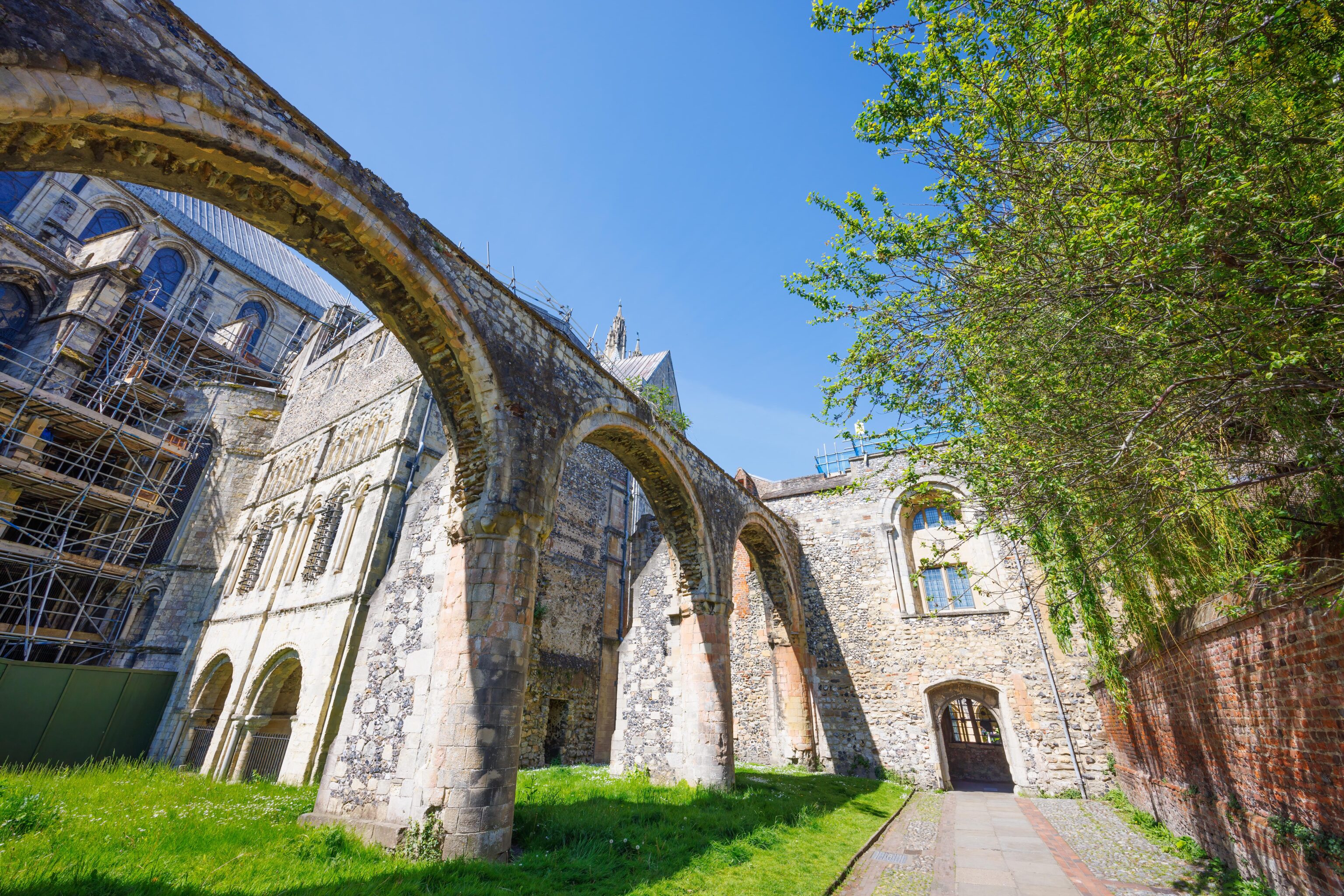
Was there some other building here before?
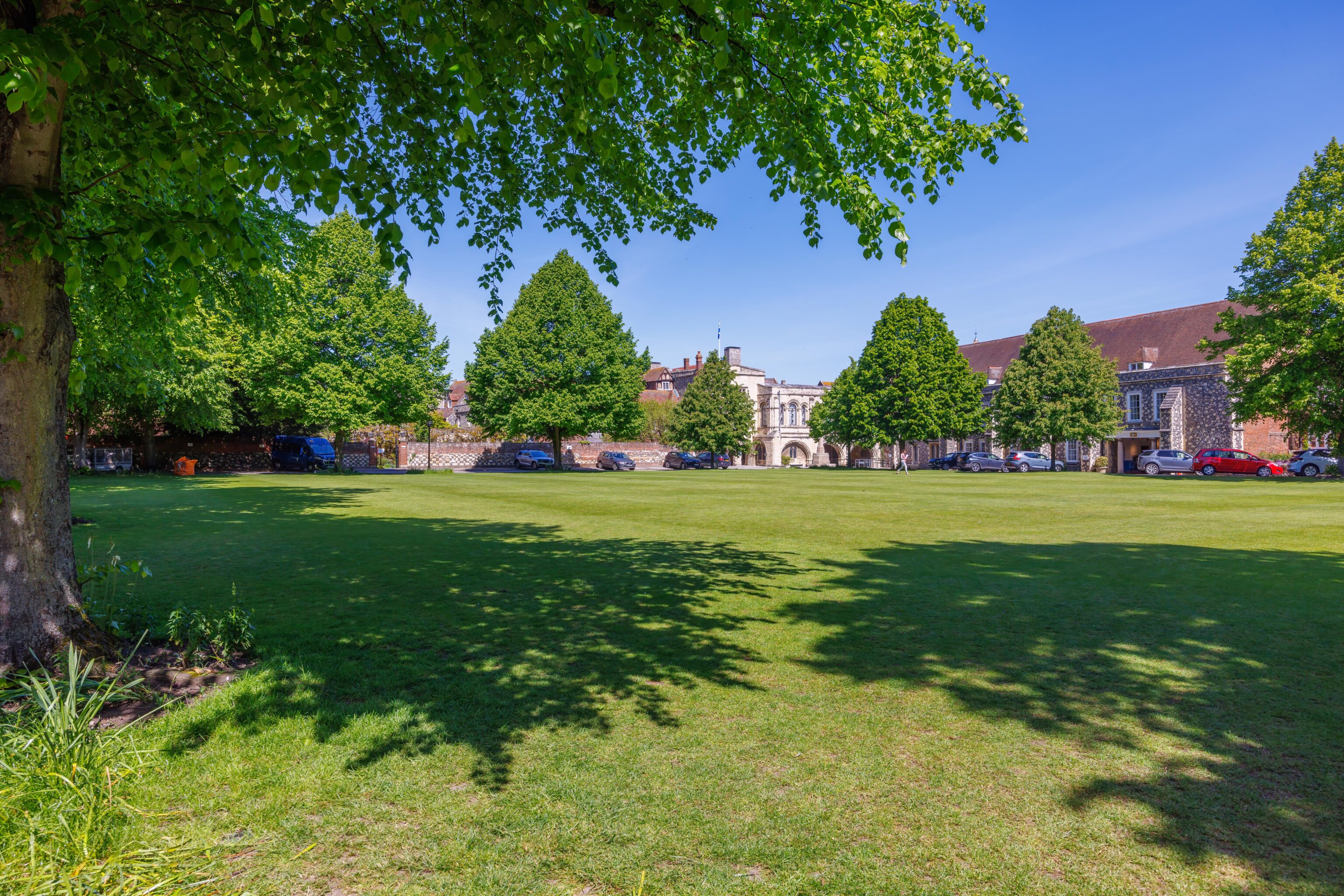
This seems to be The King’s School. It is just to the north of the cathedral and was formerly part of the church until Henry VIII broke away from the Pope and disbanded many church related assets. It may be the world oldest surviving school. It seems to be public boarding school now.
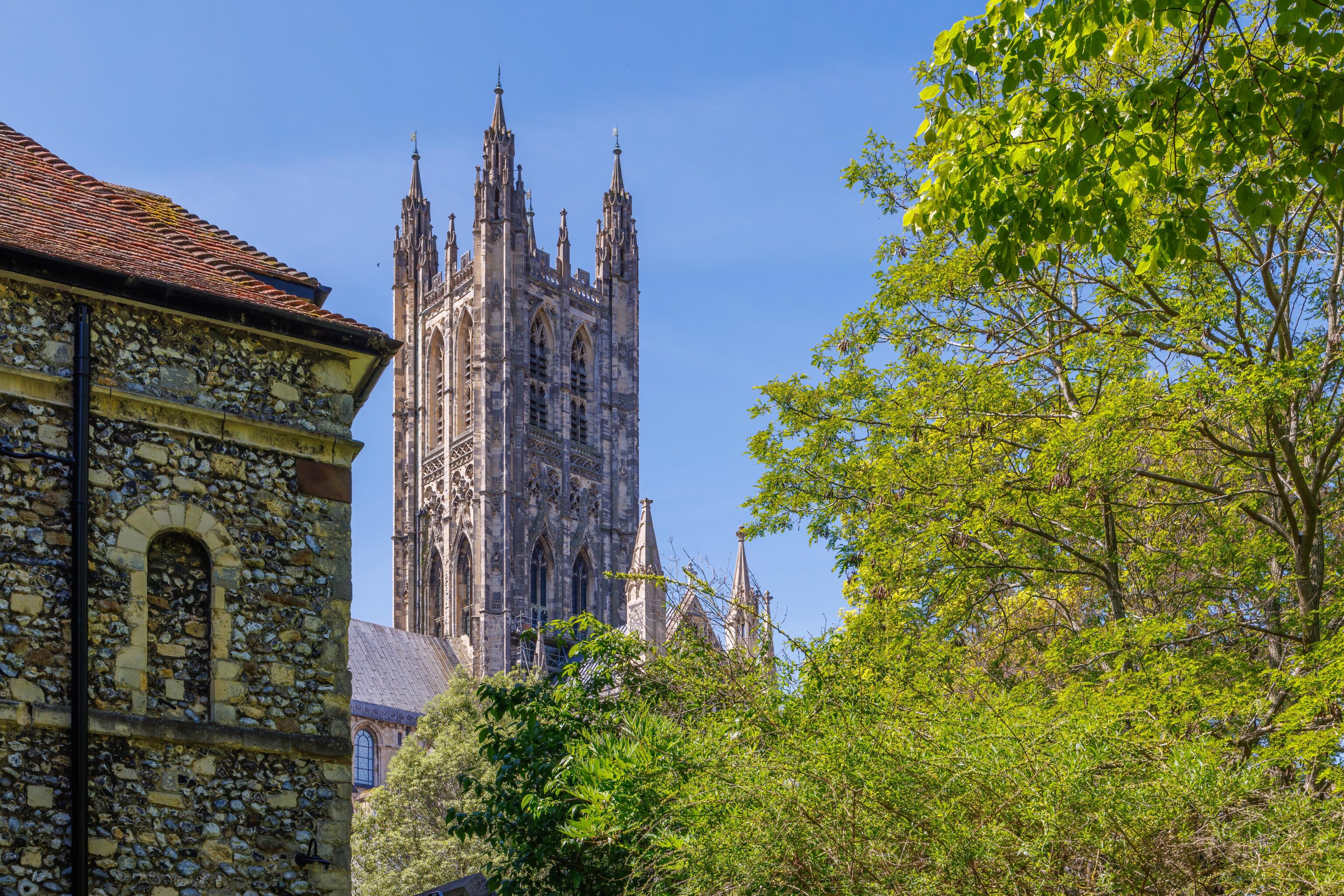
We headed back to the cathedral.
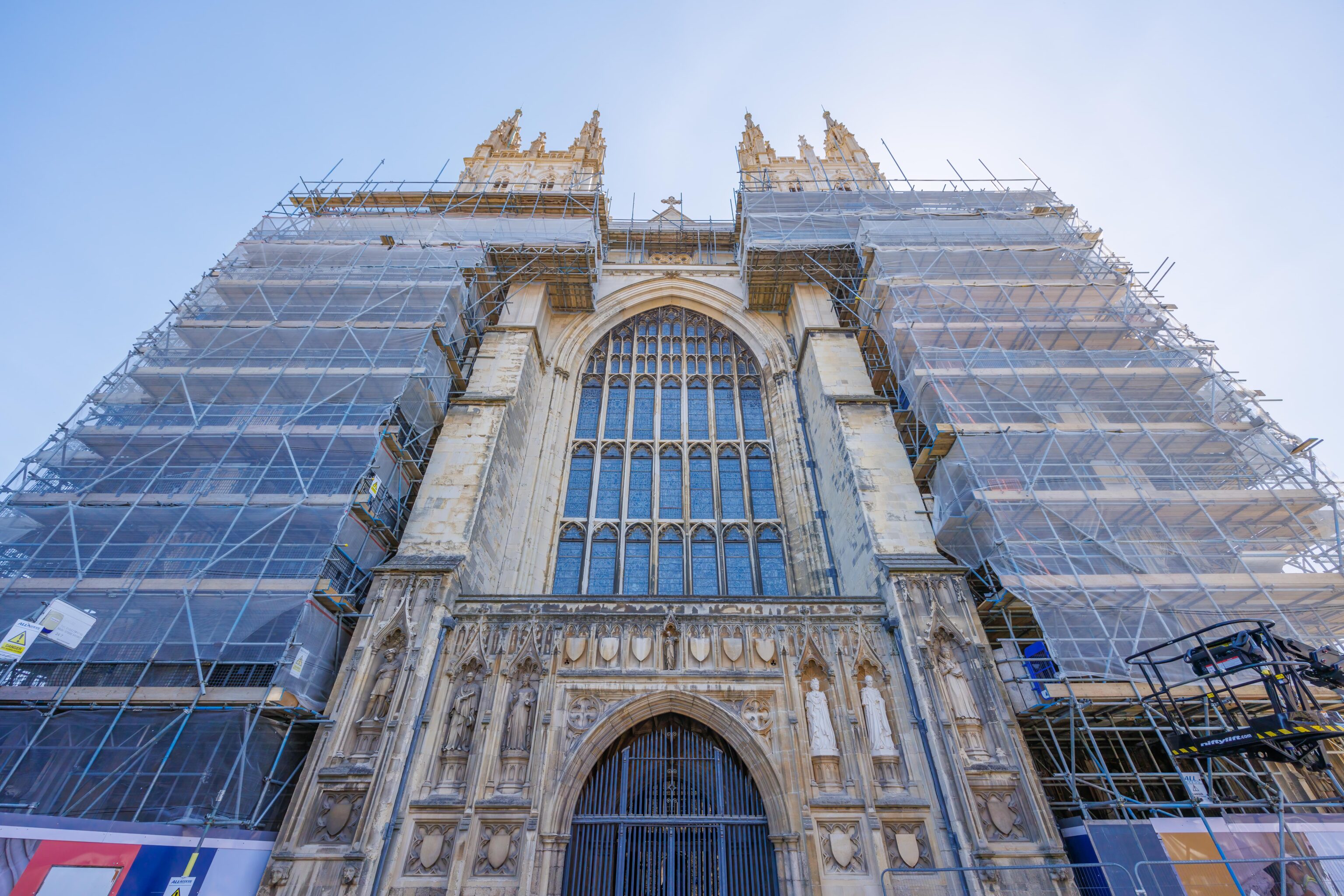
After passing through the cloisters again, we exited on the west side of the cathedral. We passed by the west end of the building where we first saw construction when we arrived.
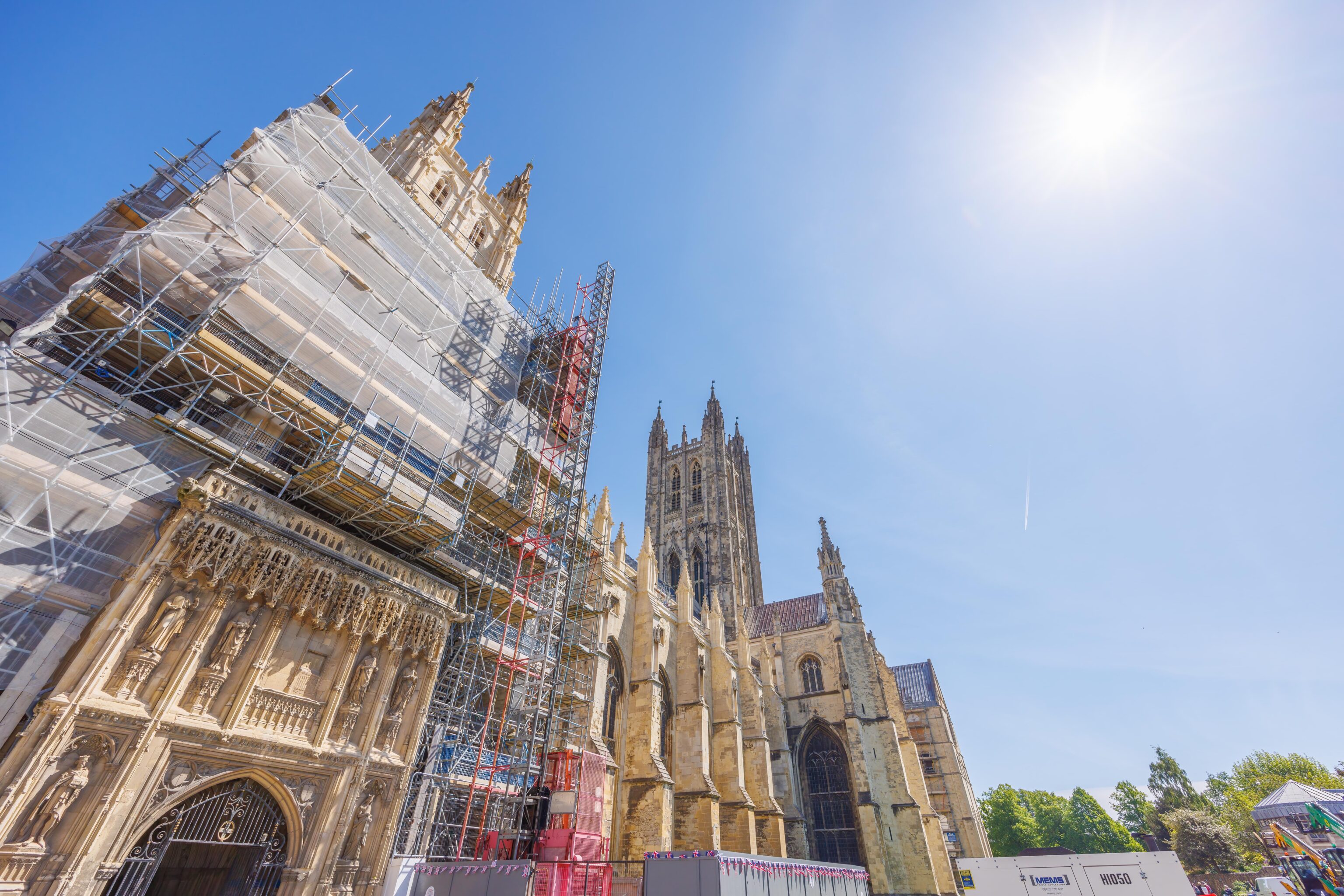
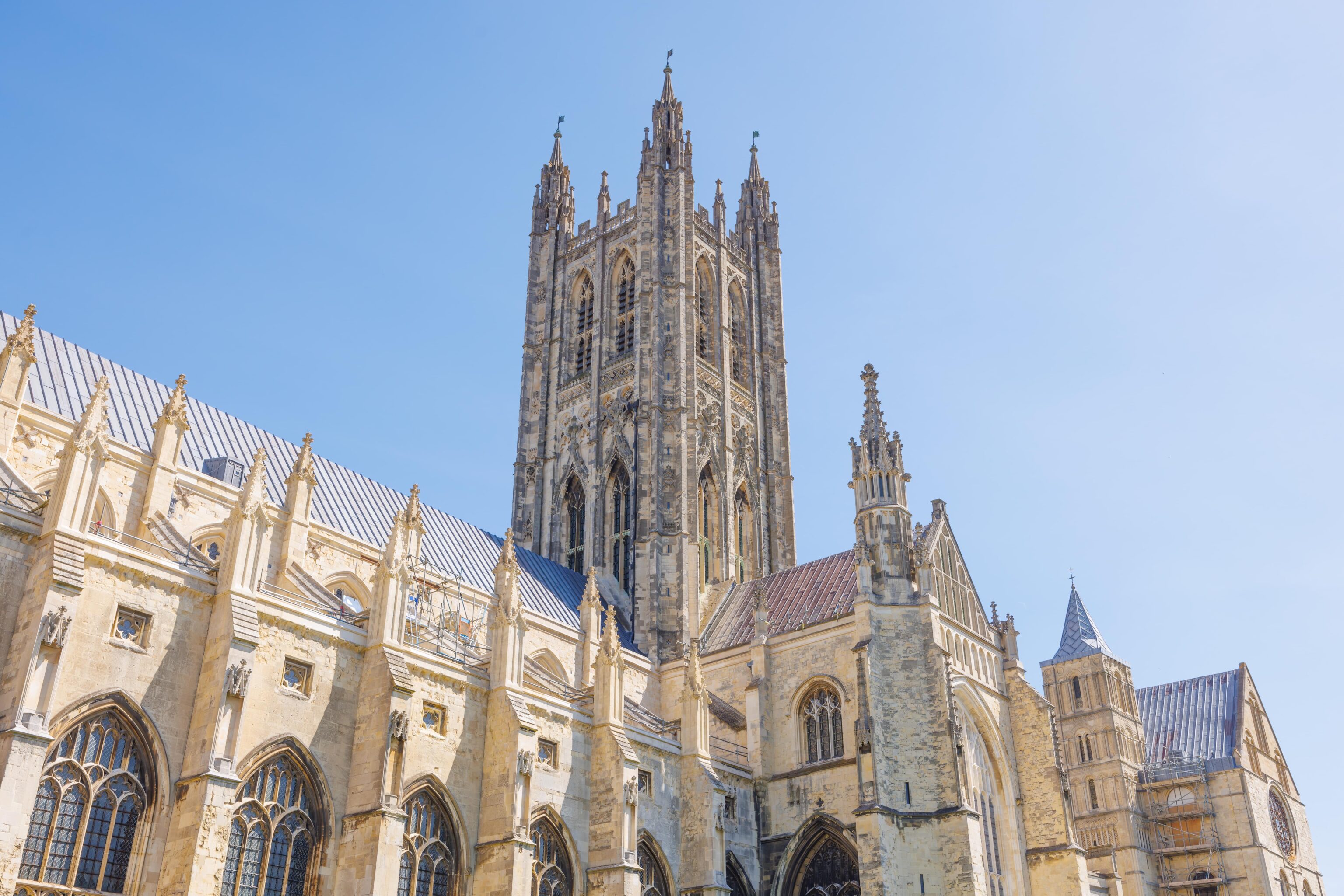
Time to go! One last look at the cathedral before exiting via the gift shop!


